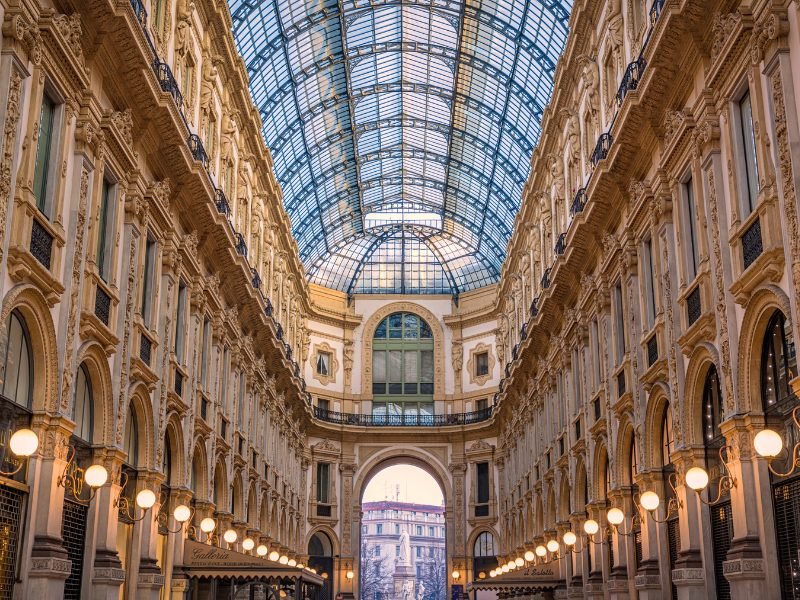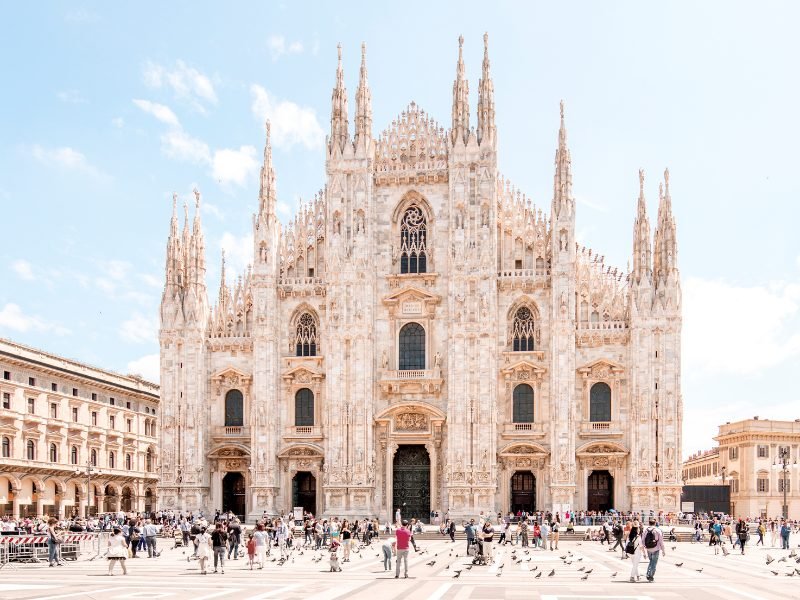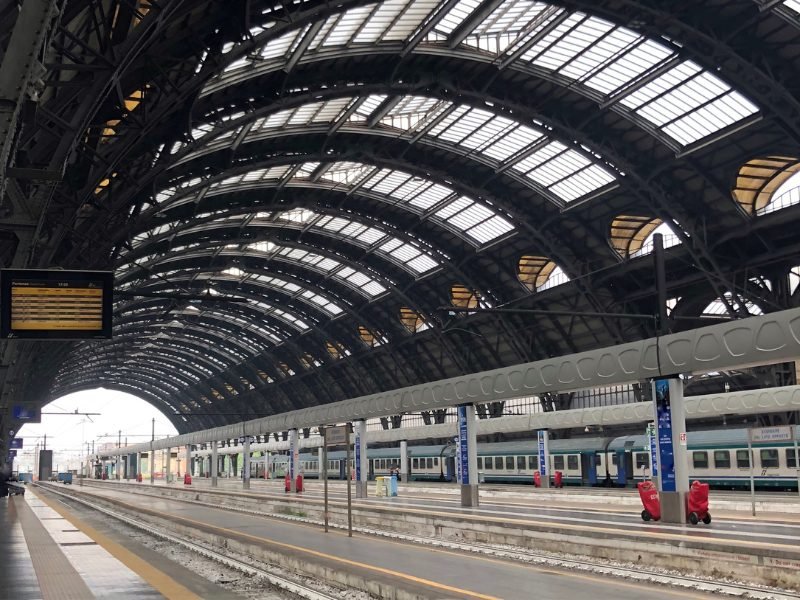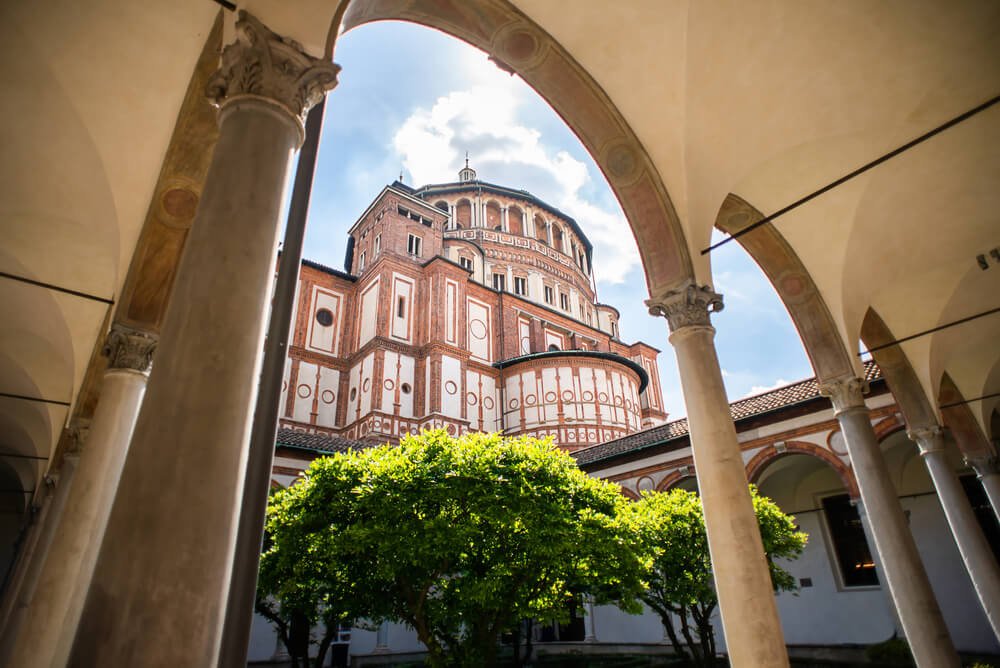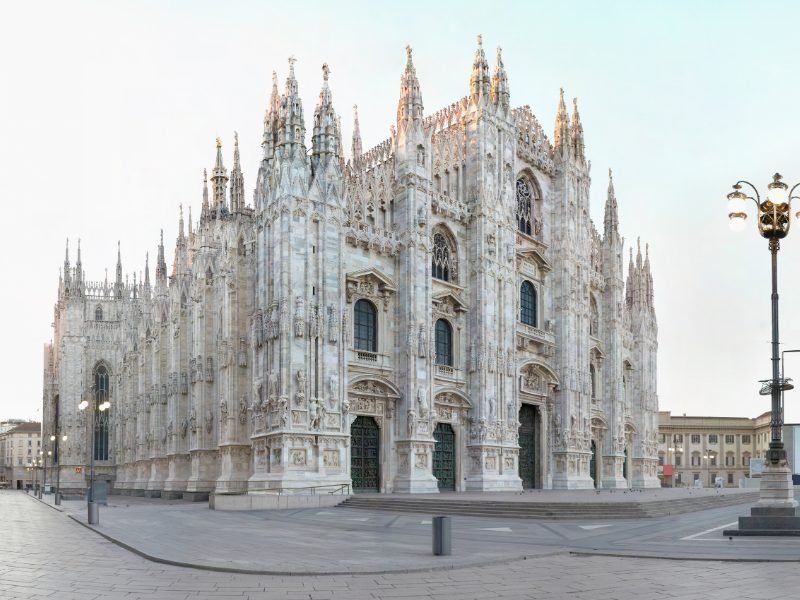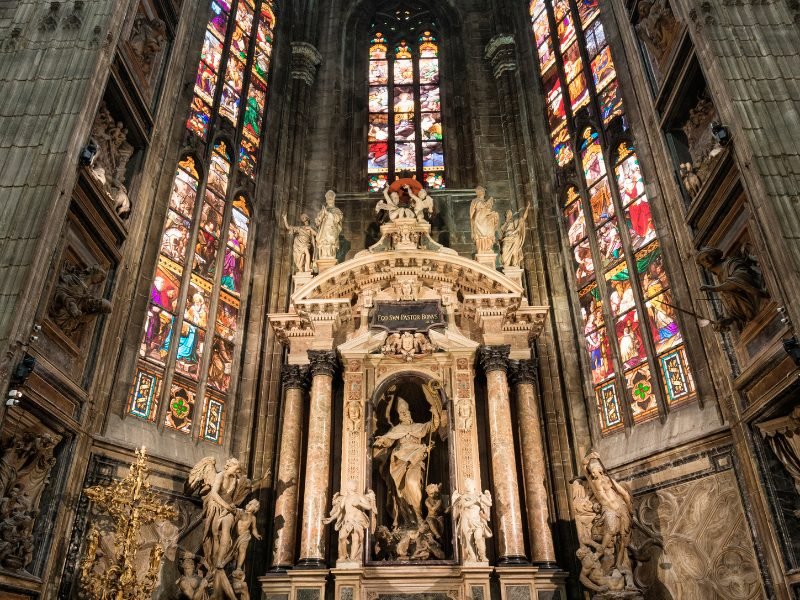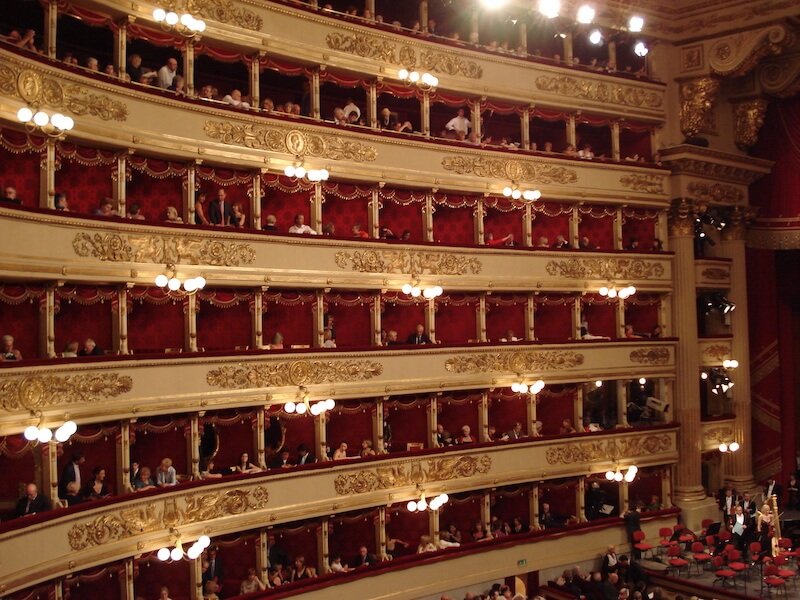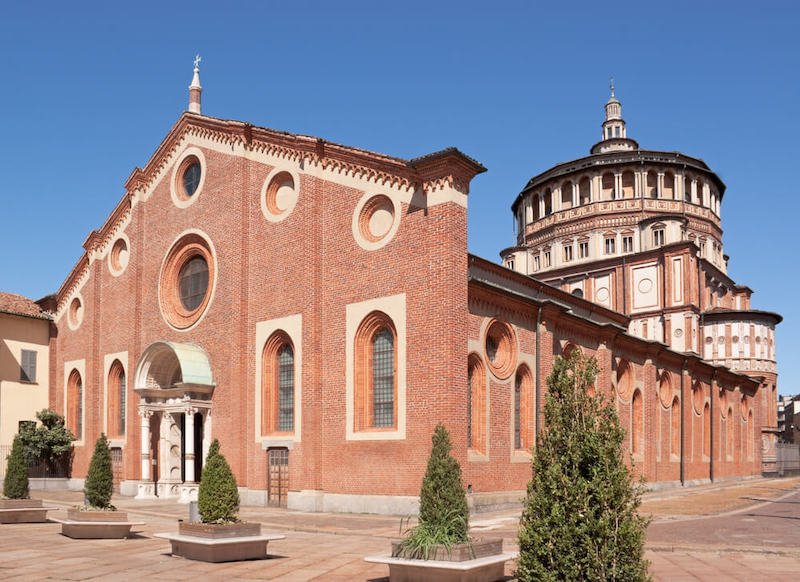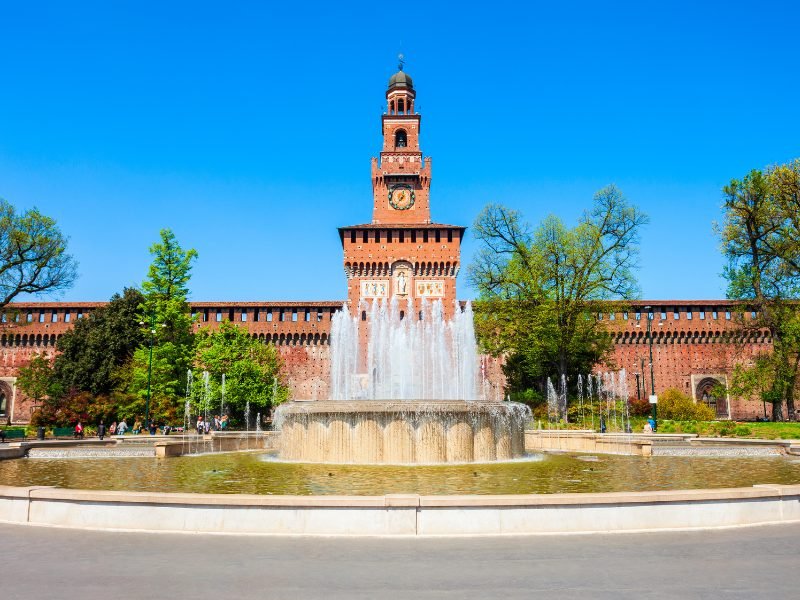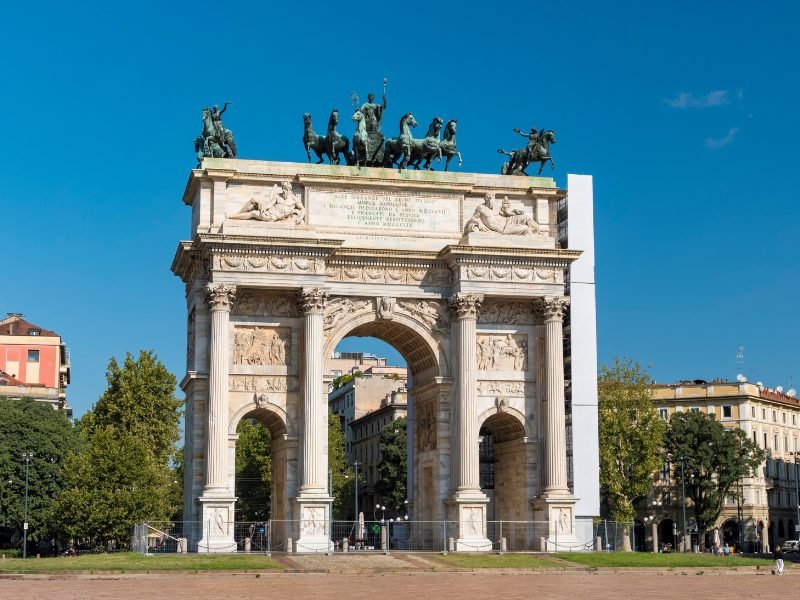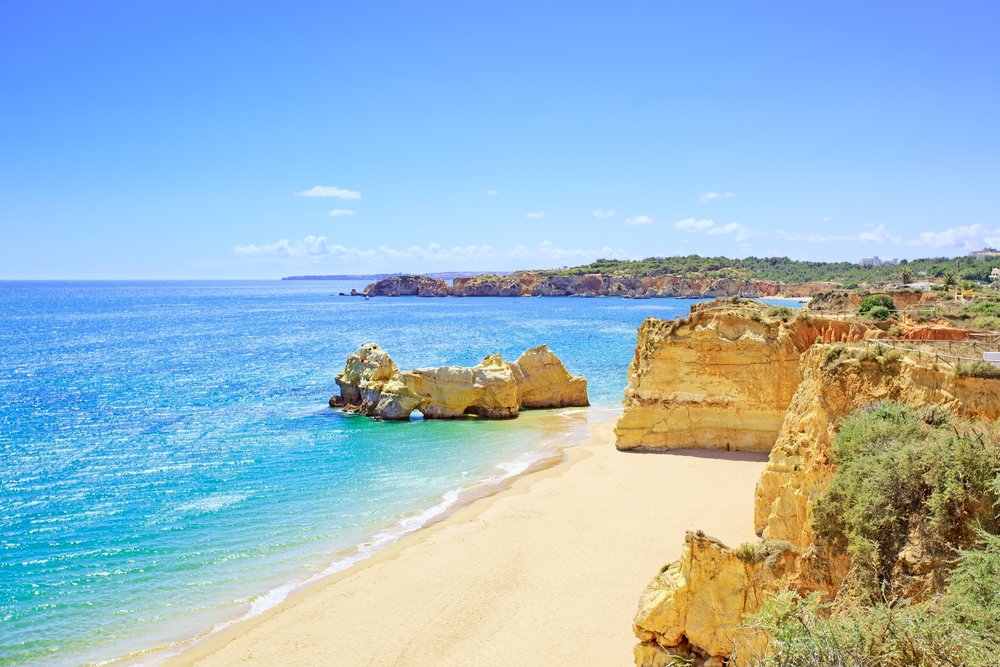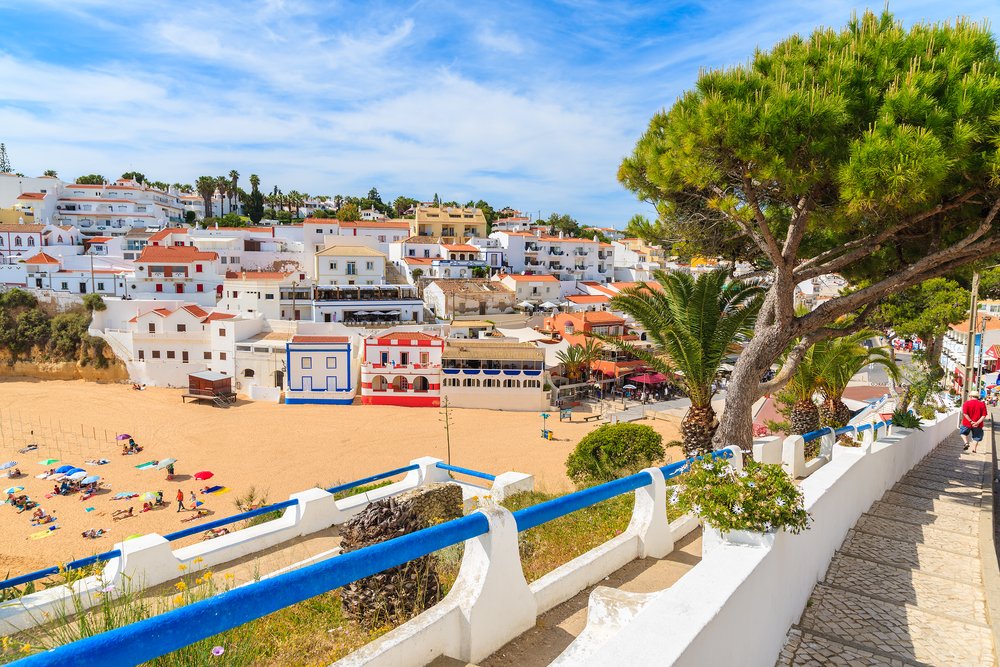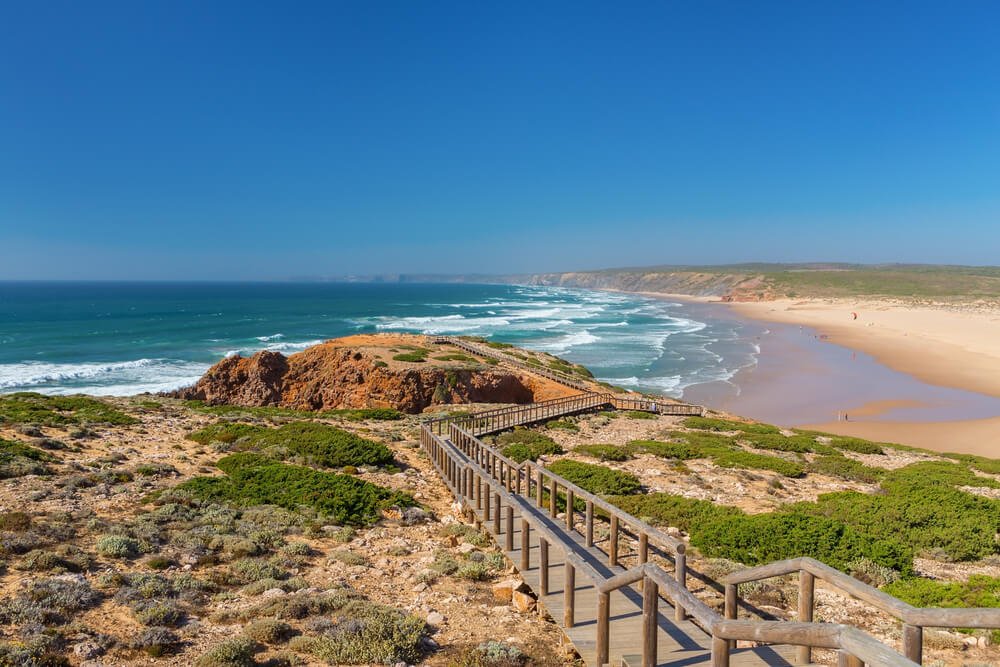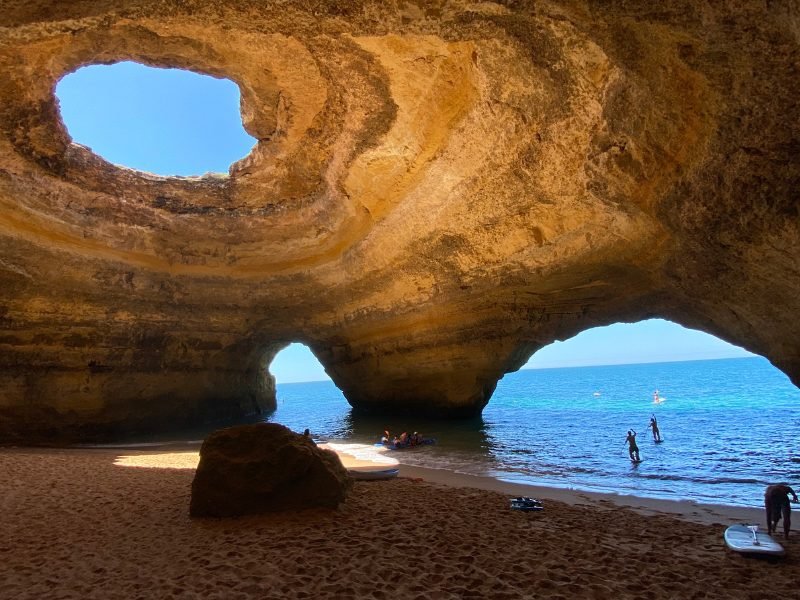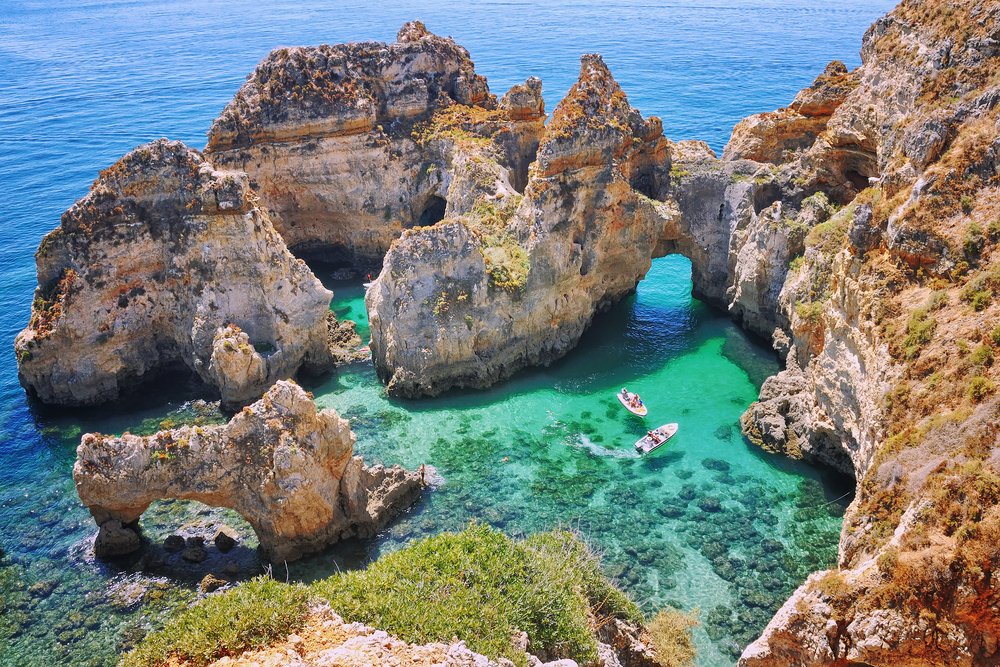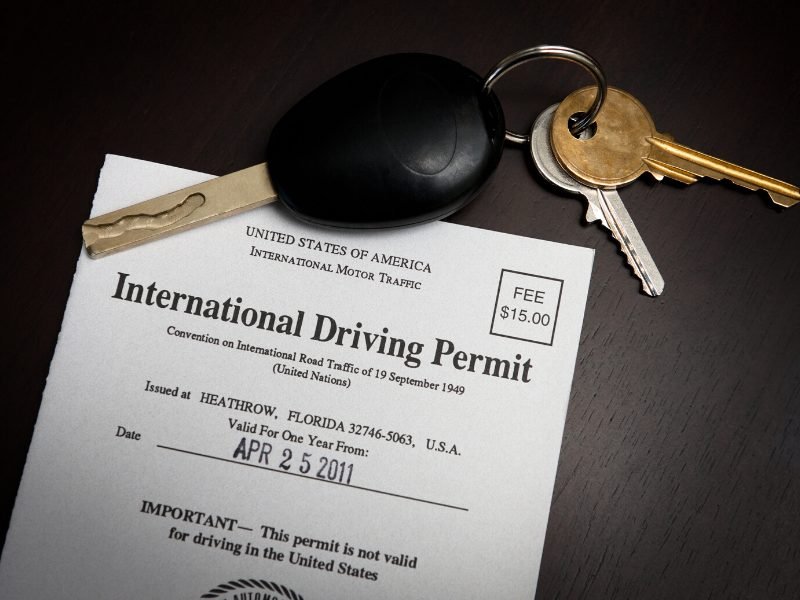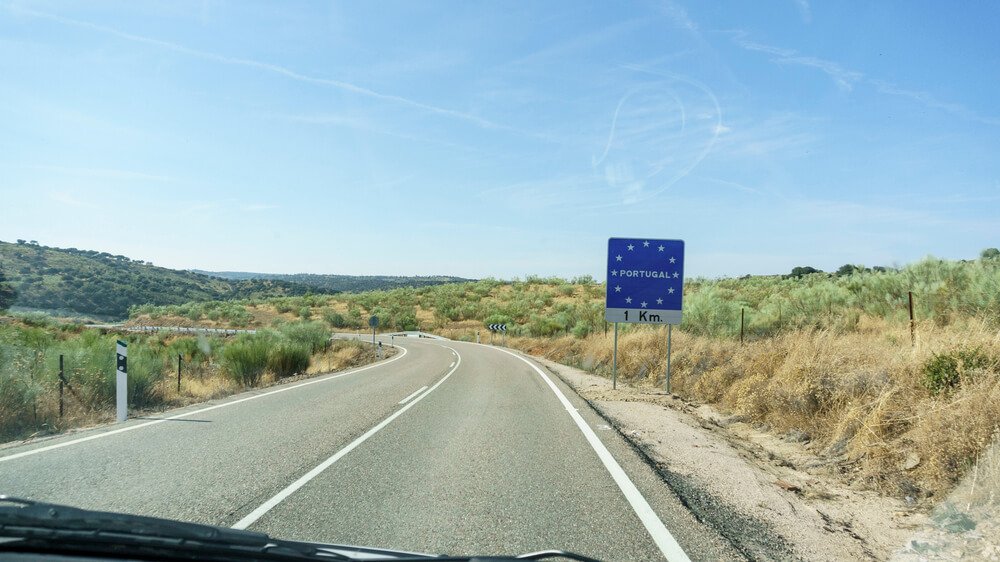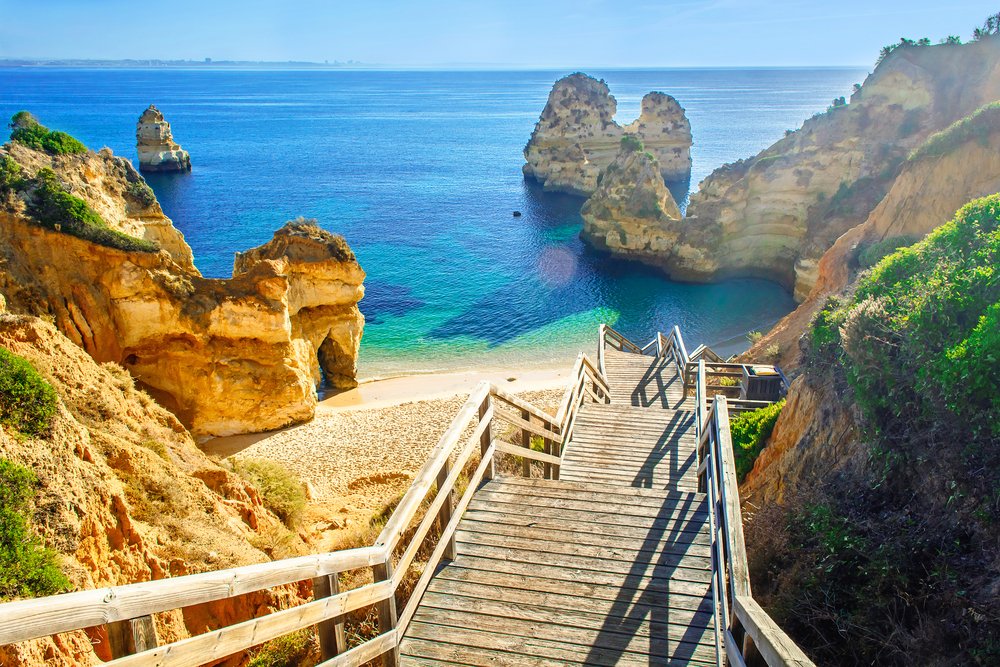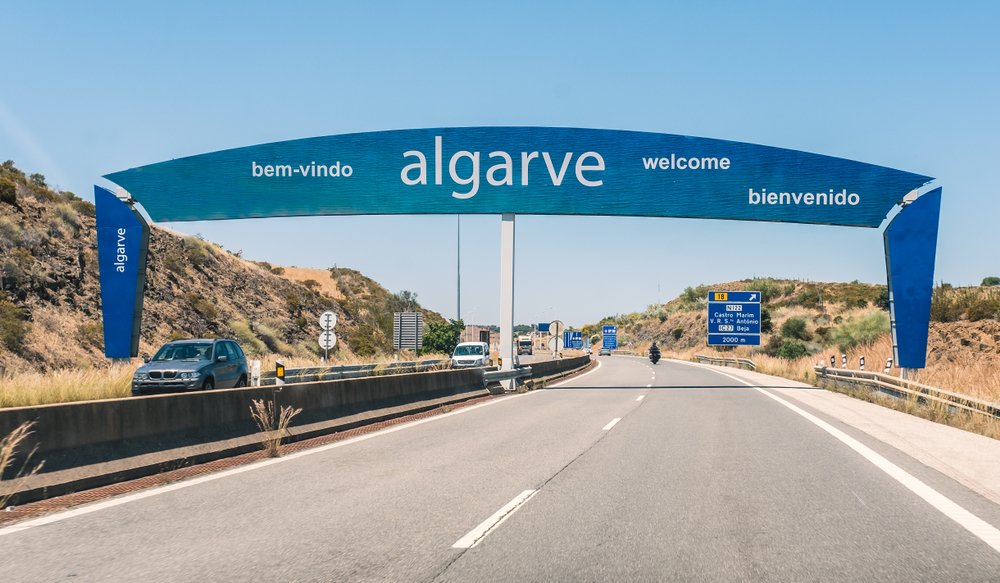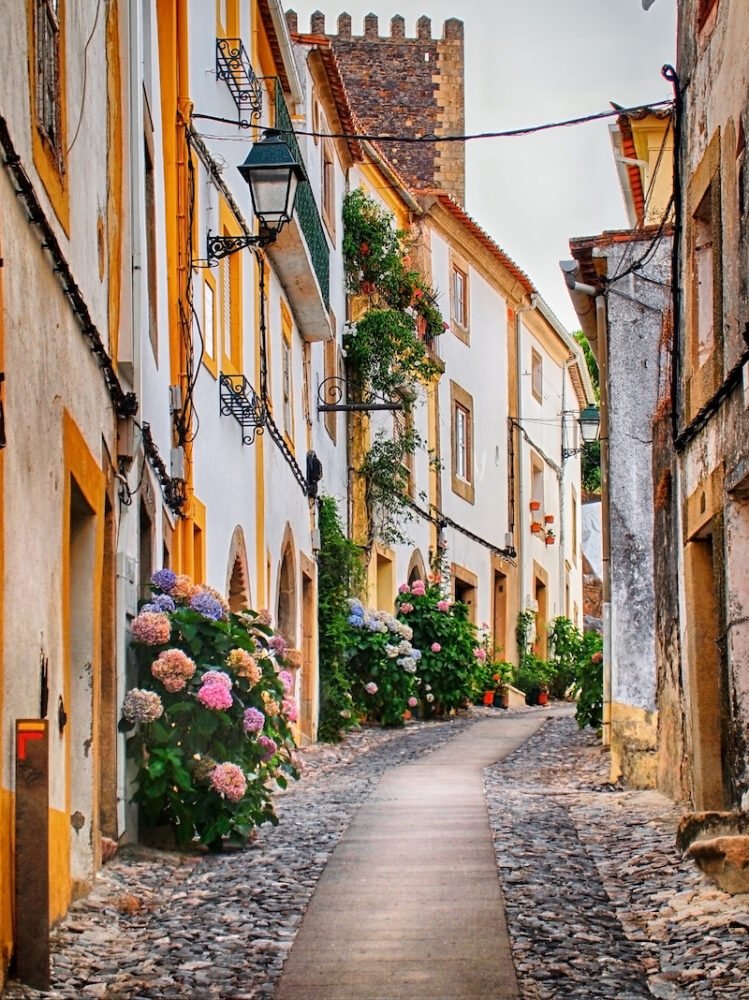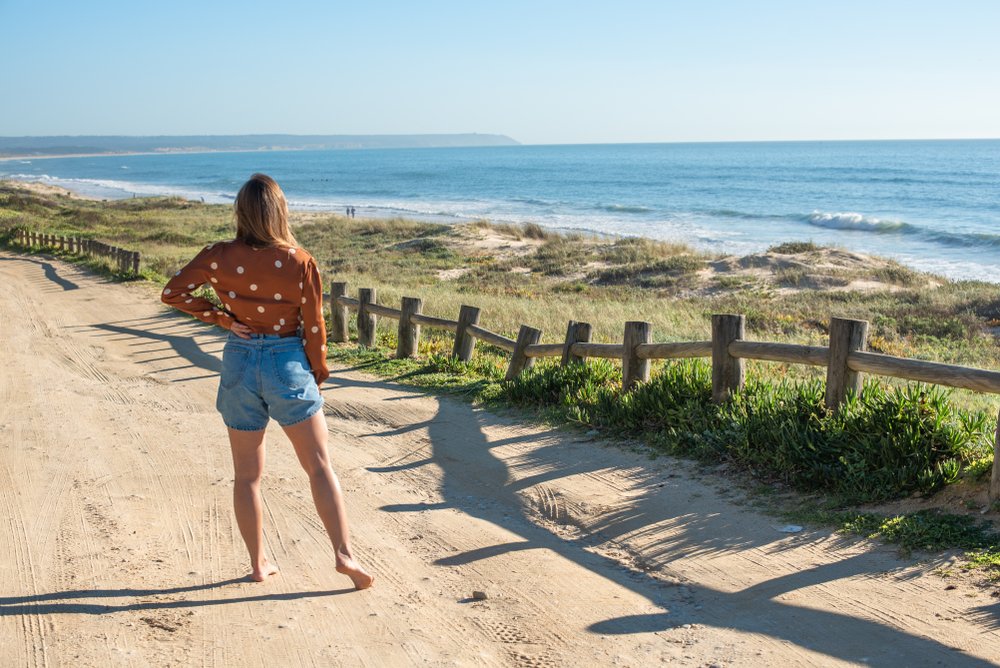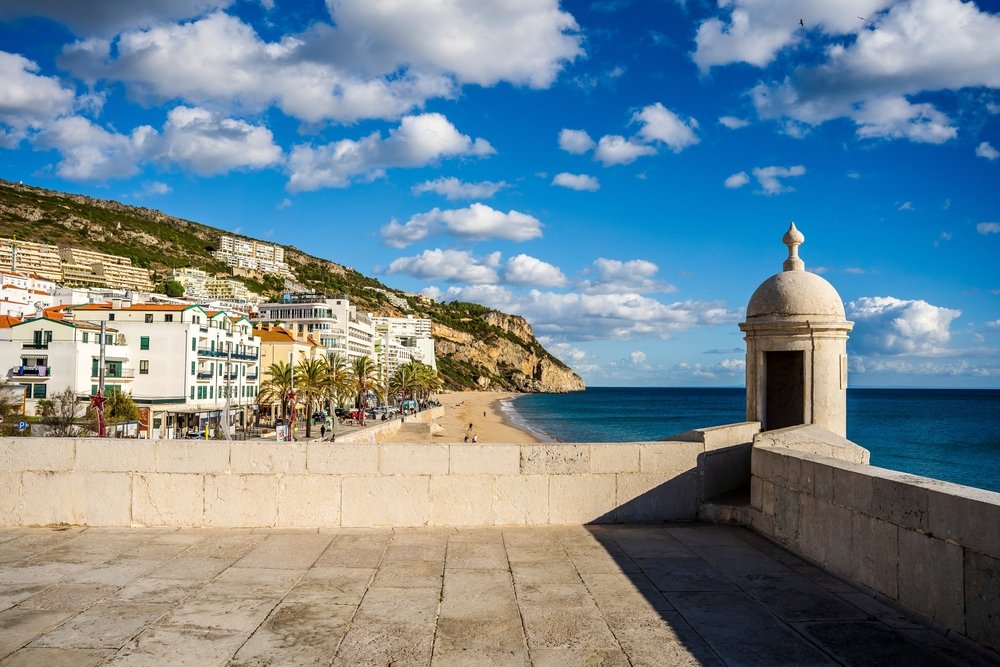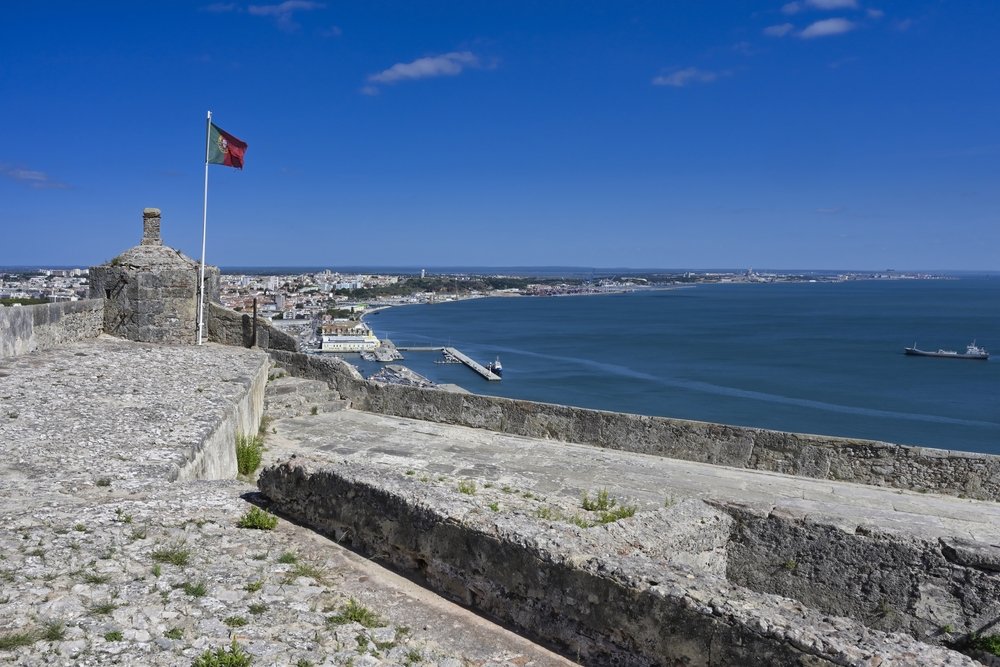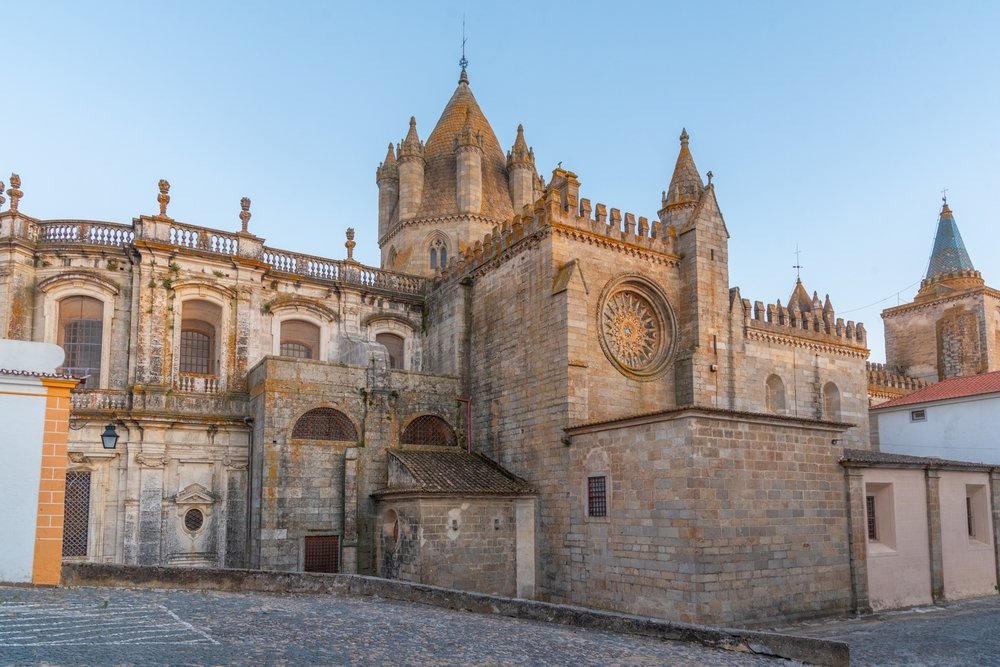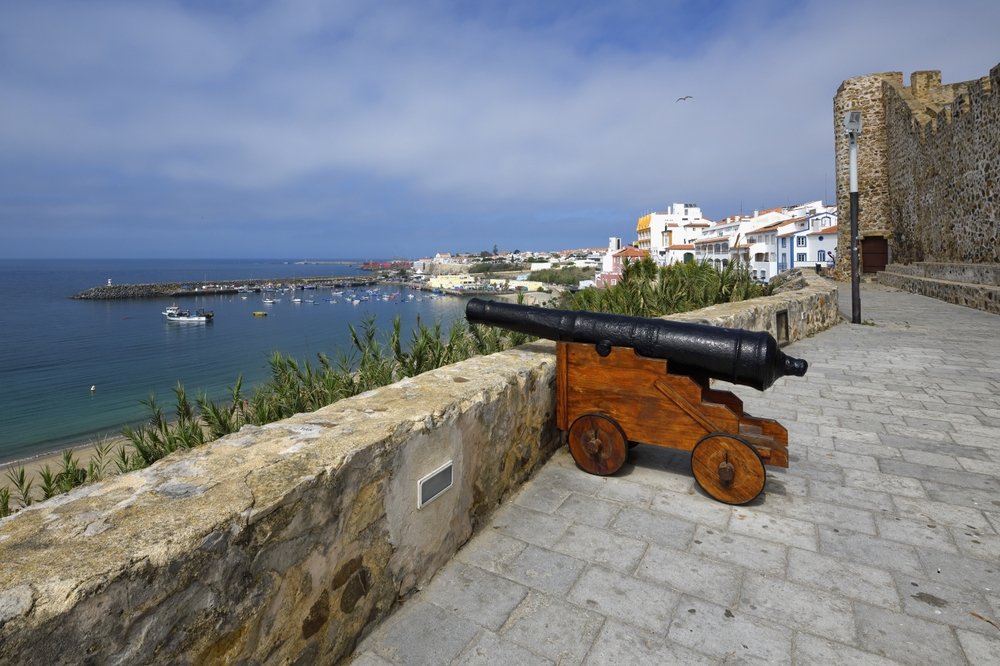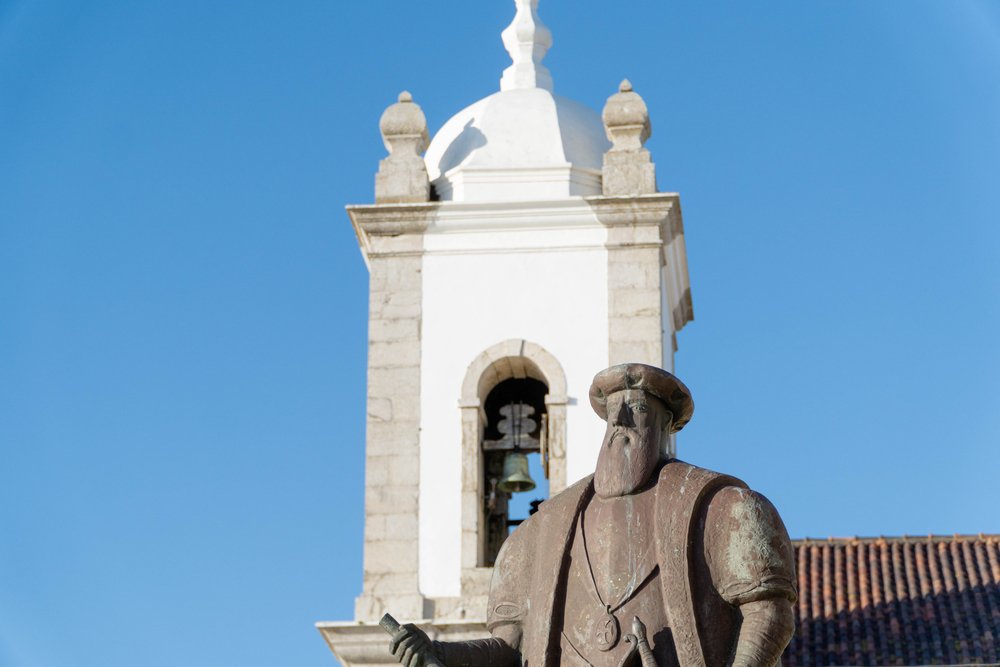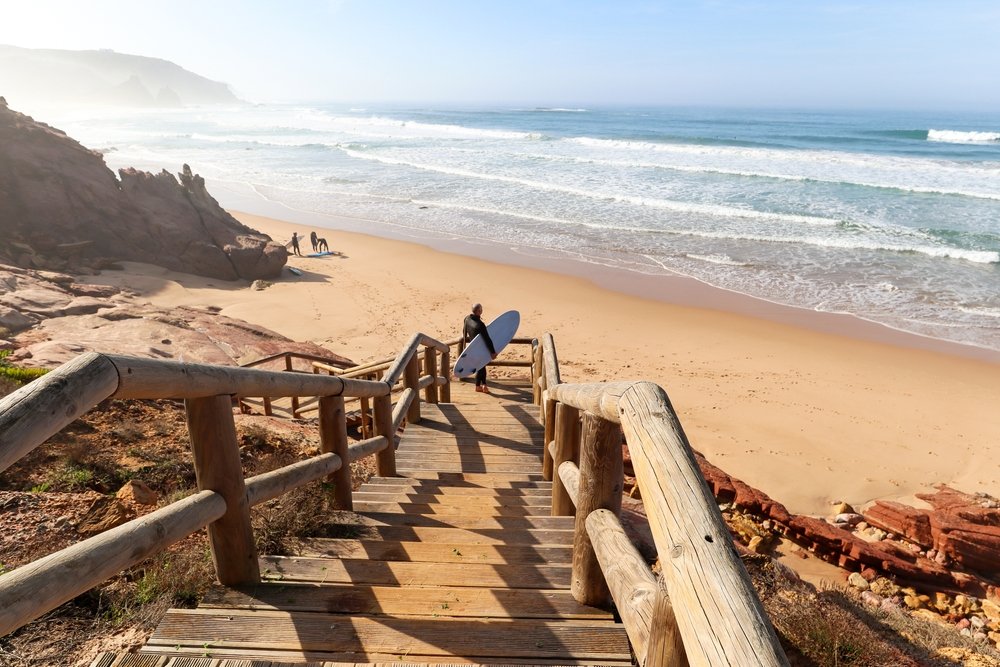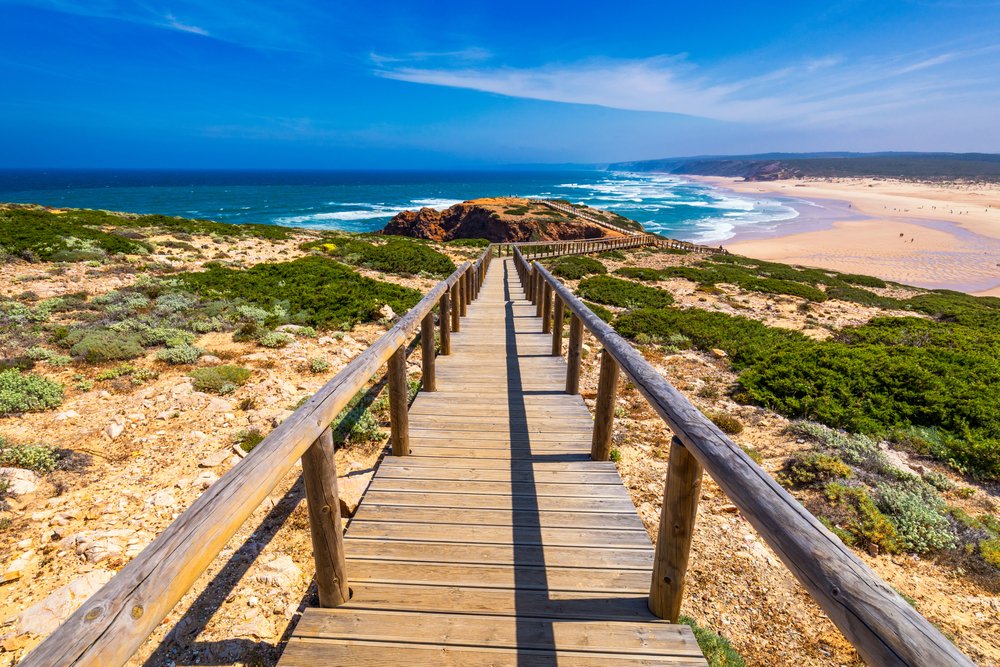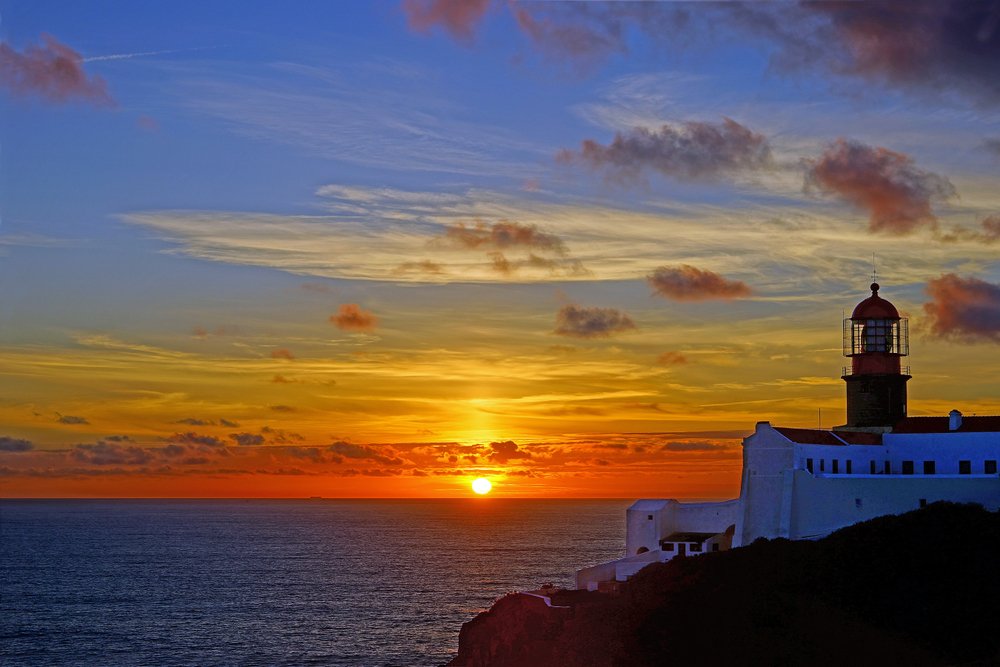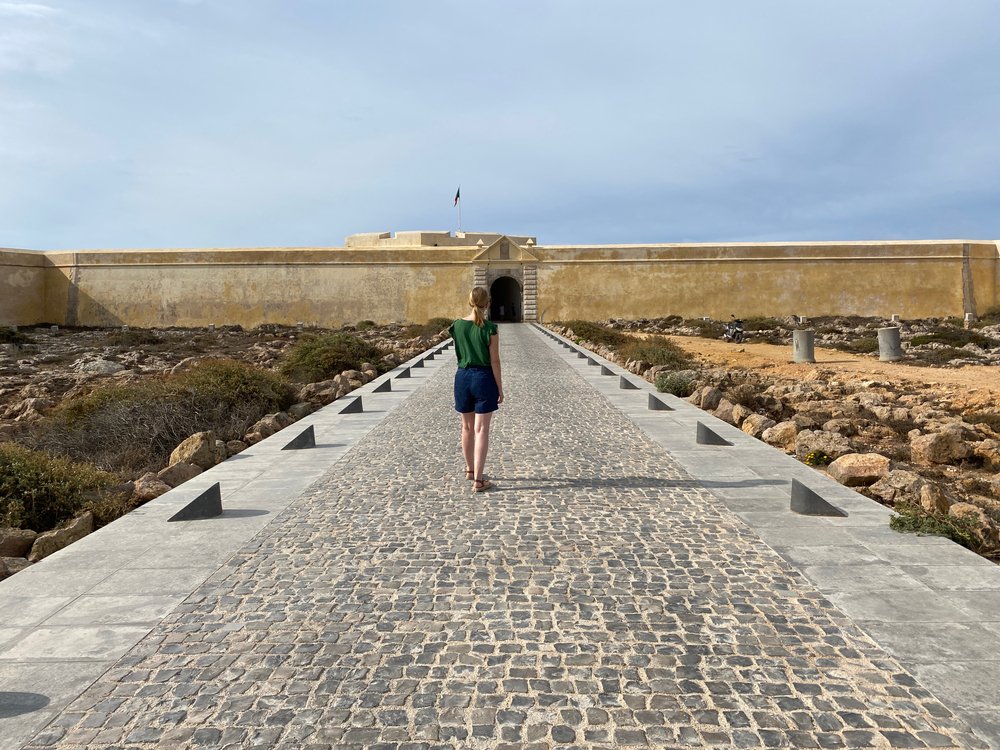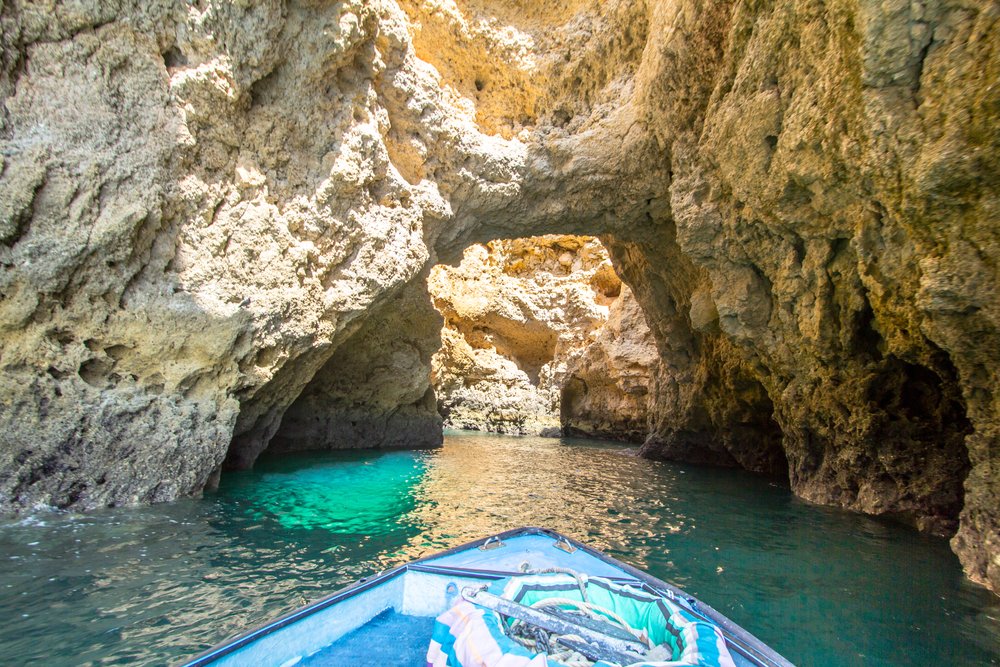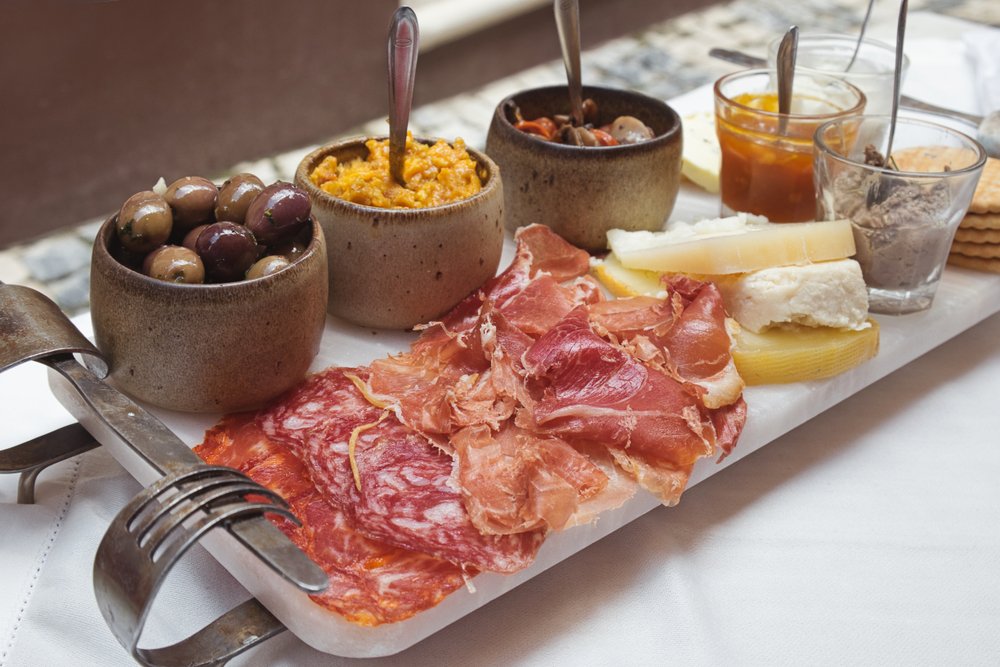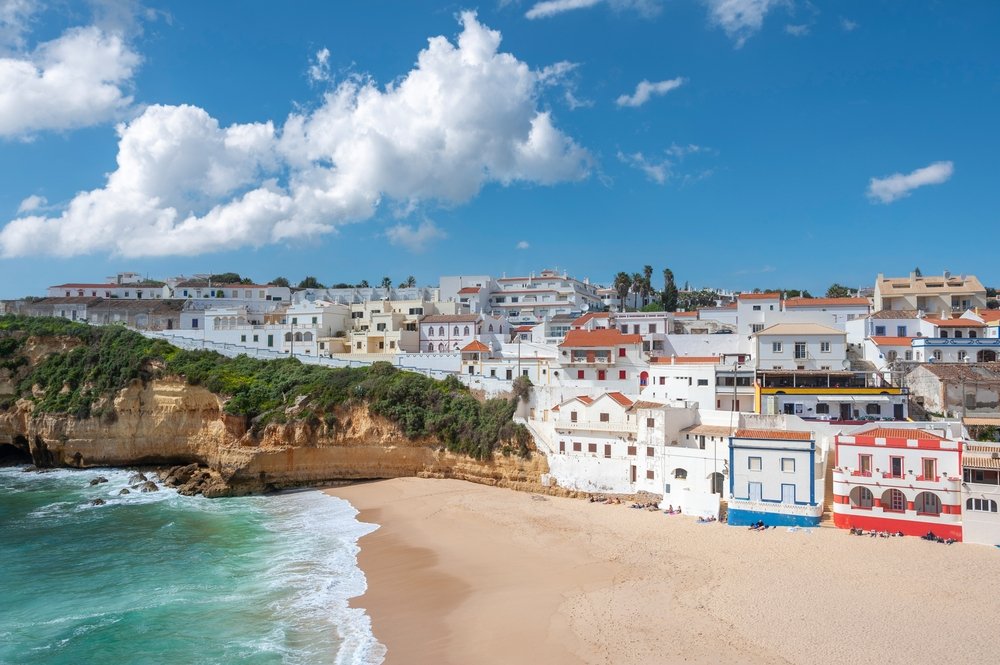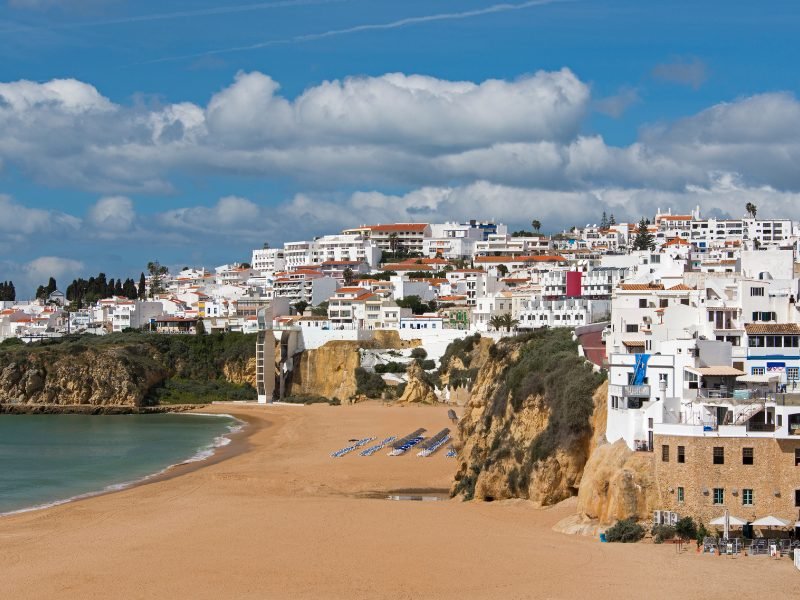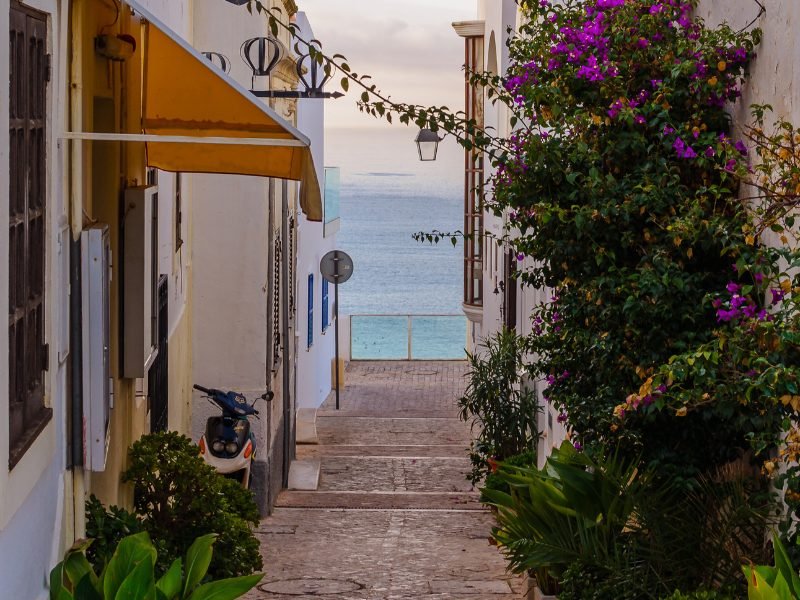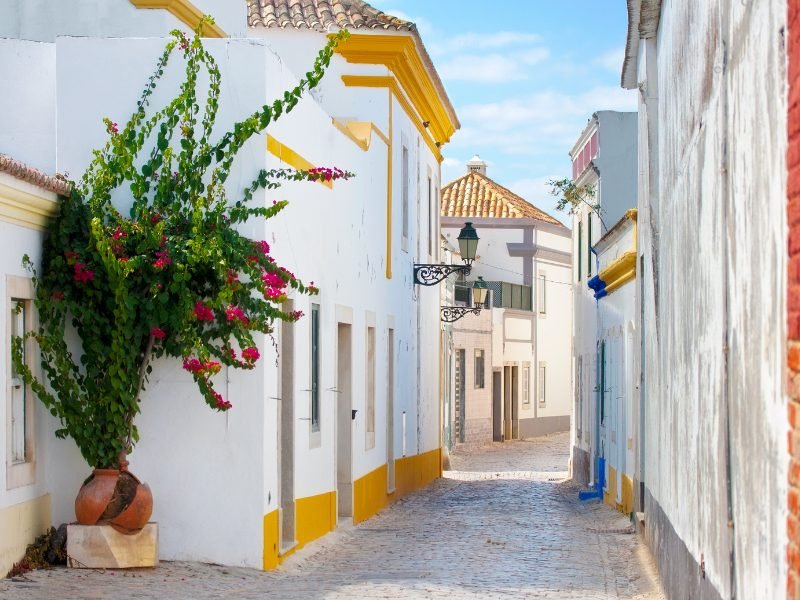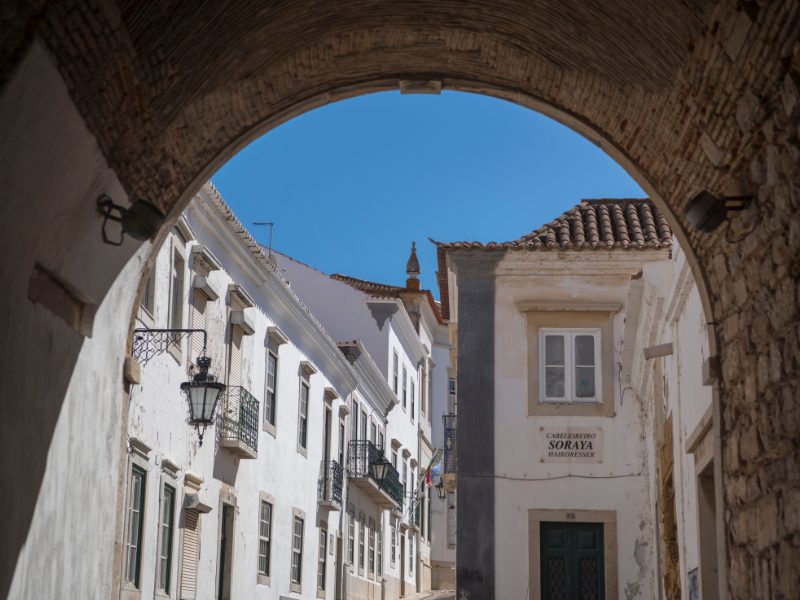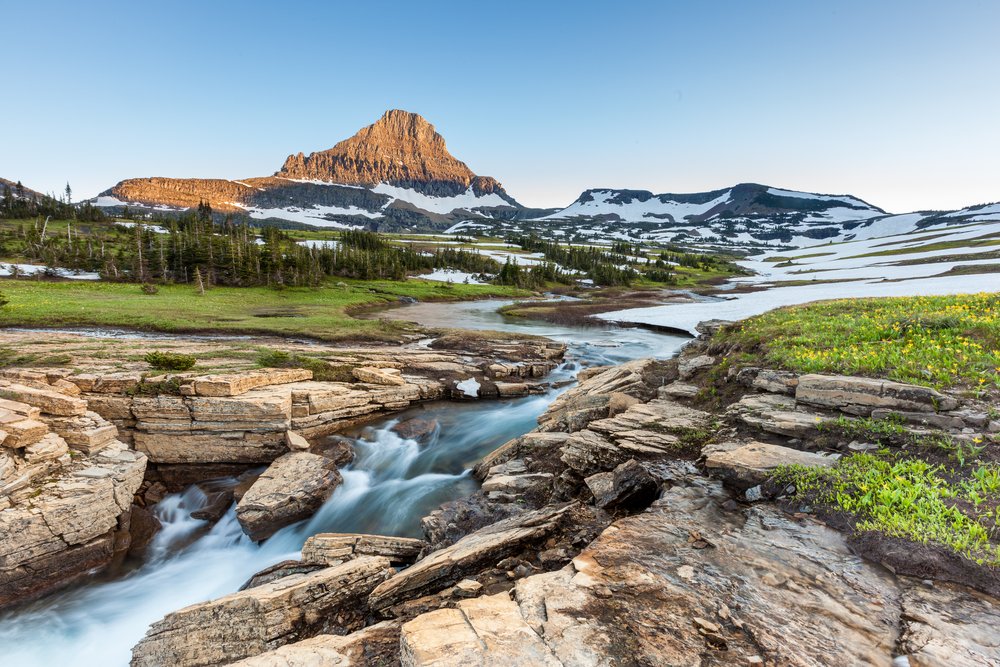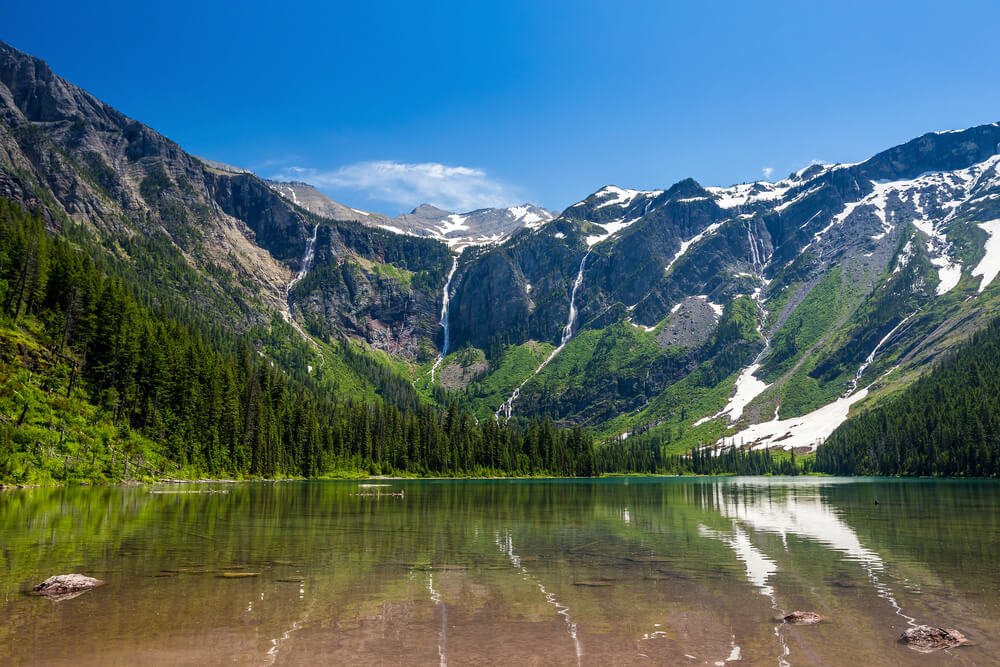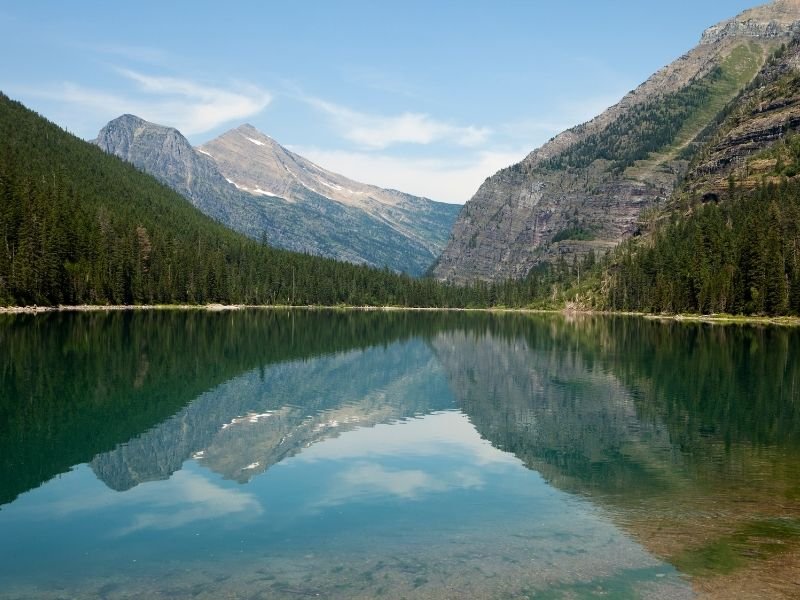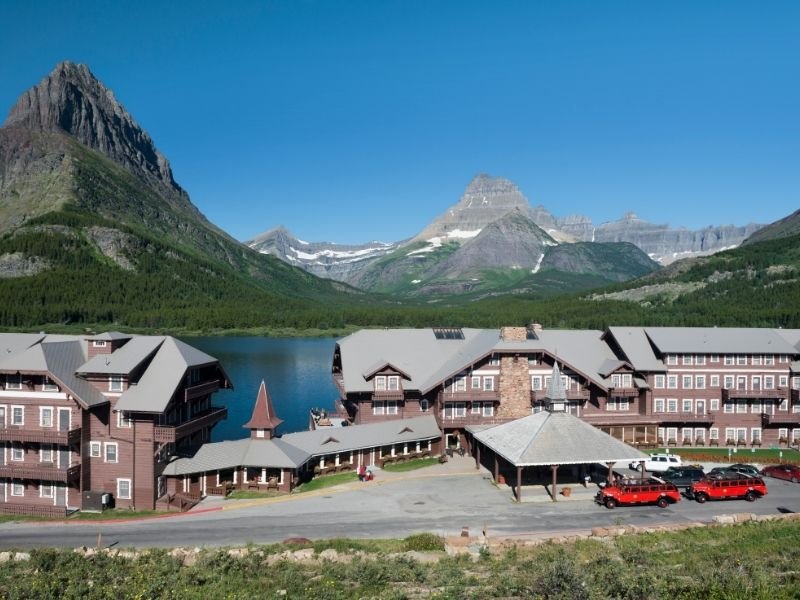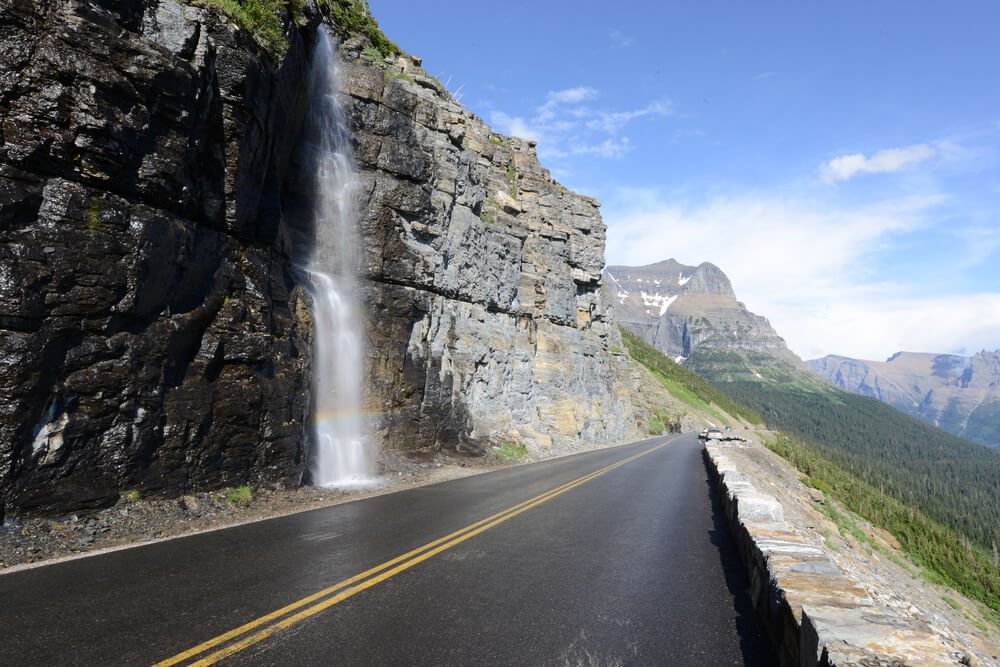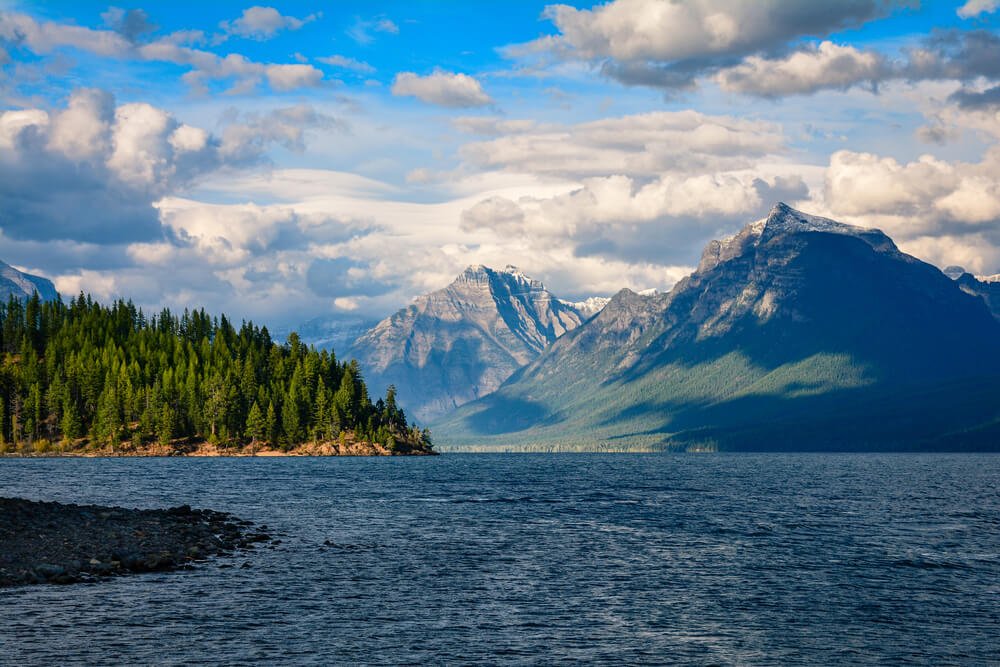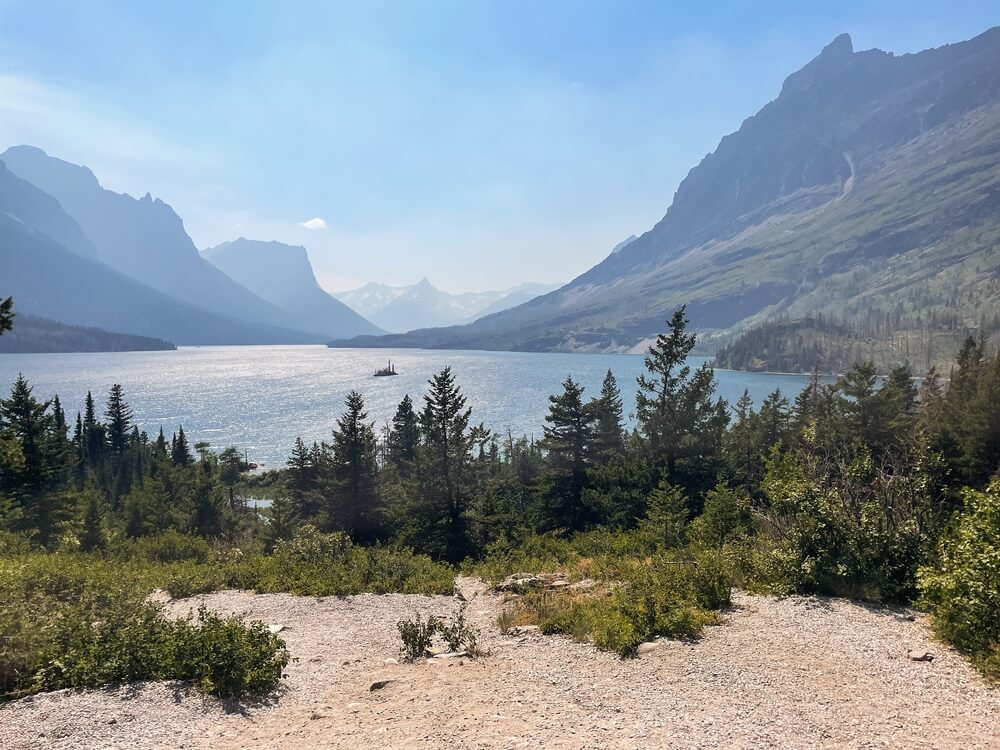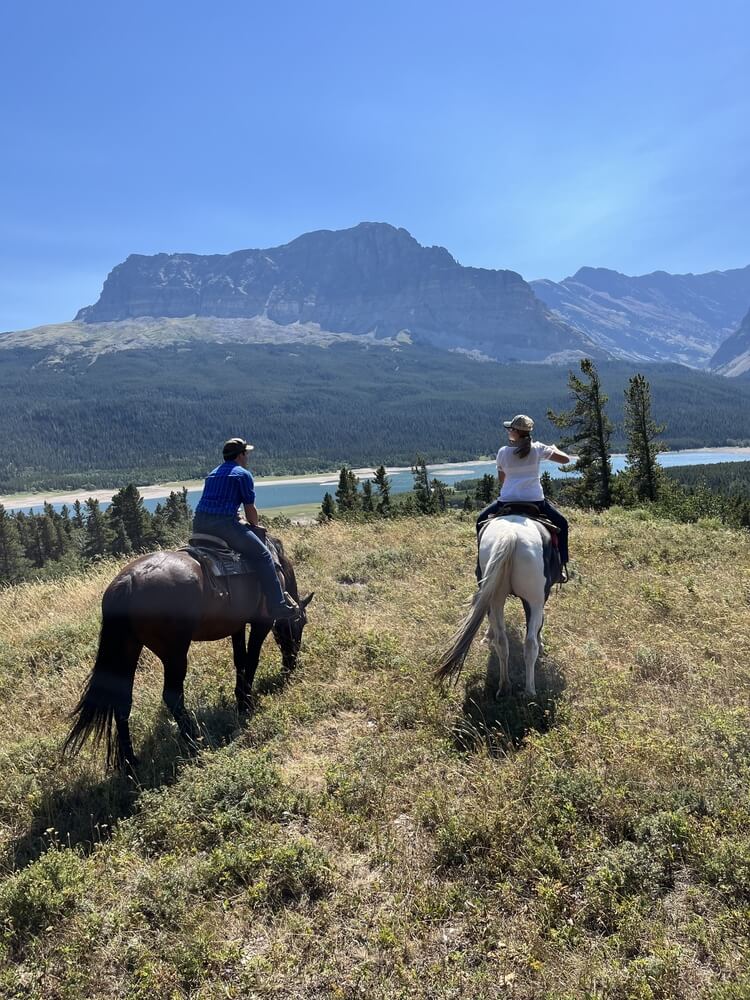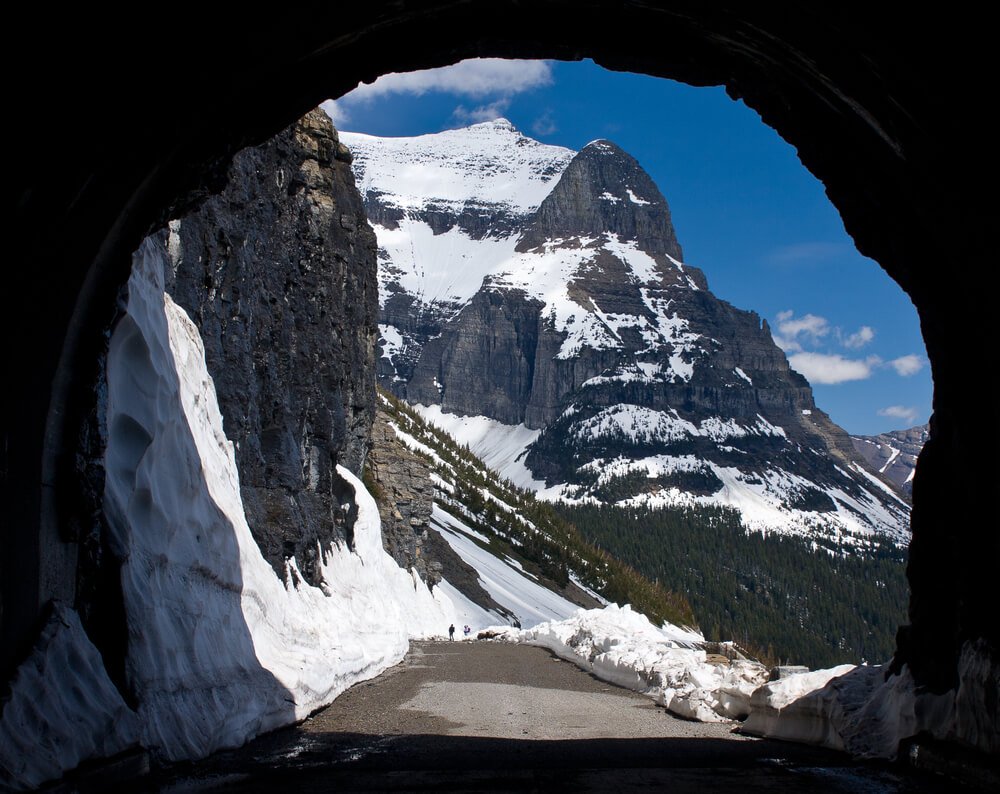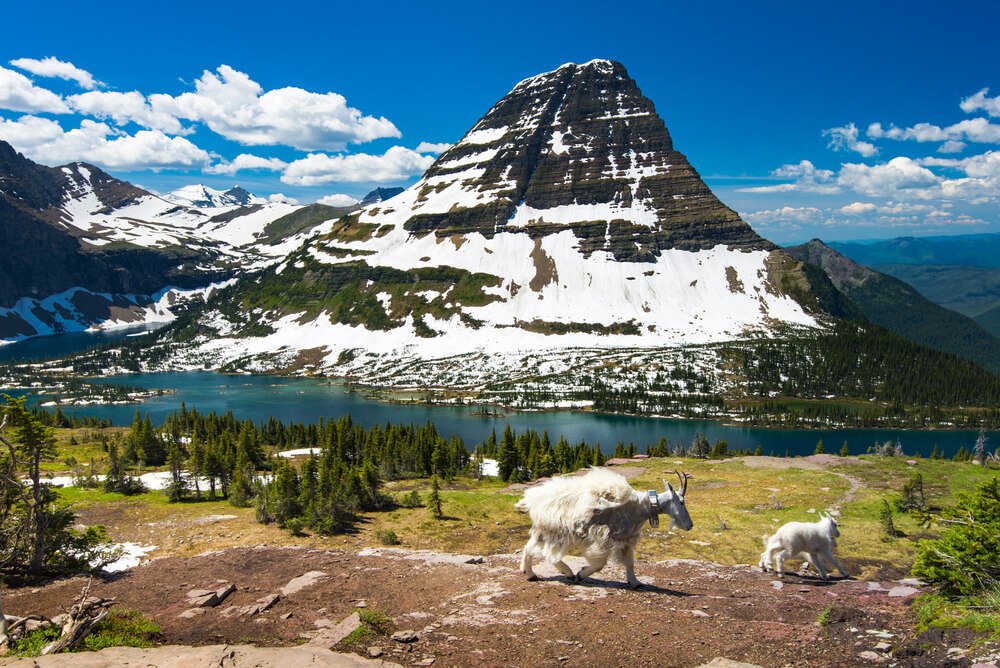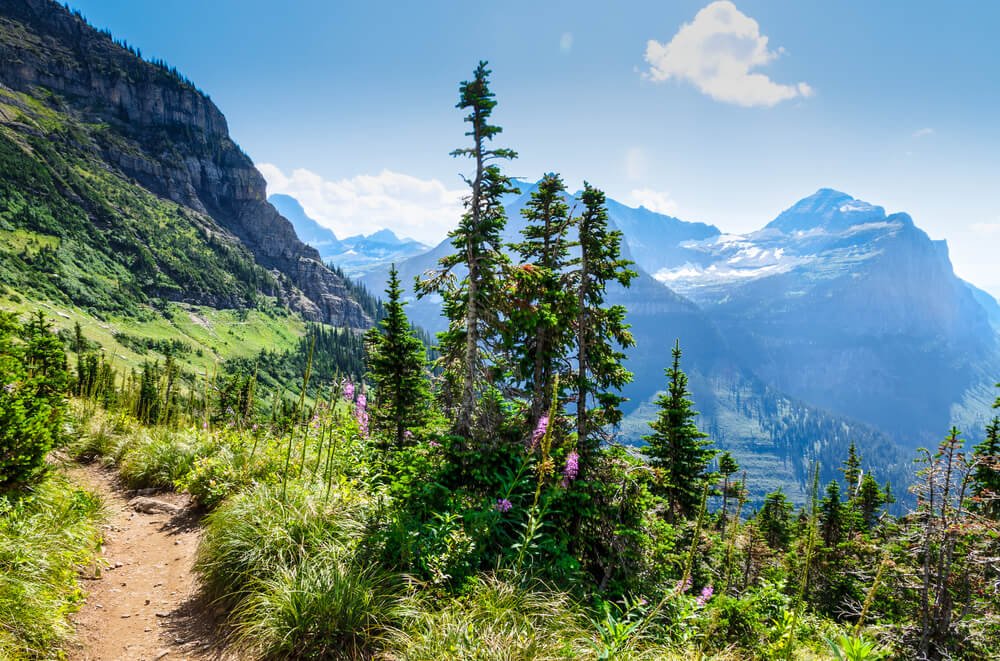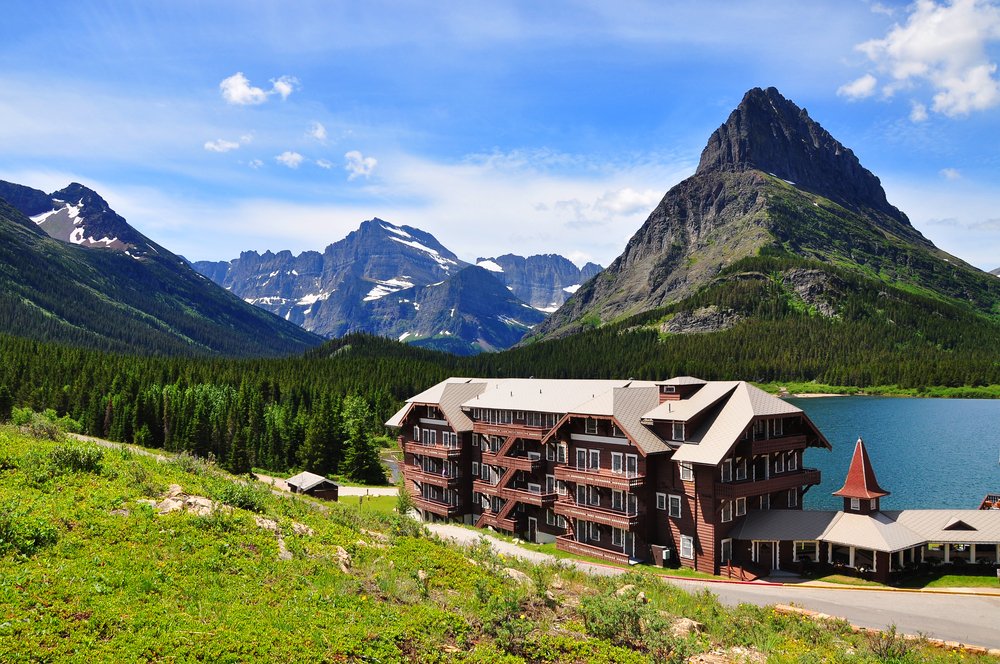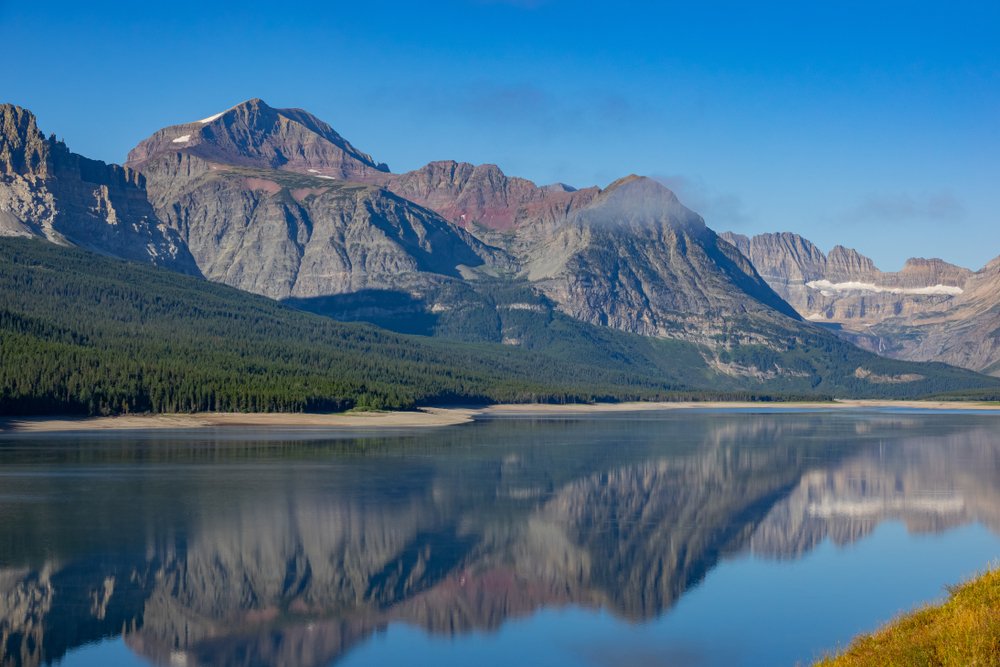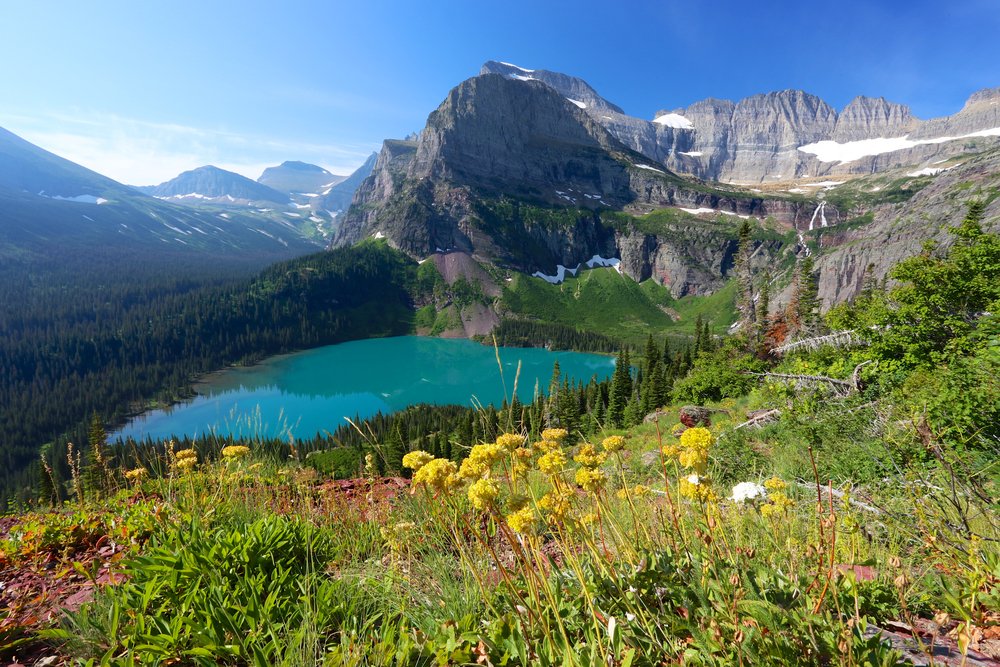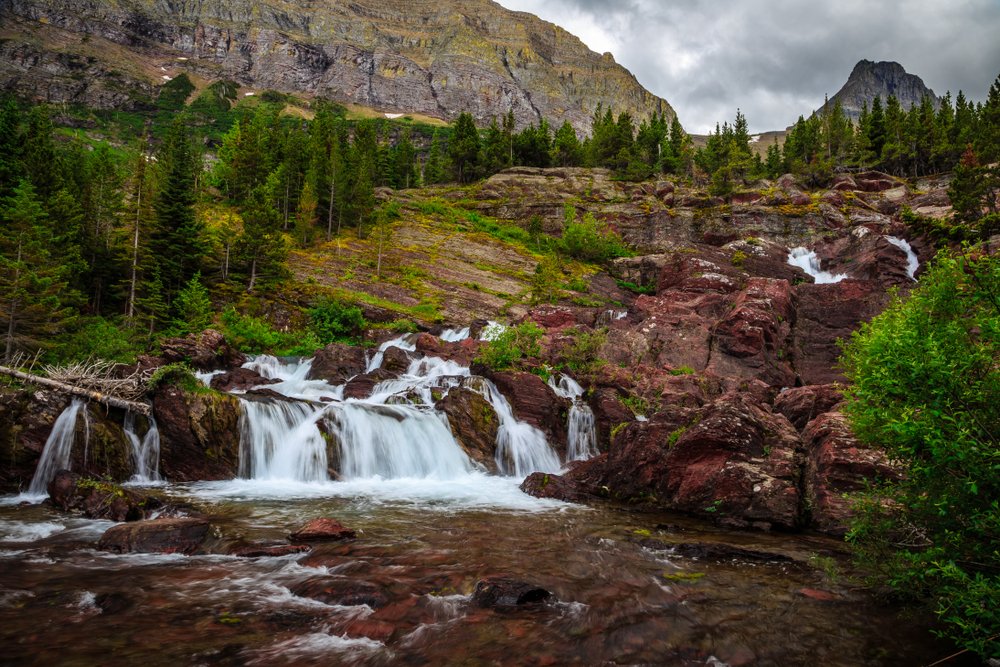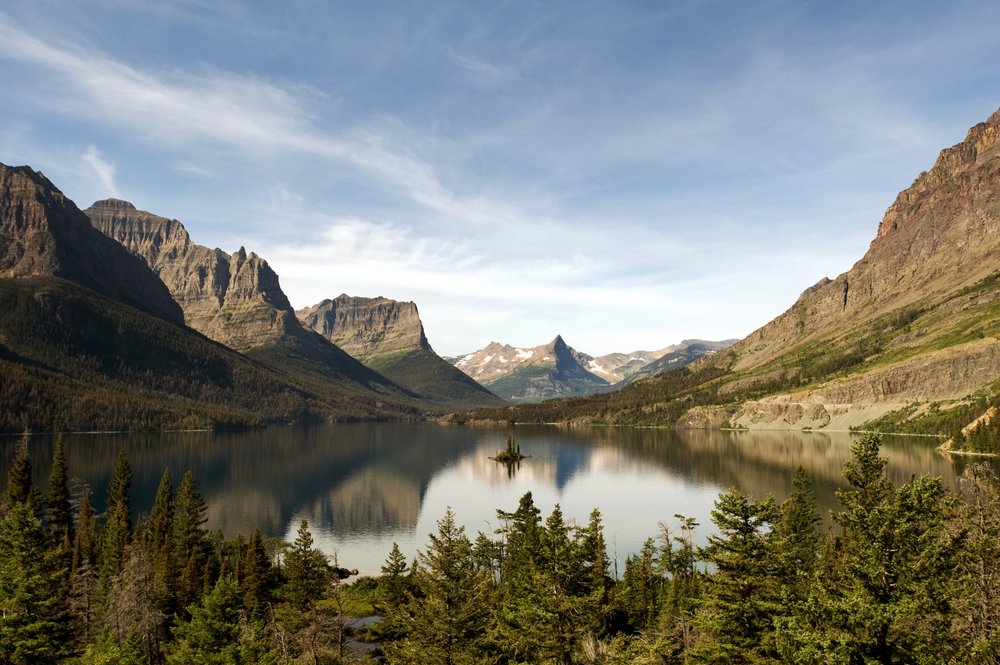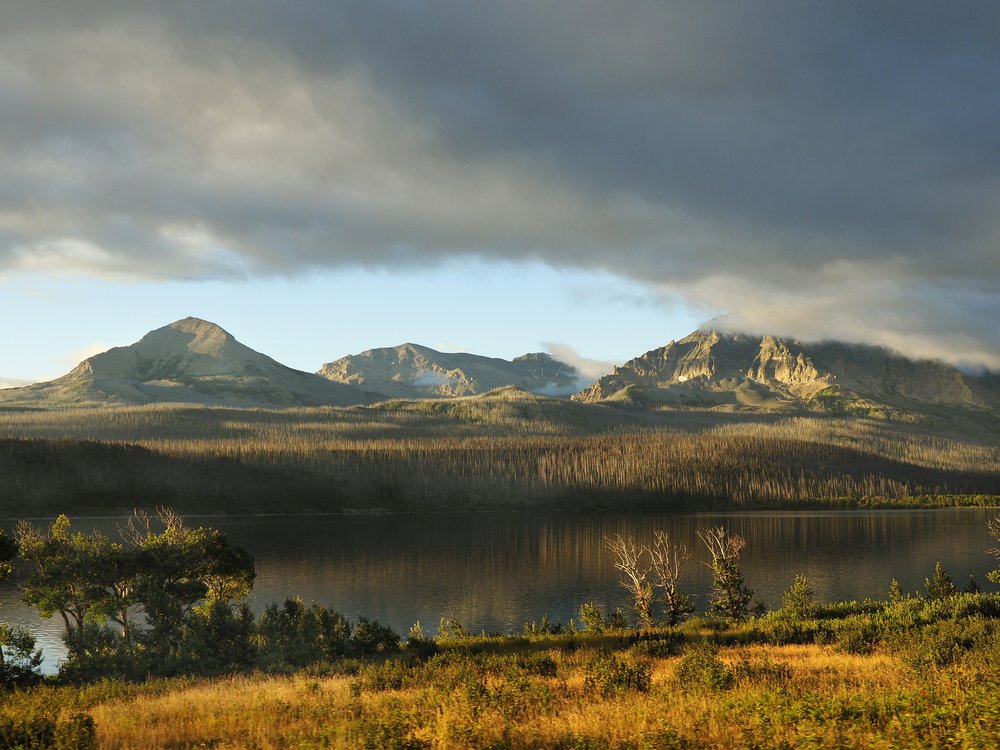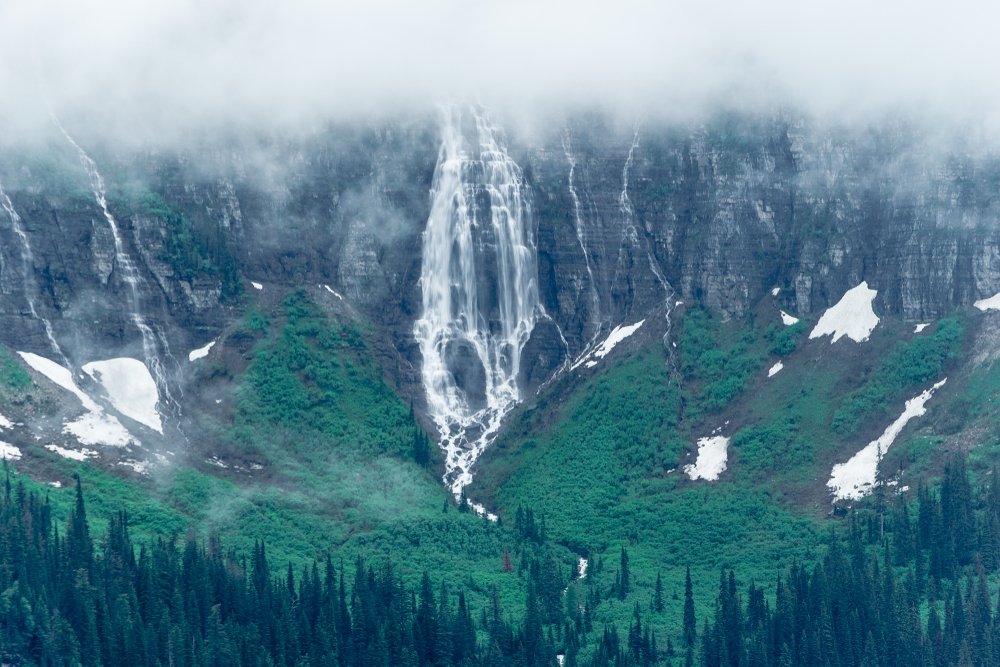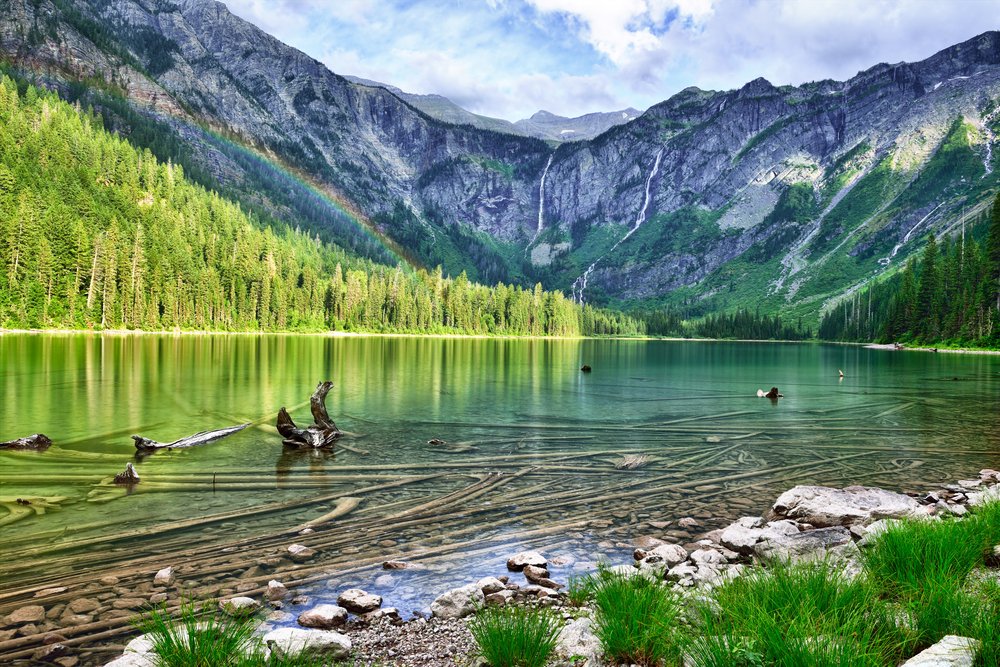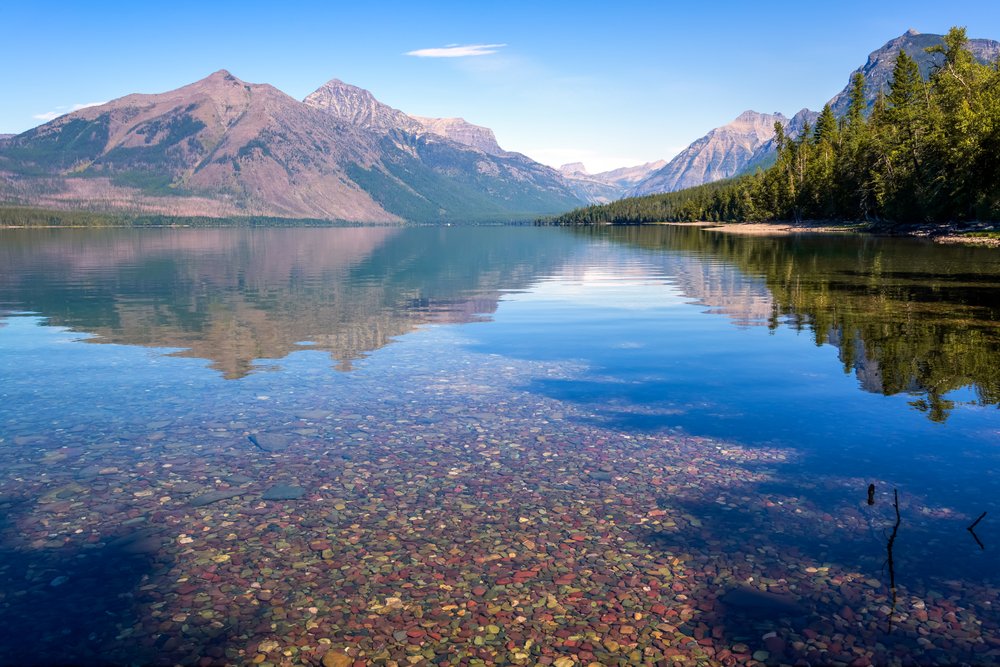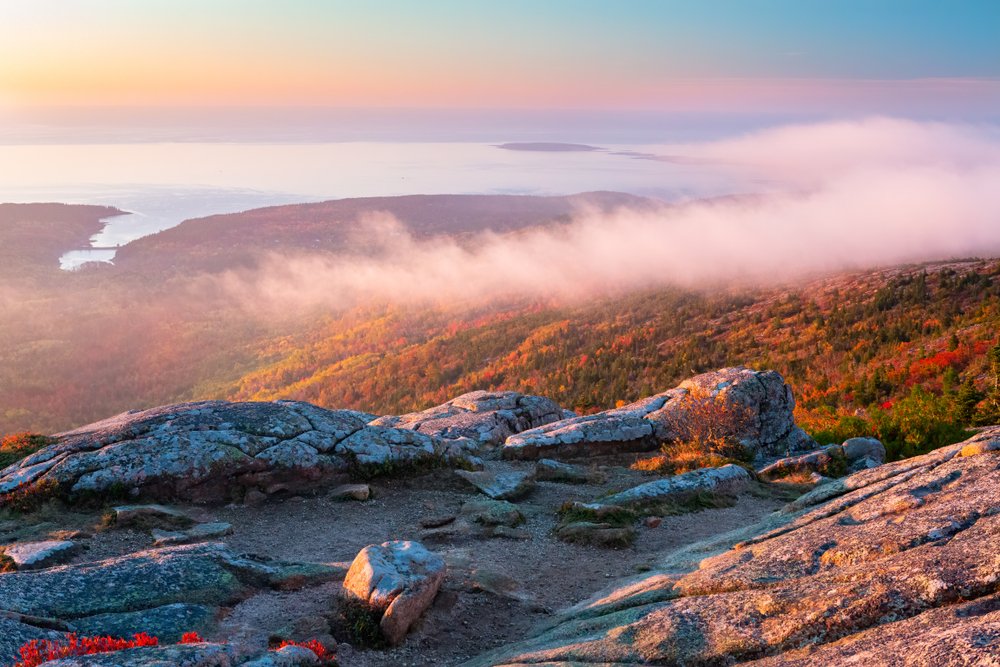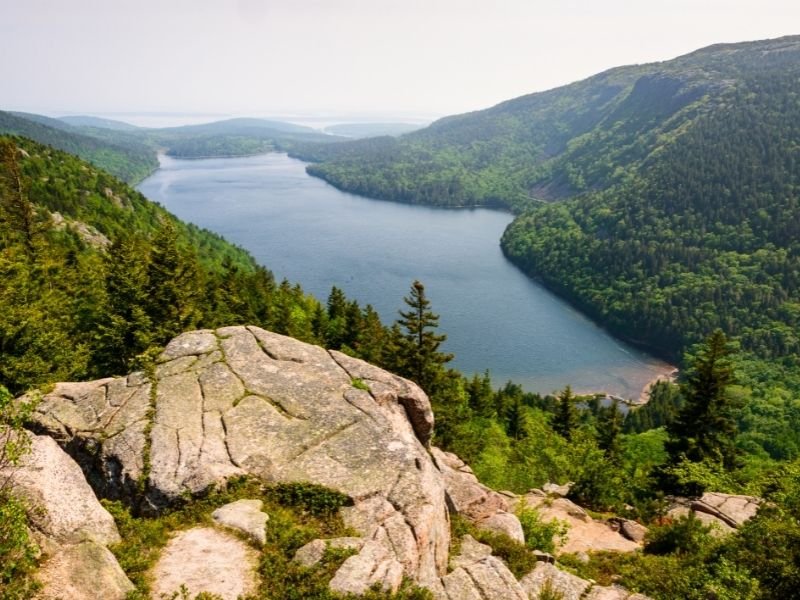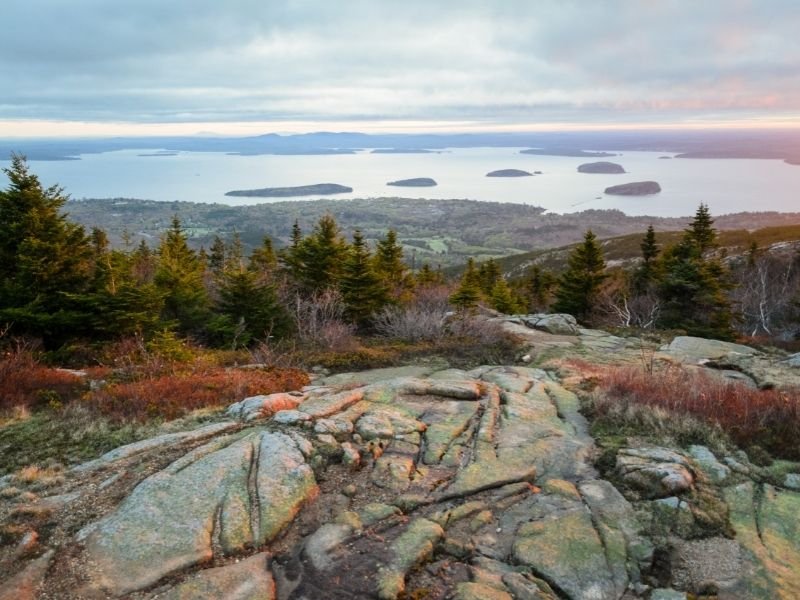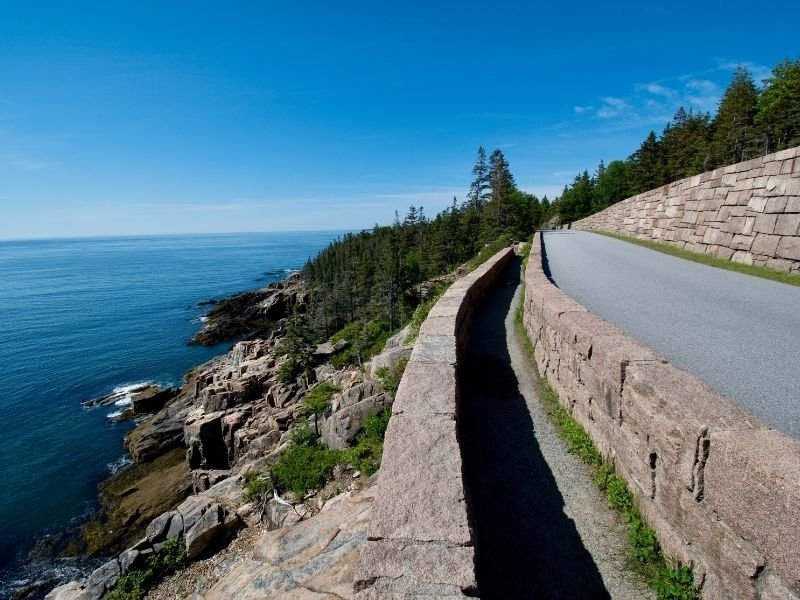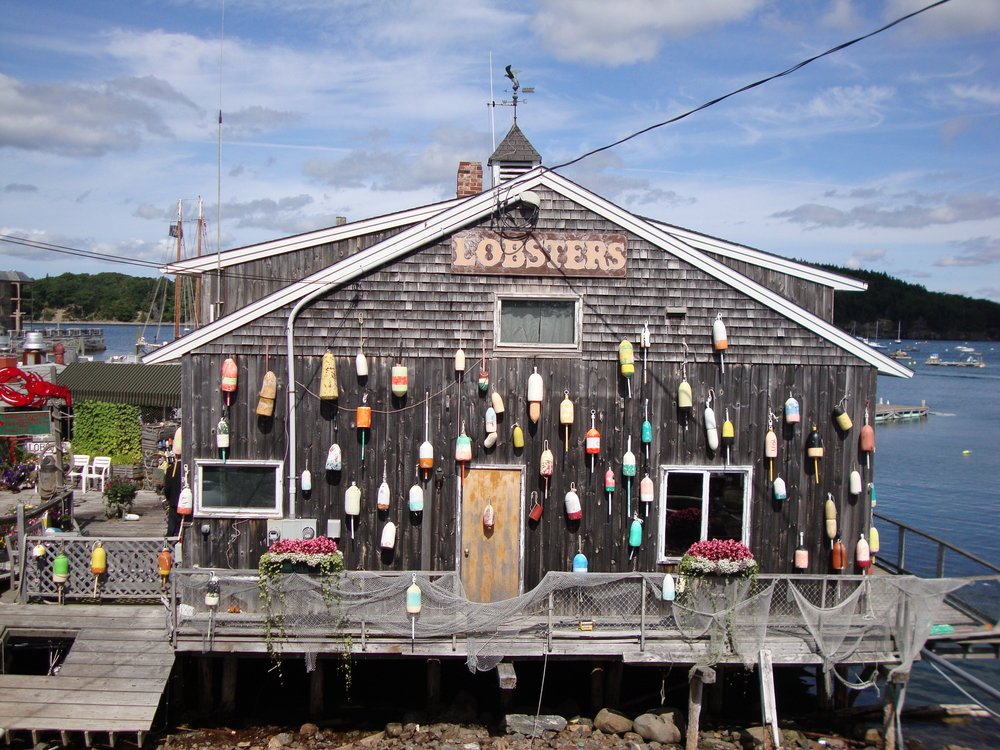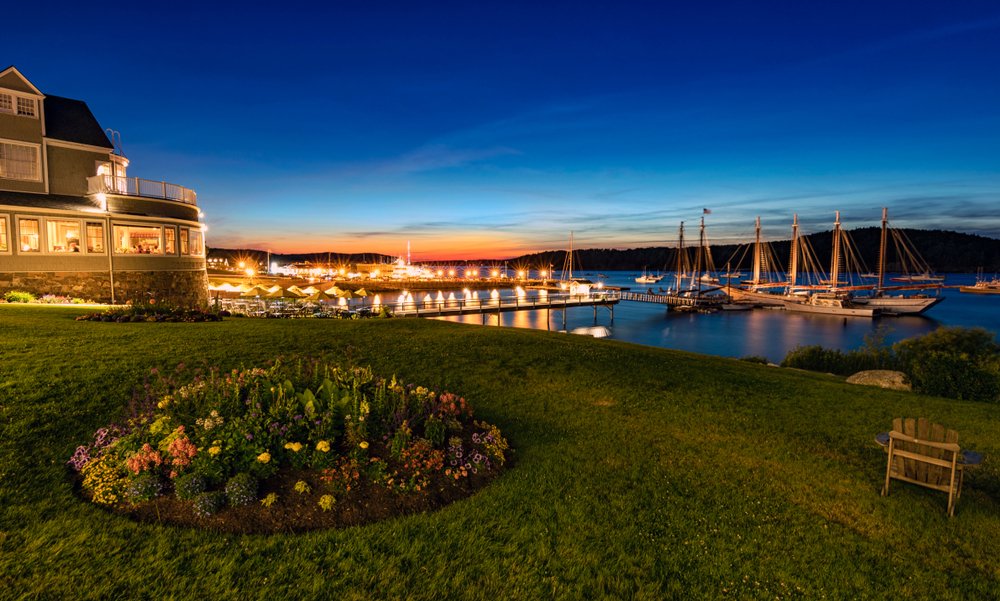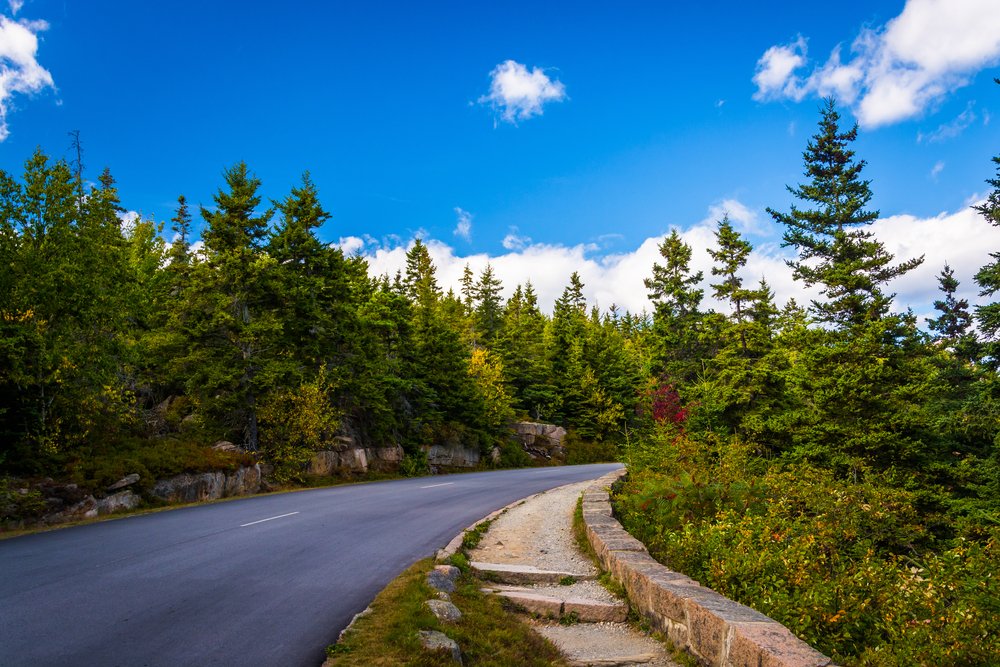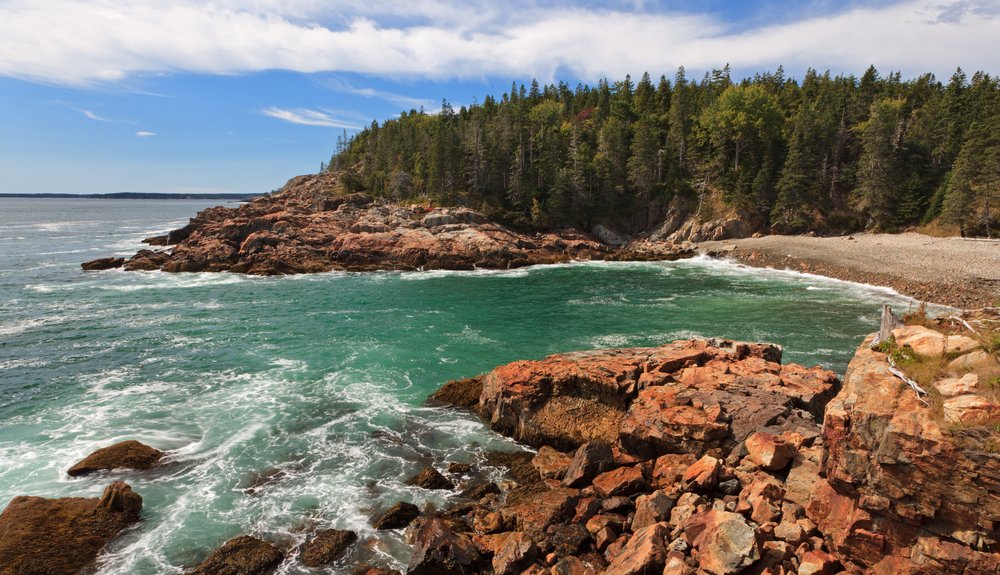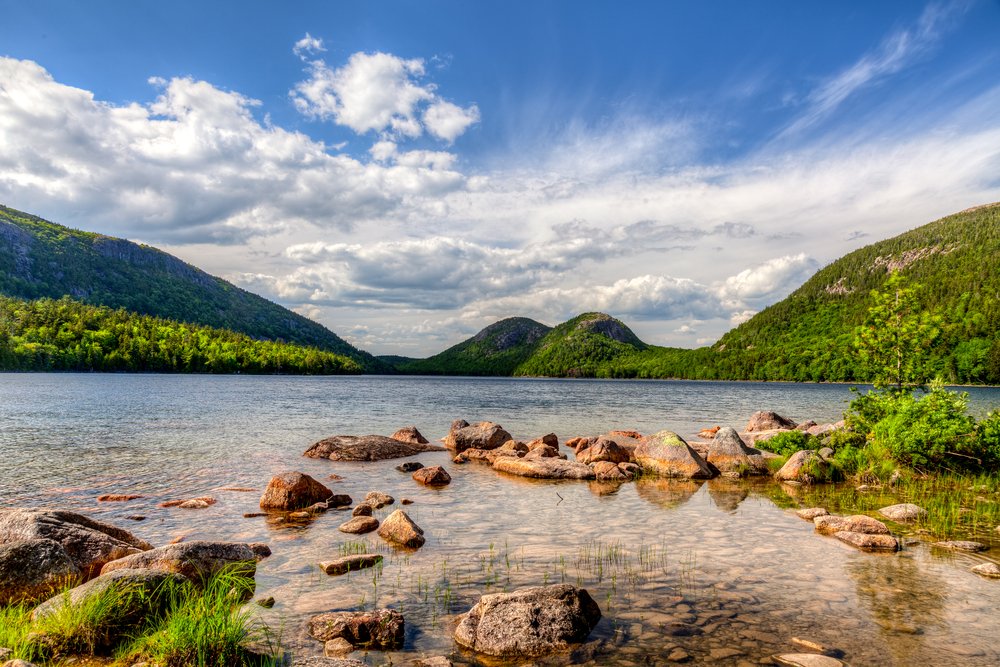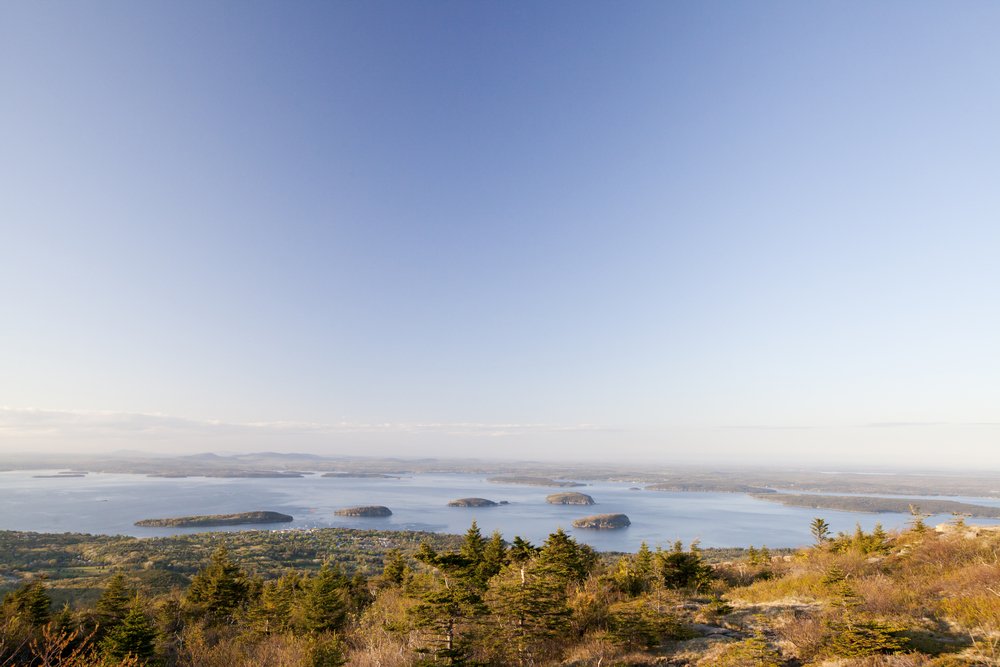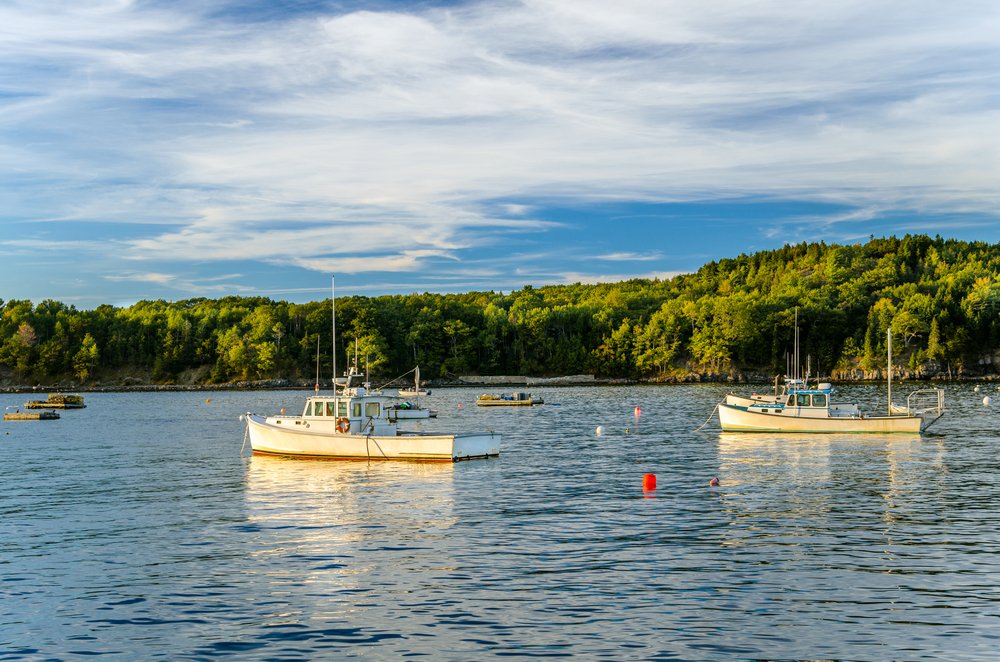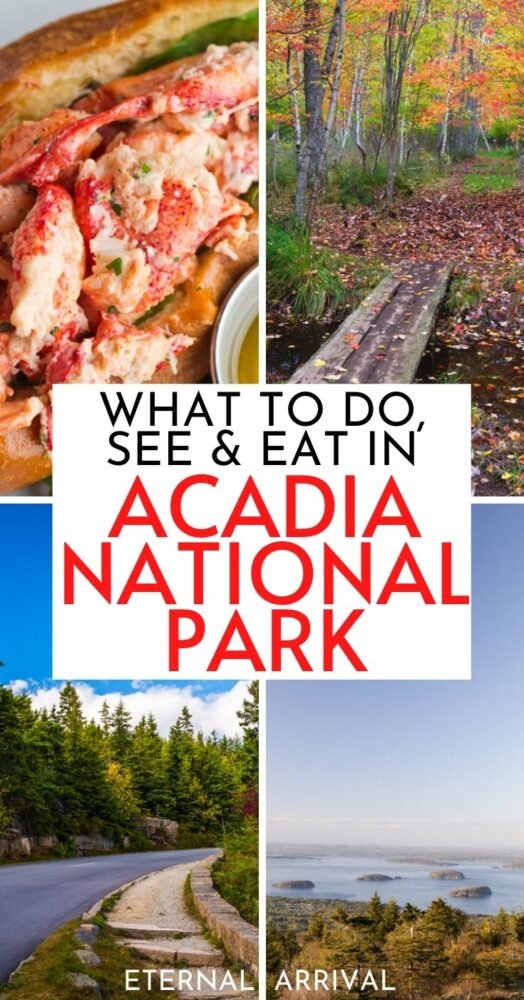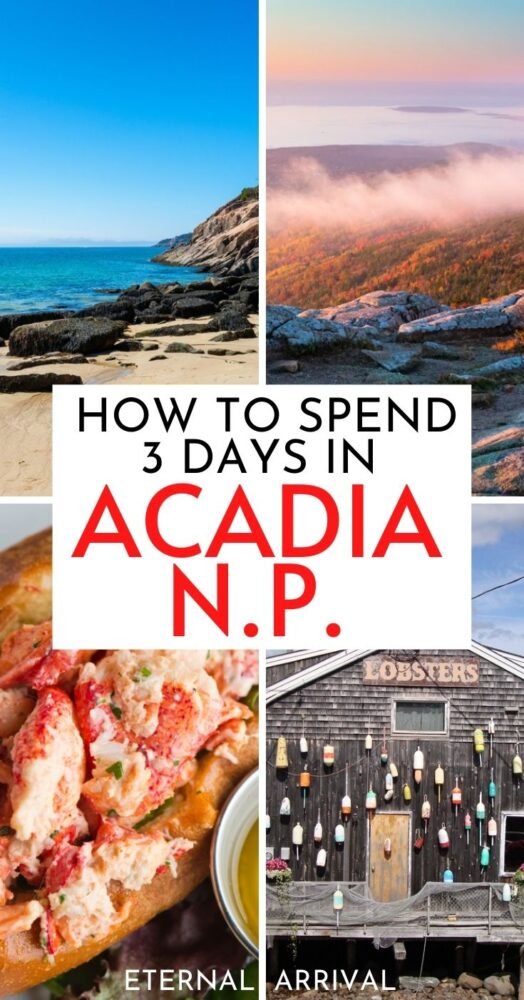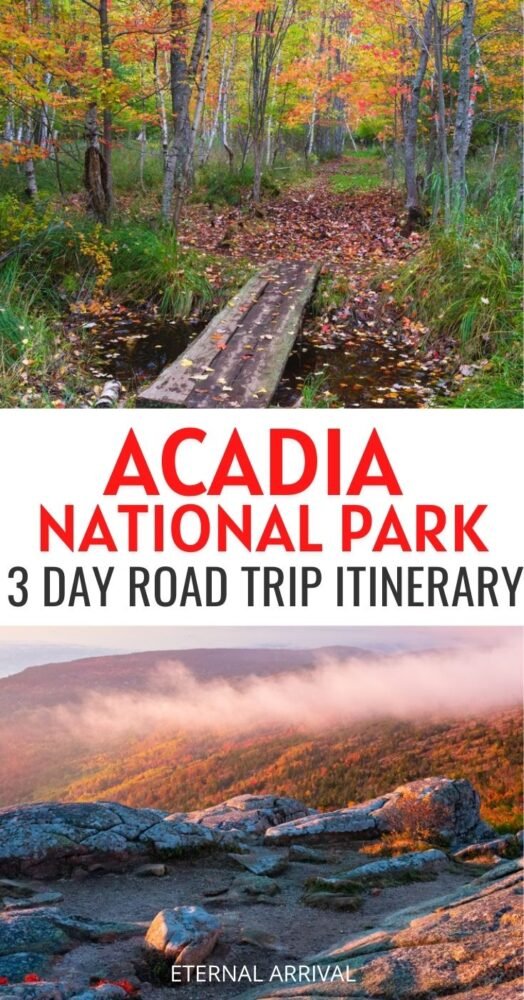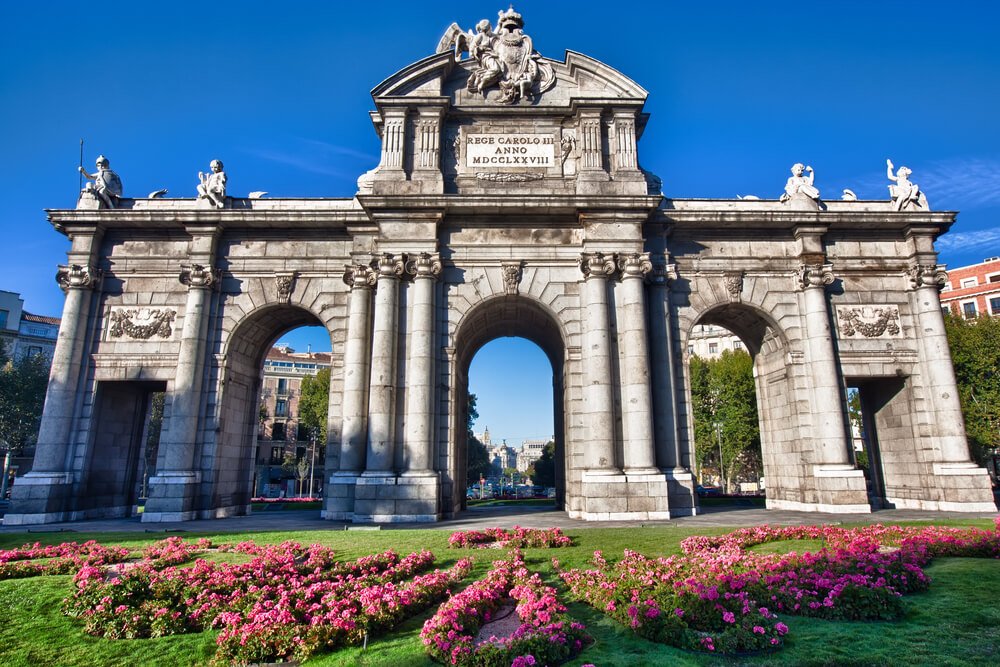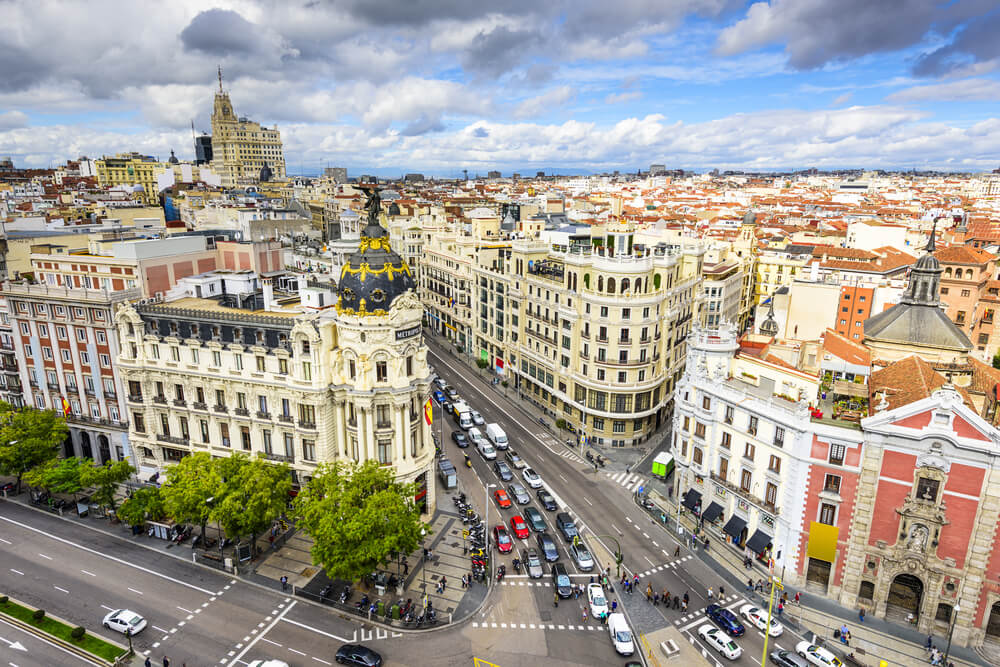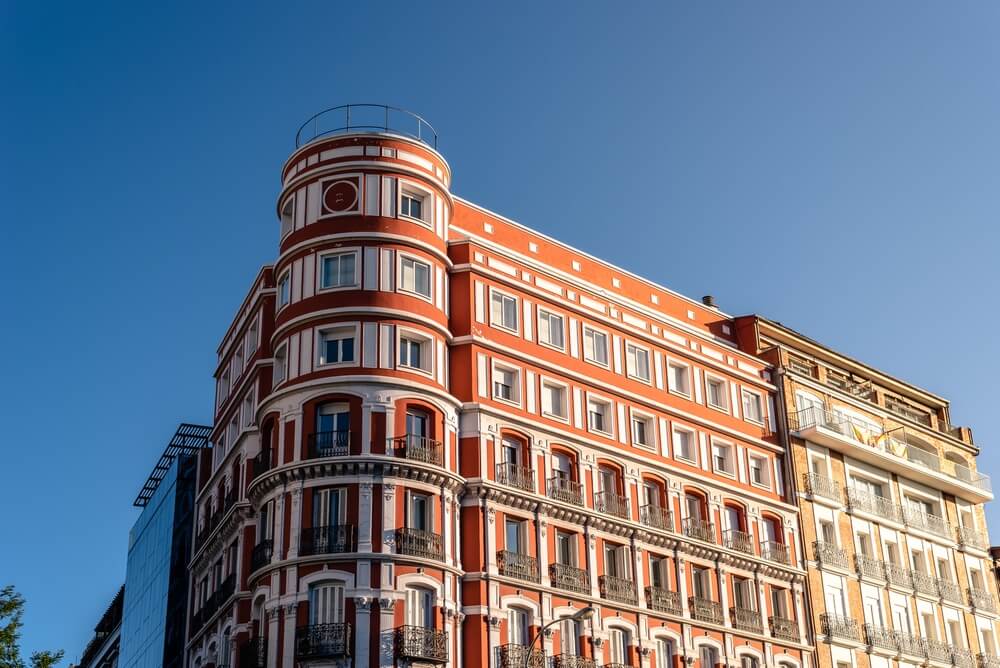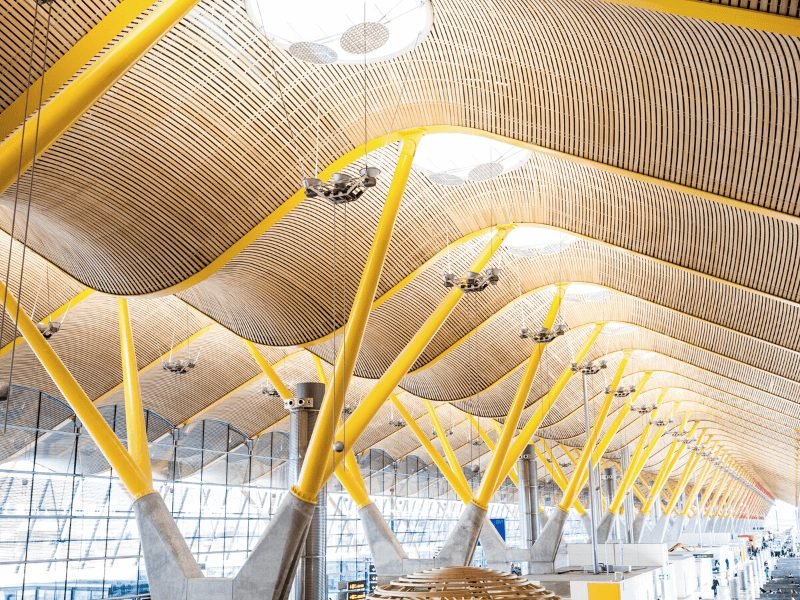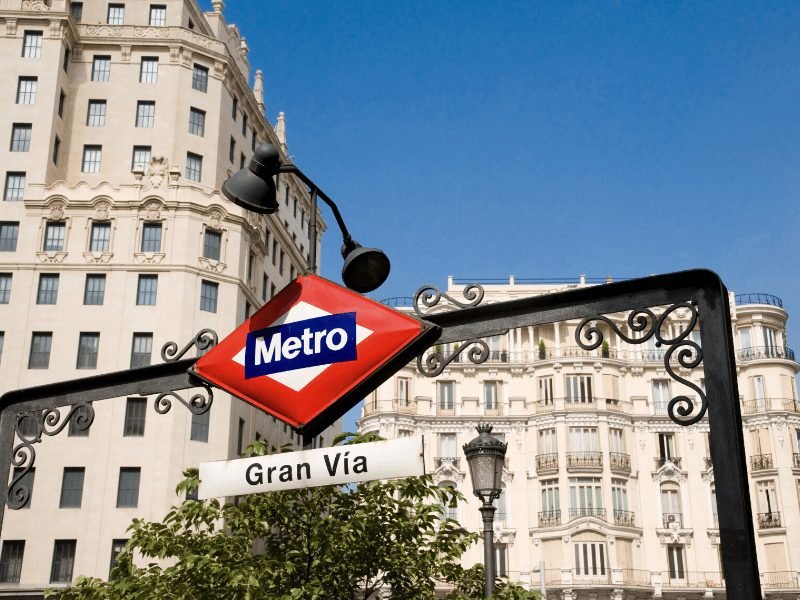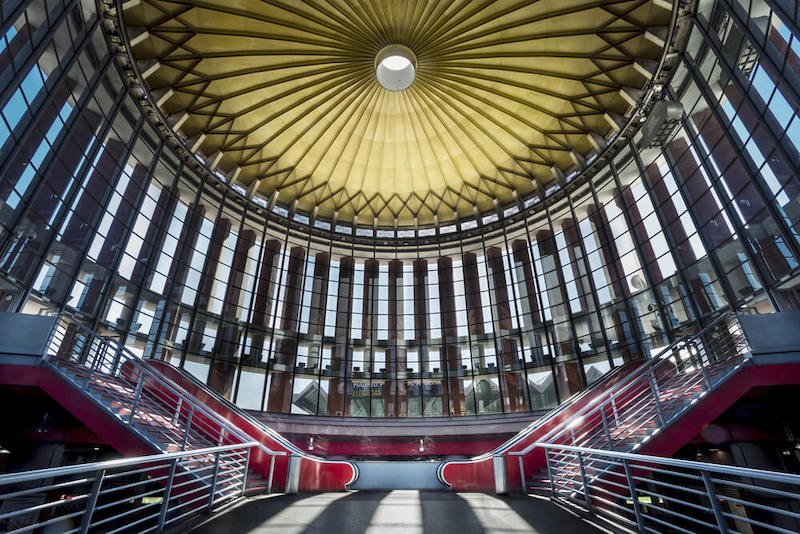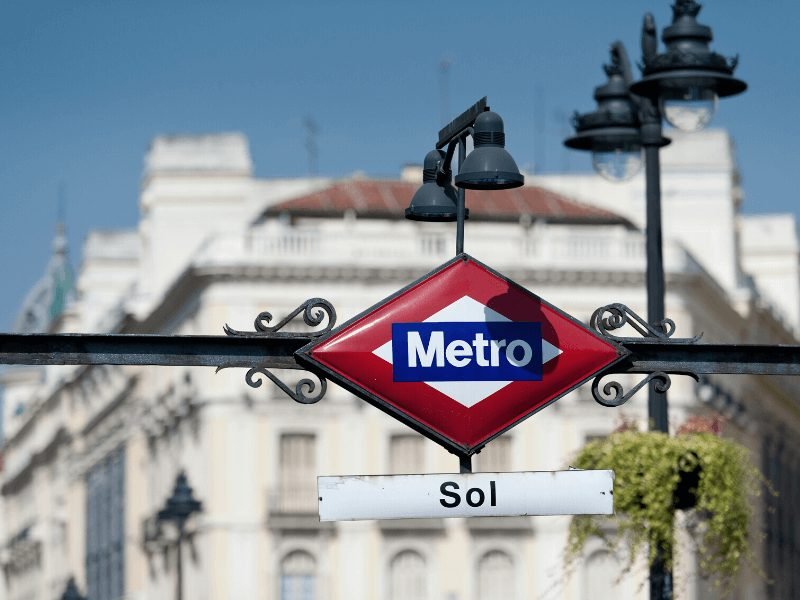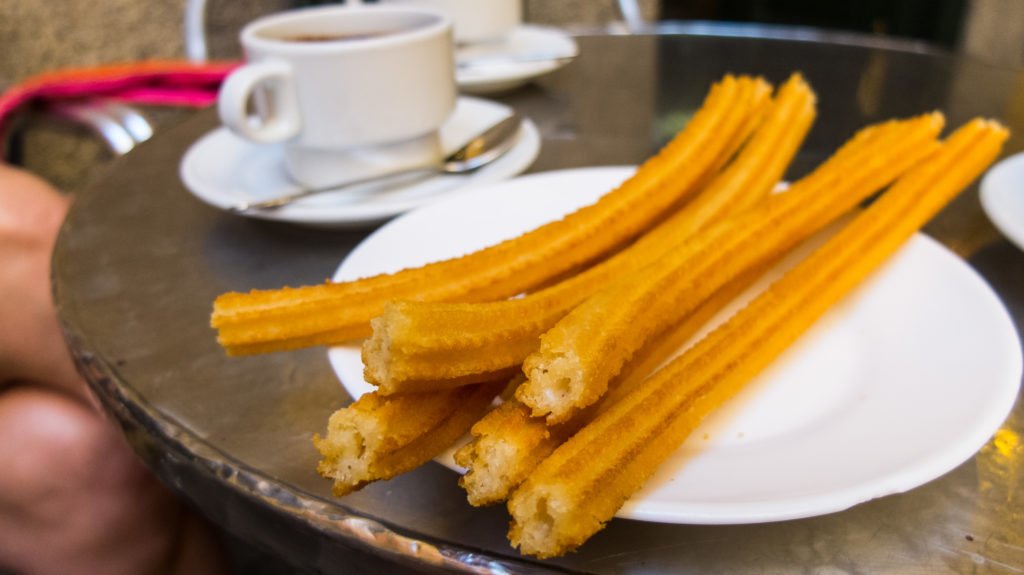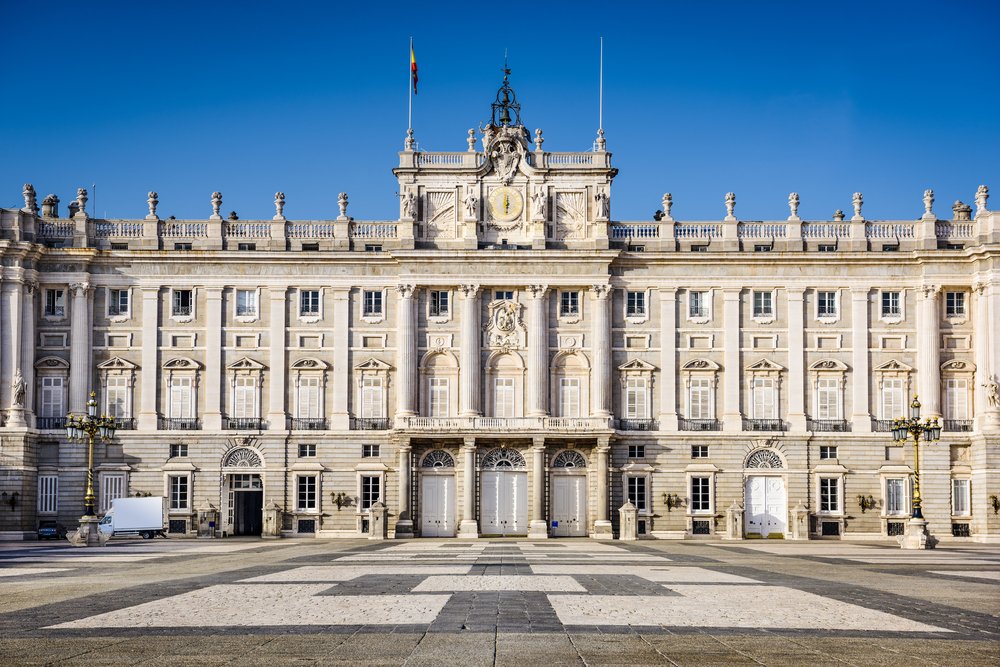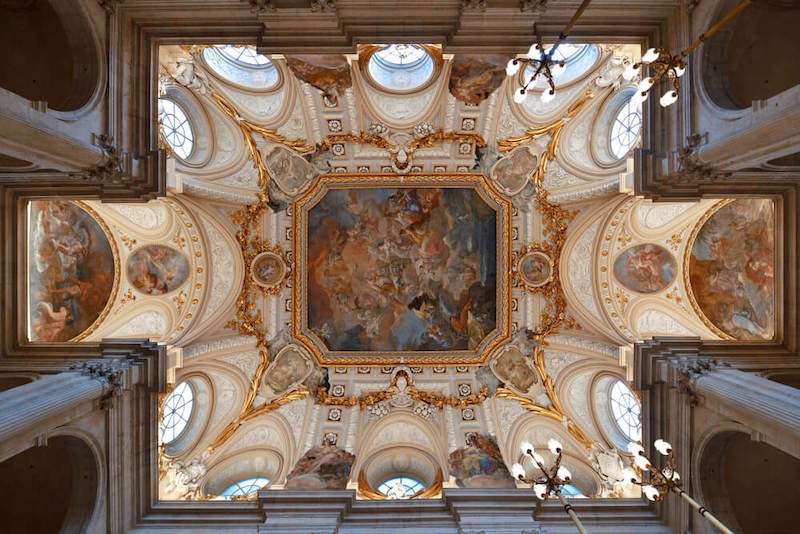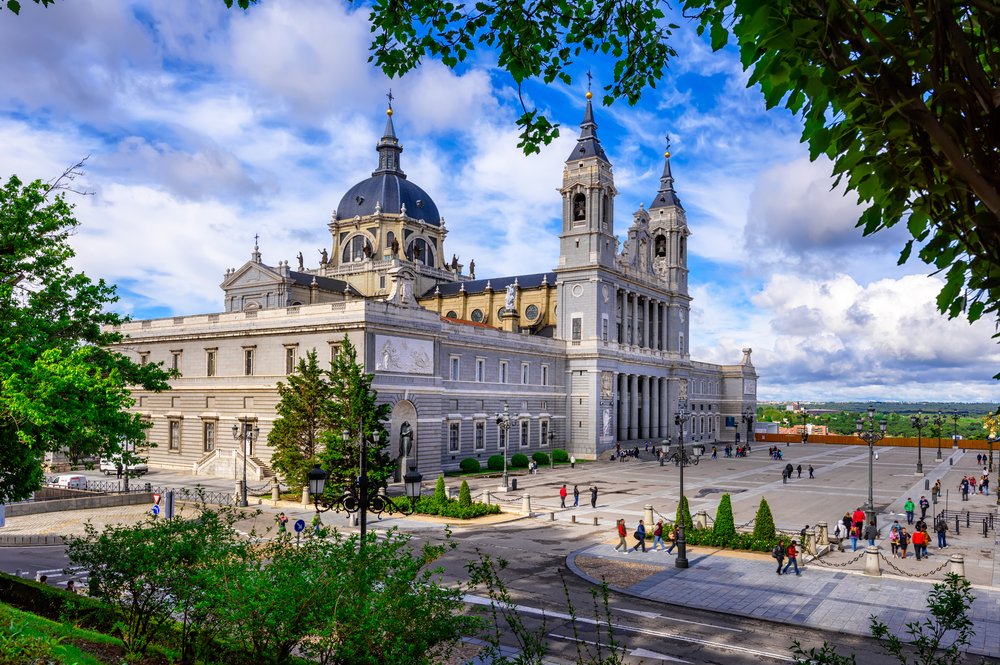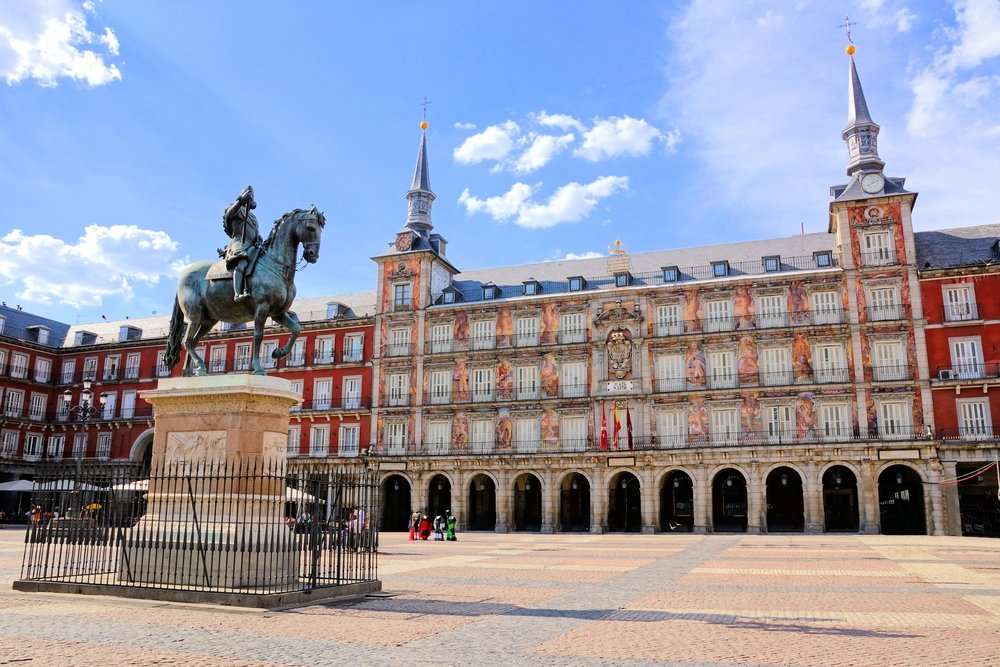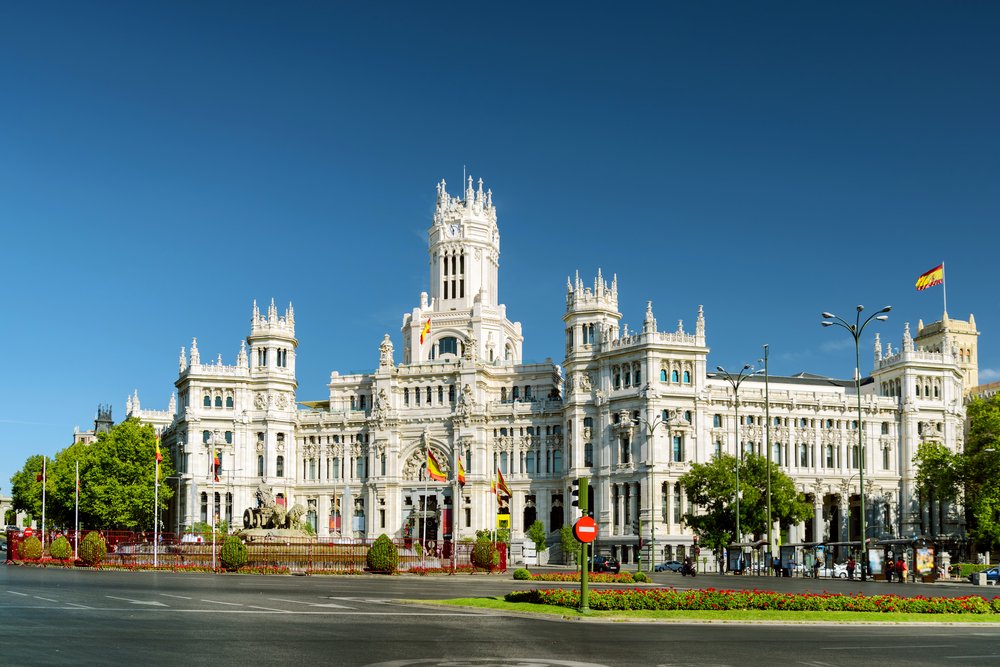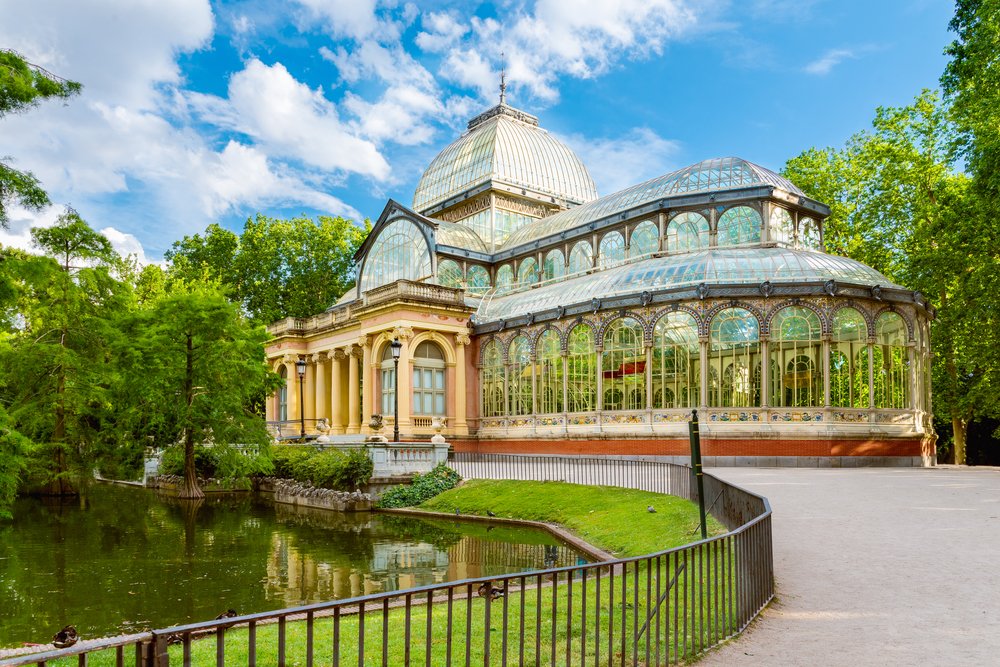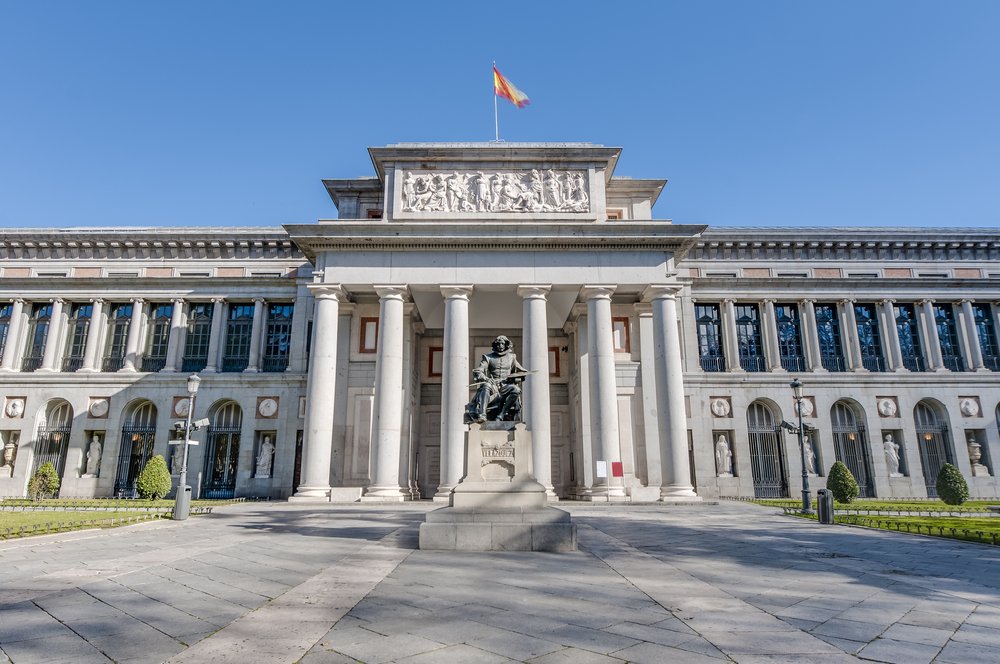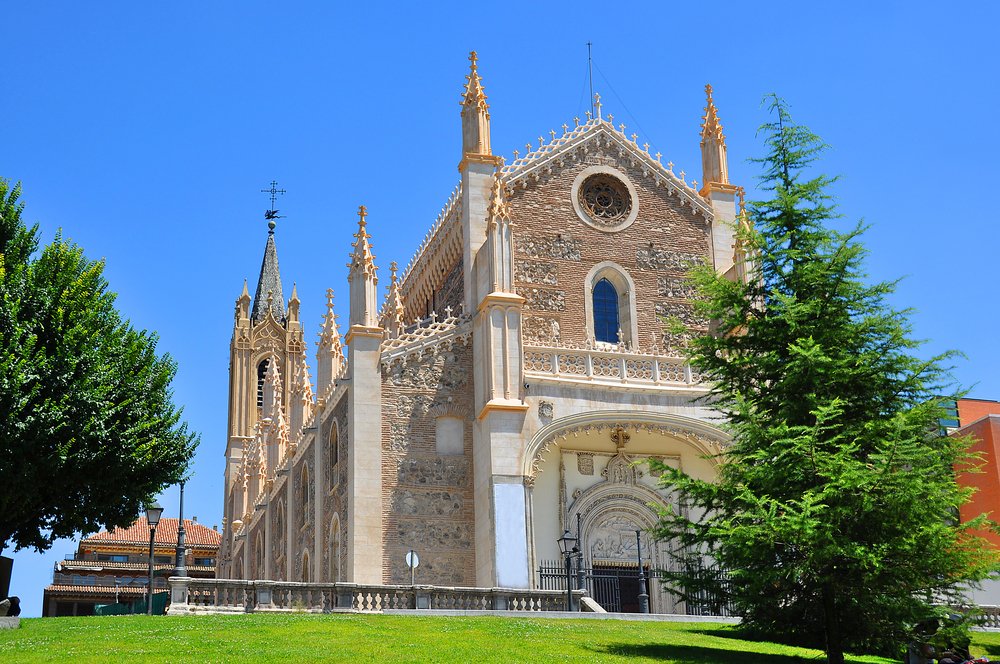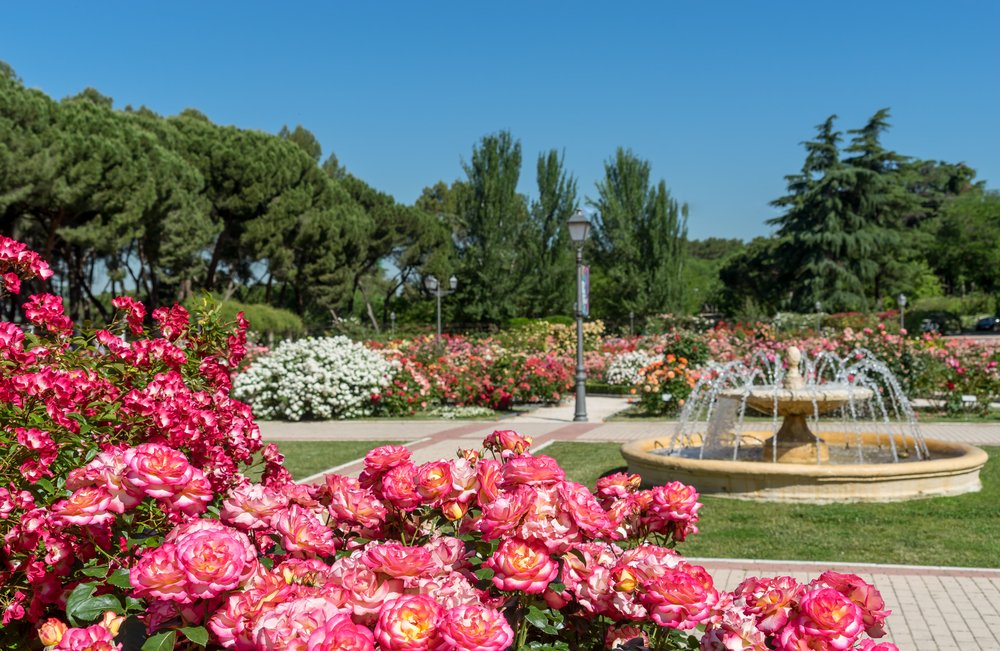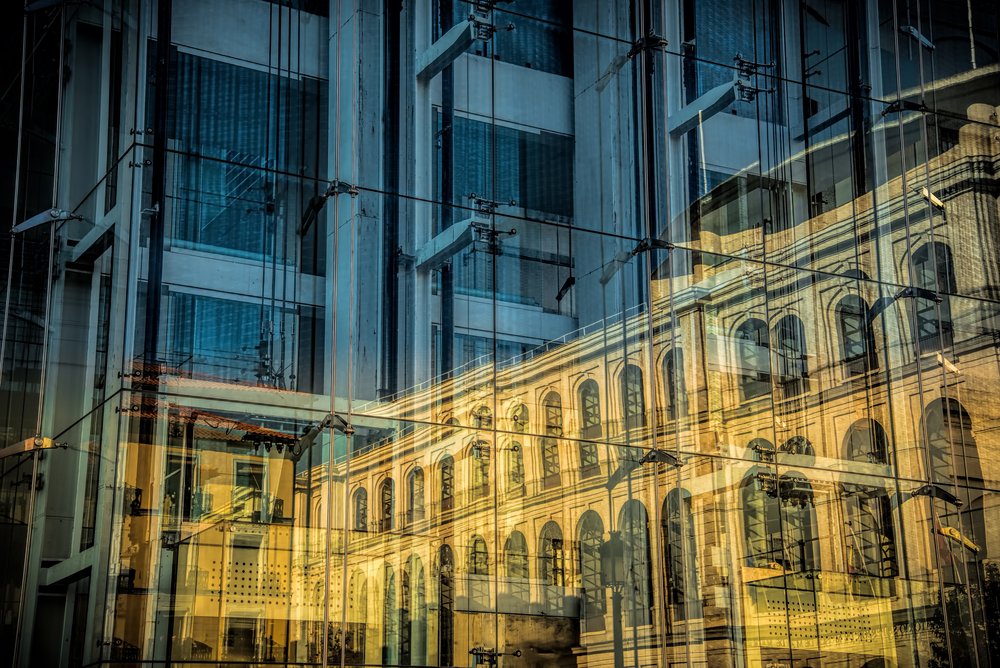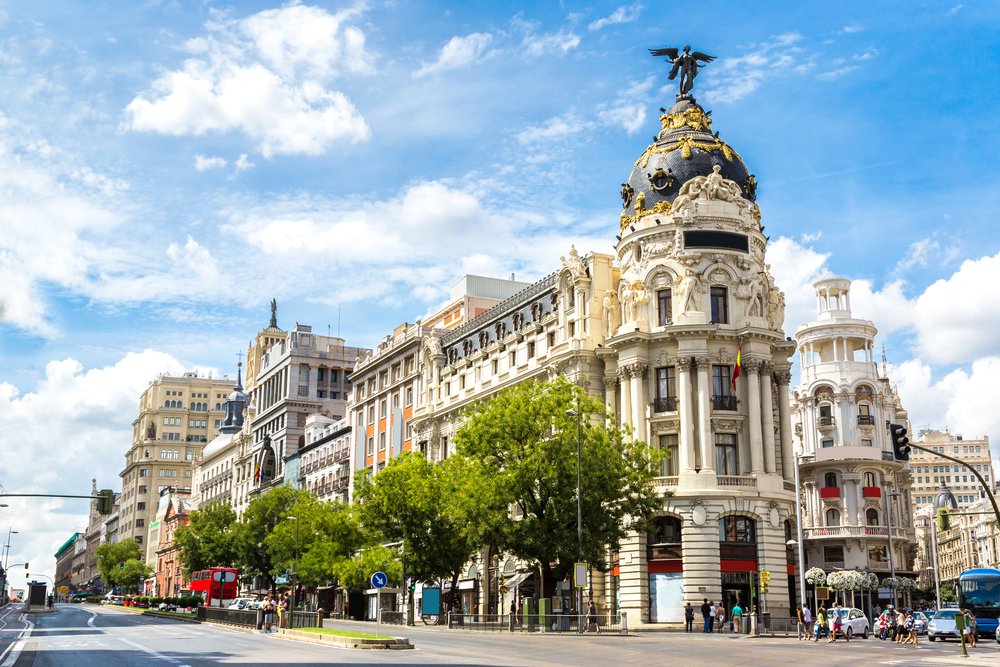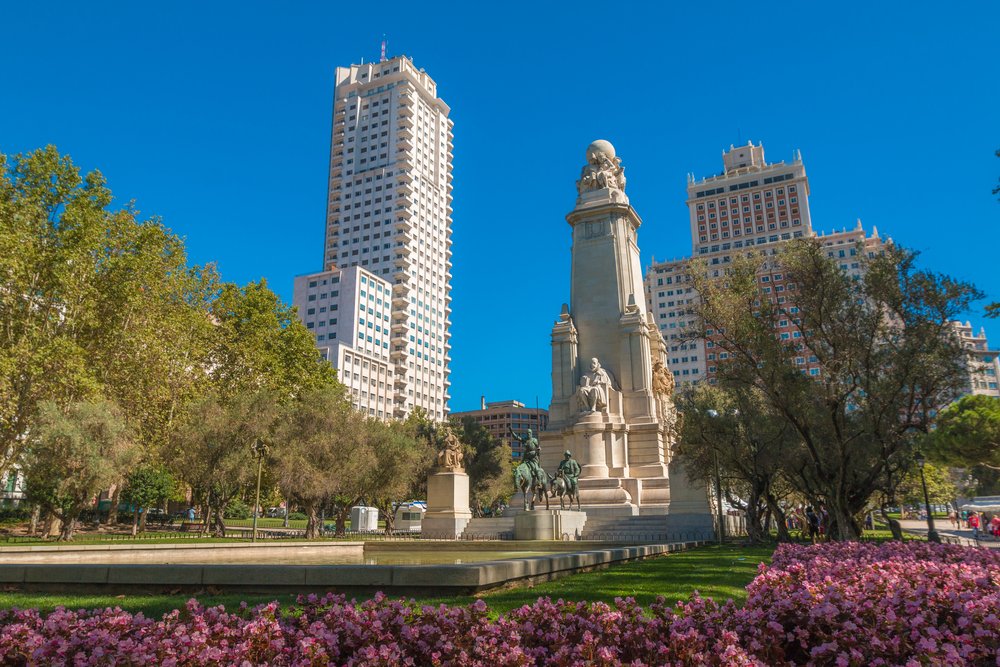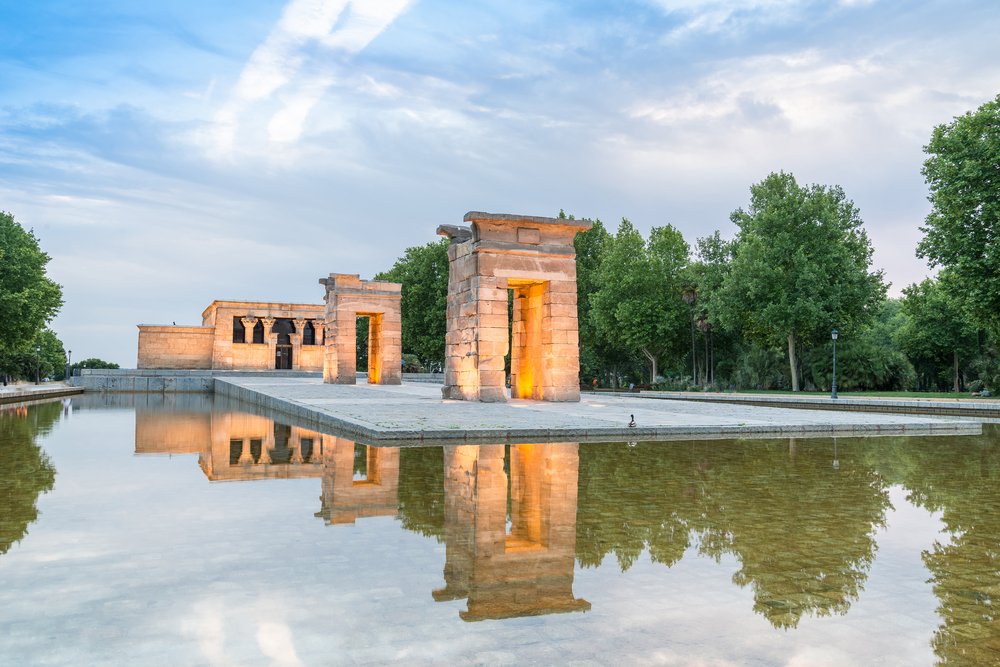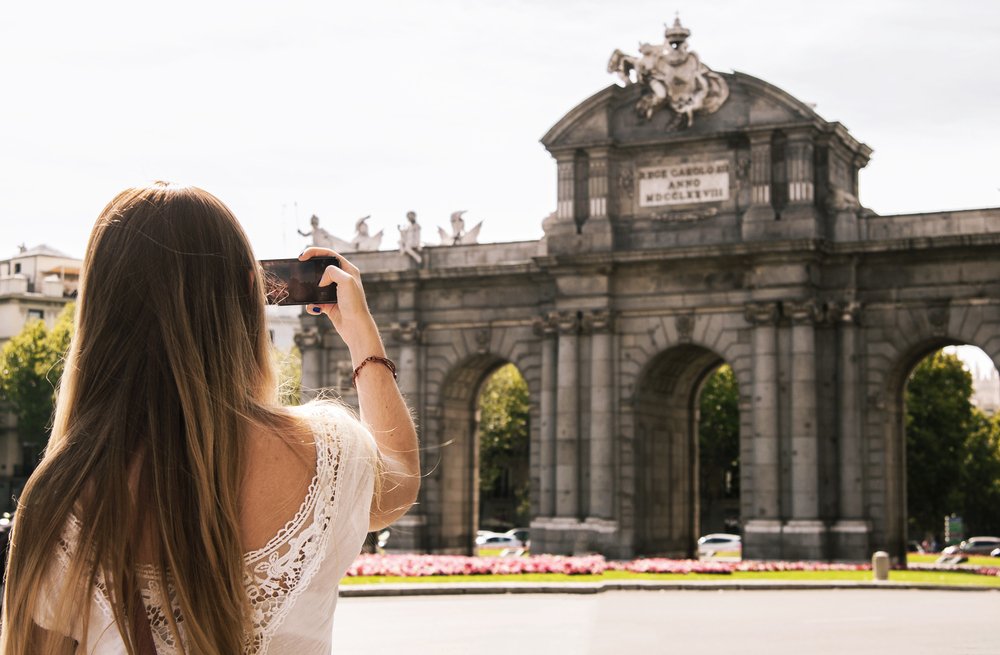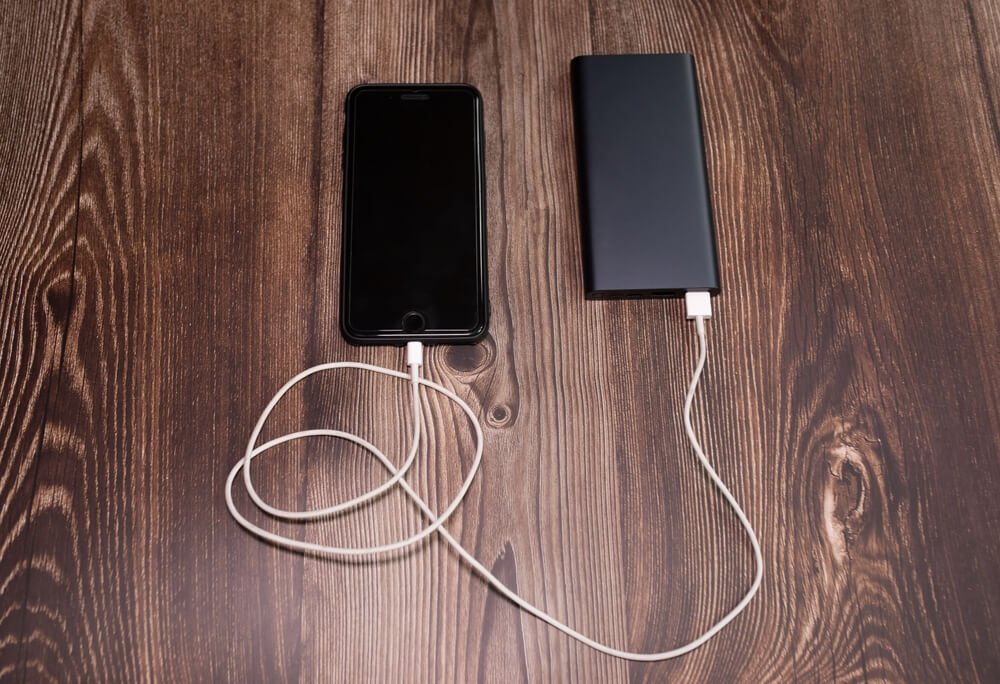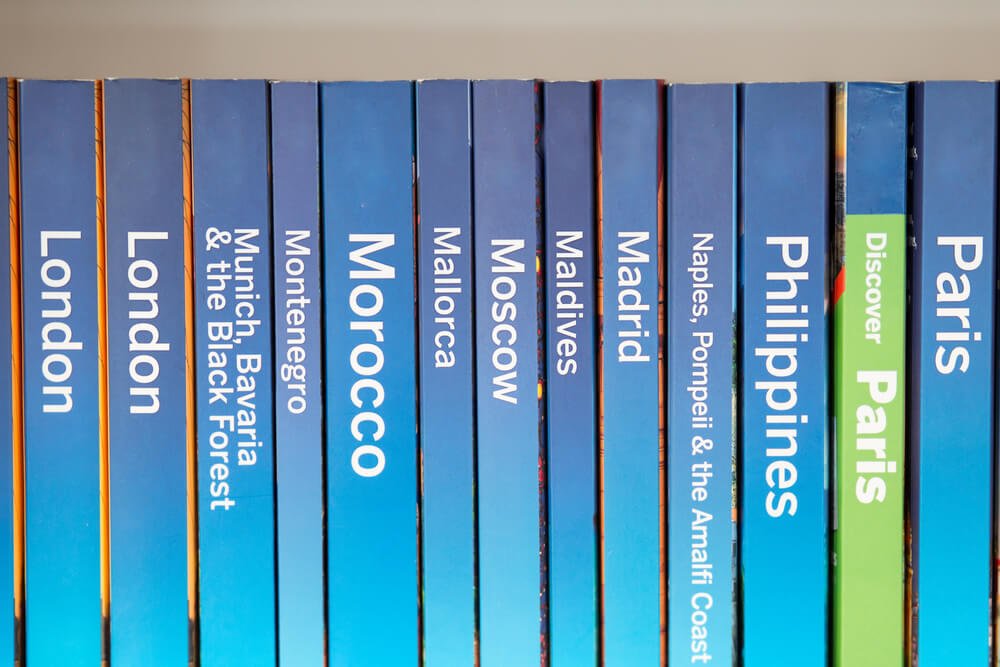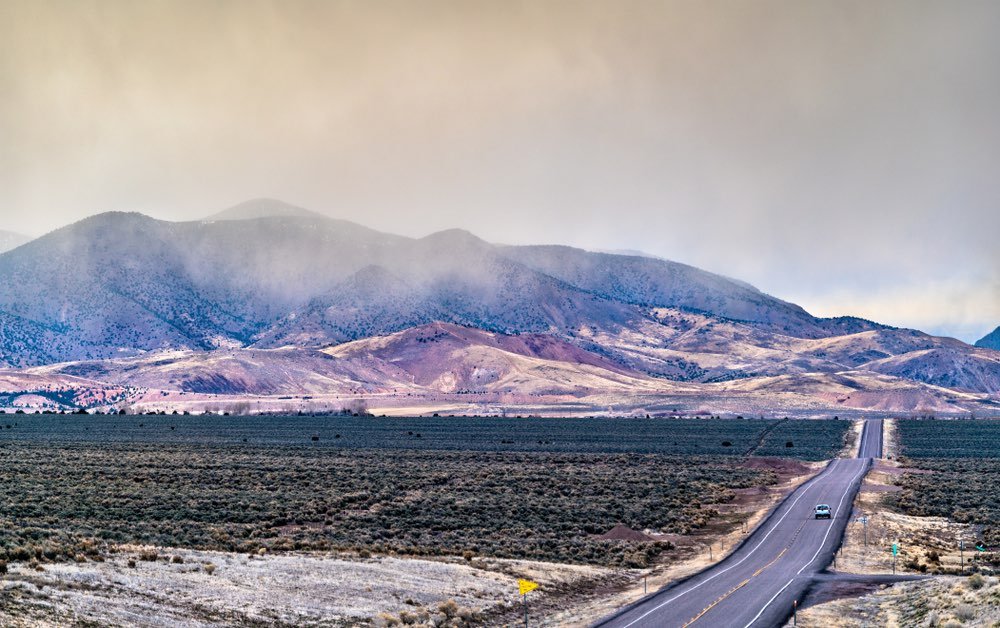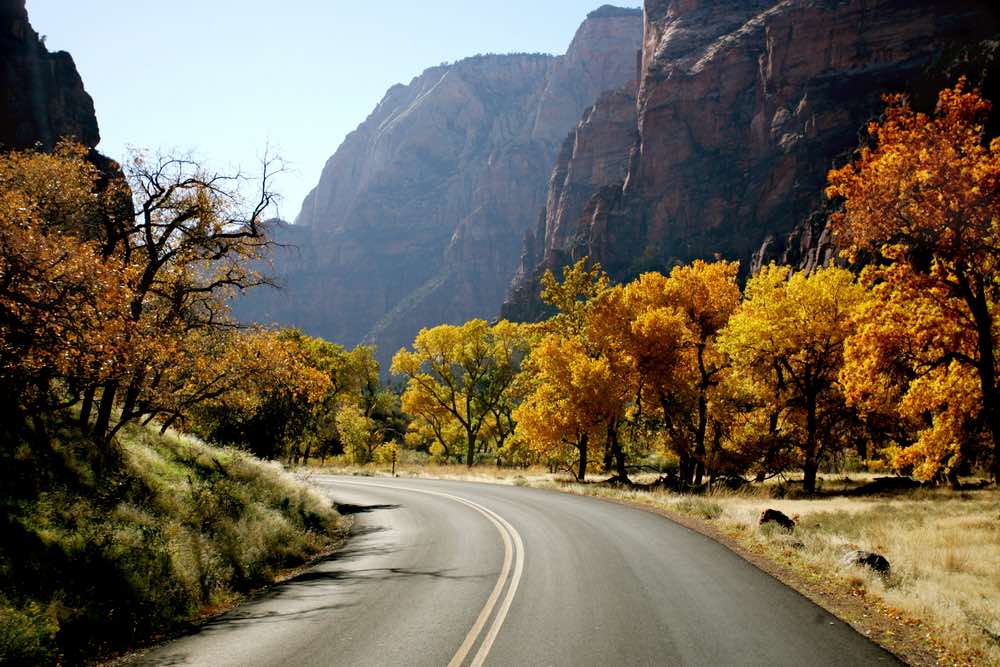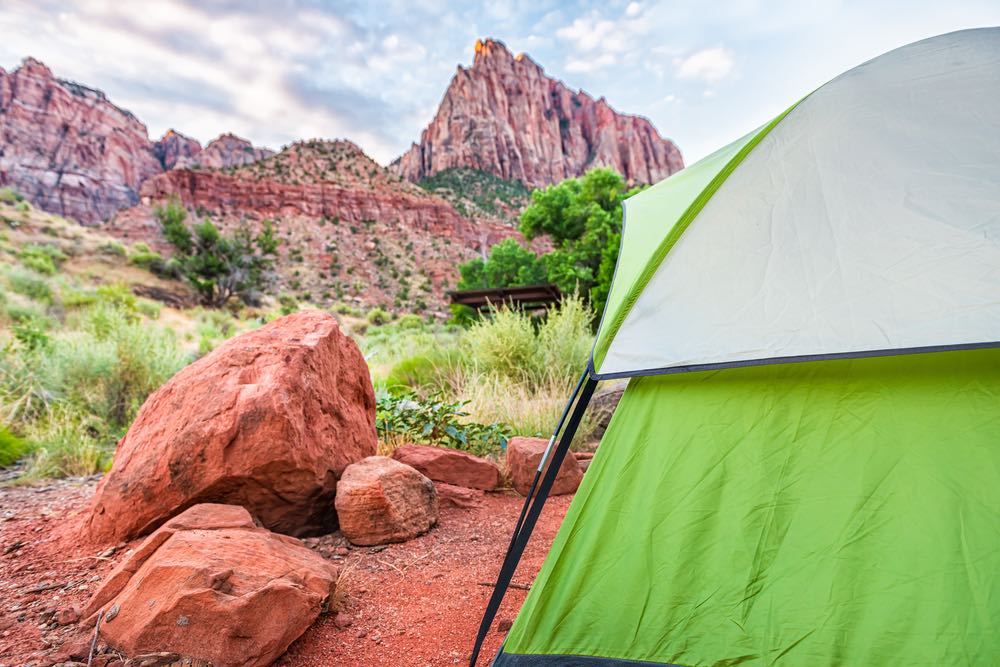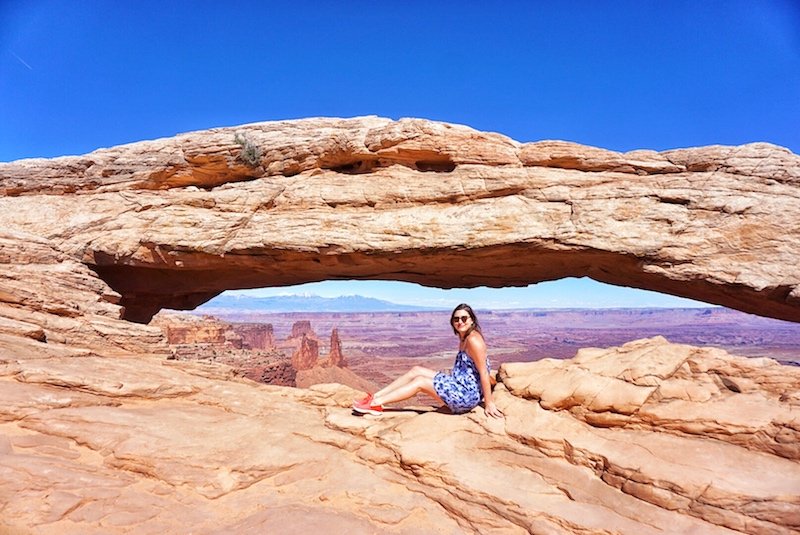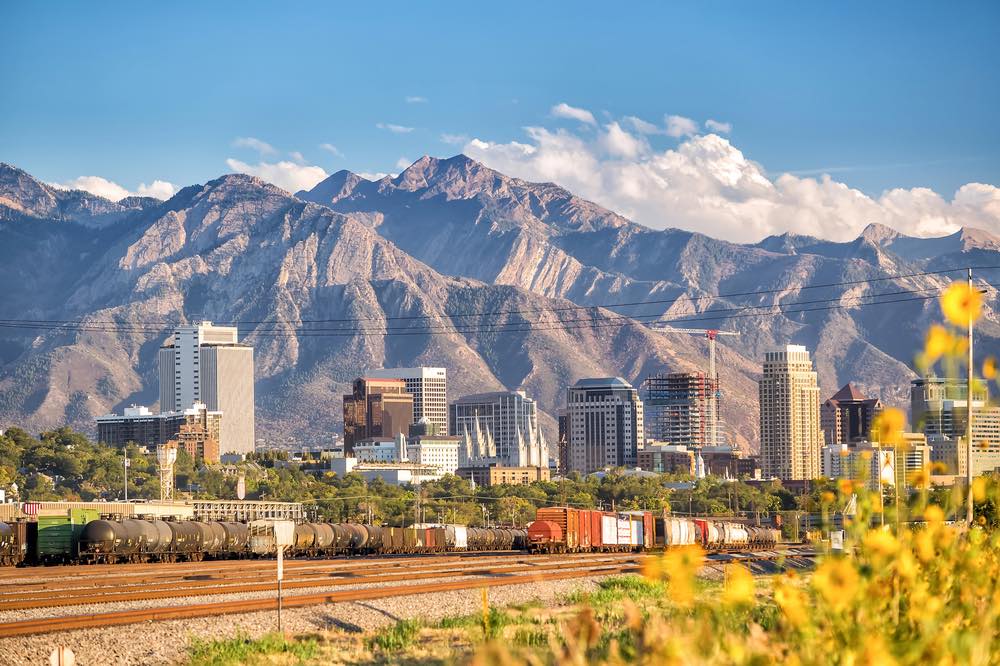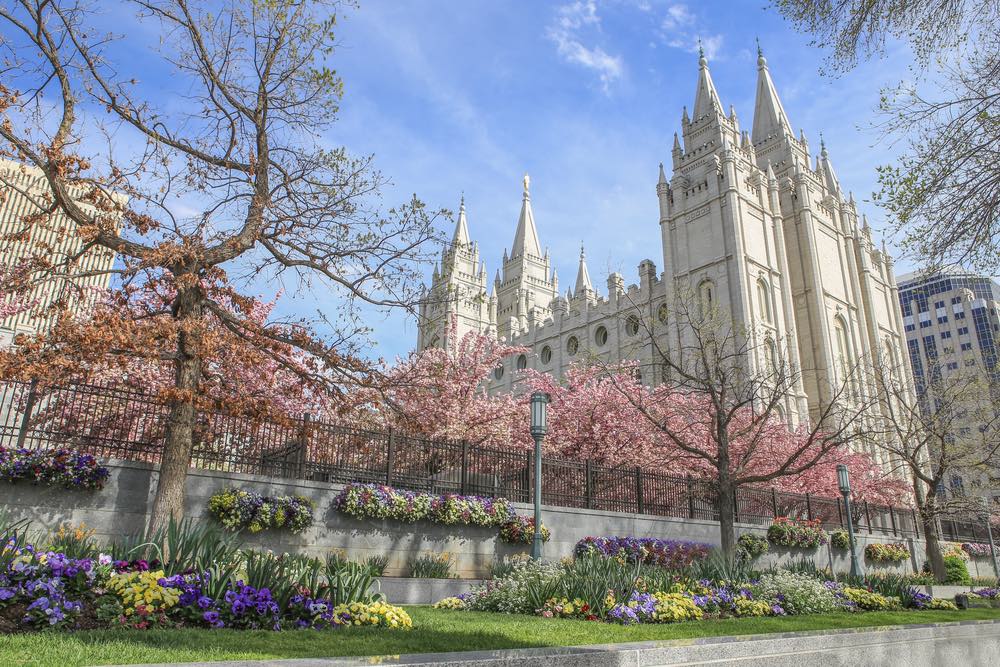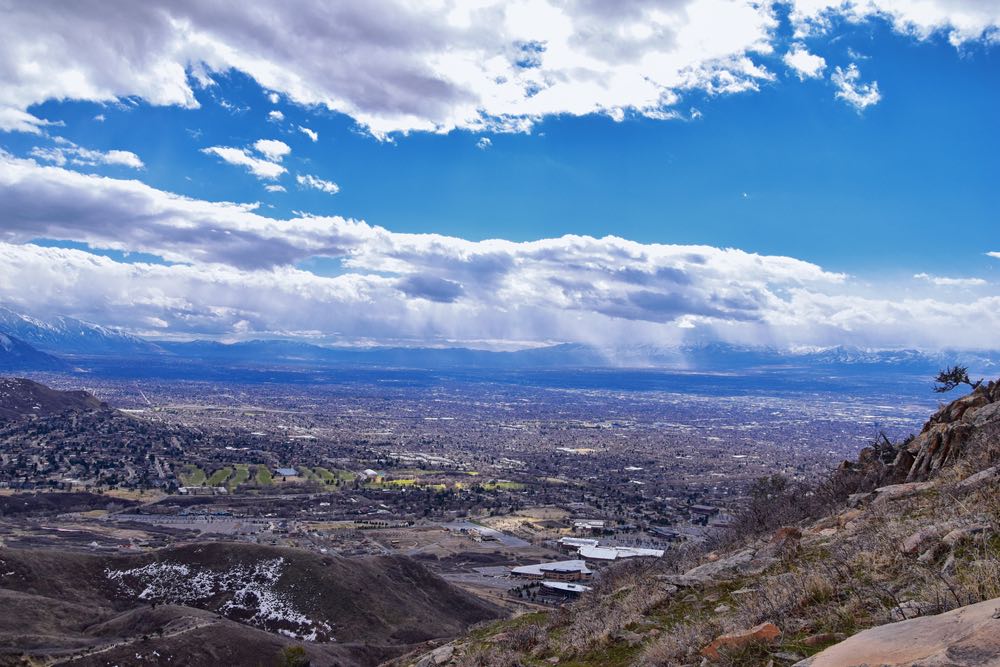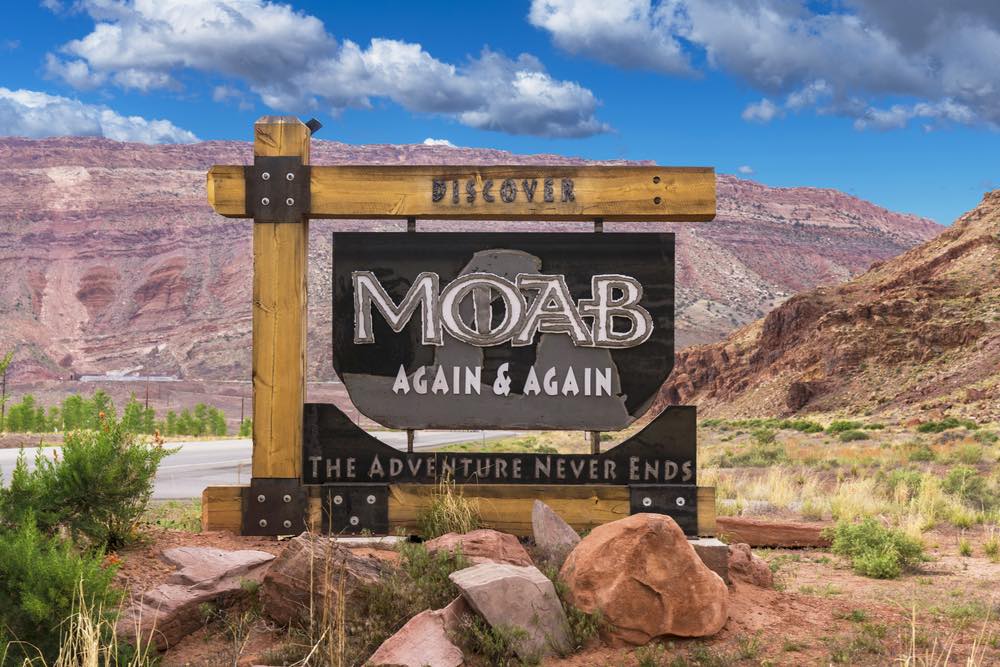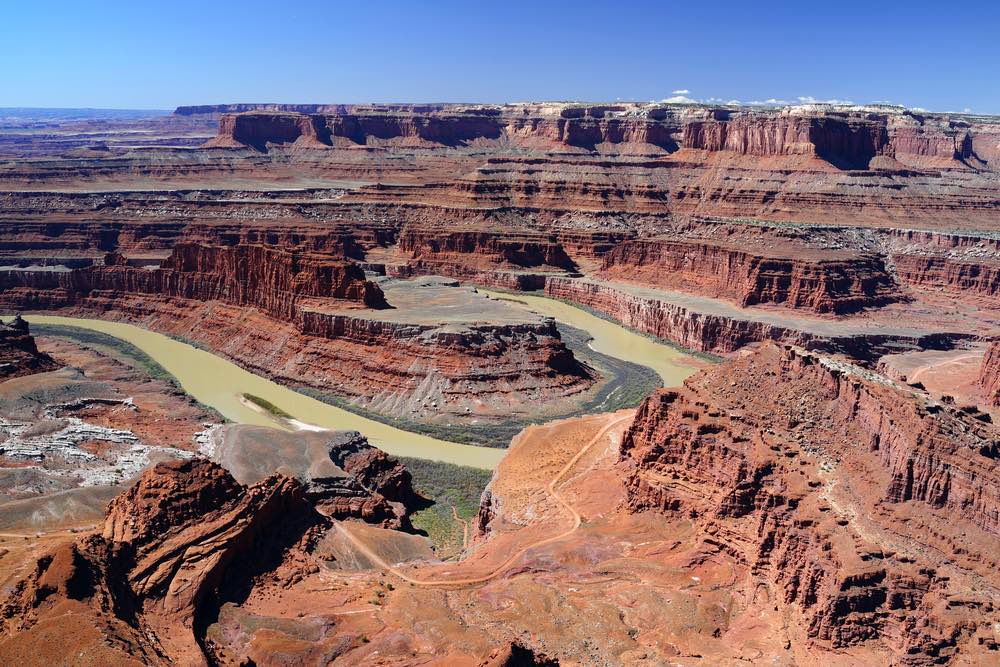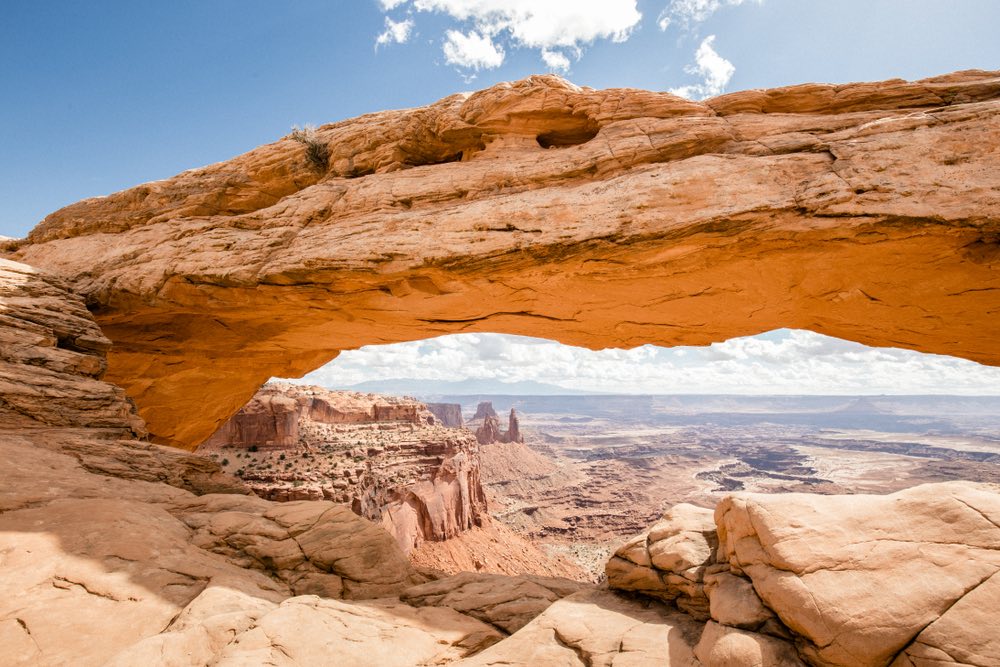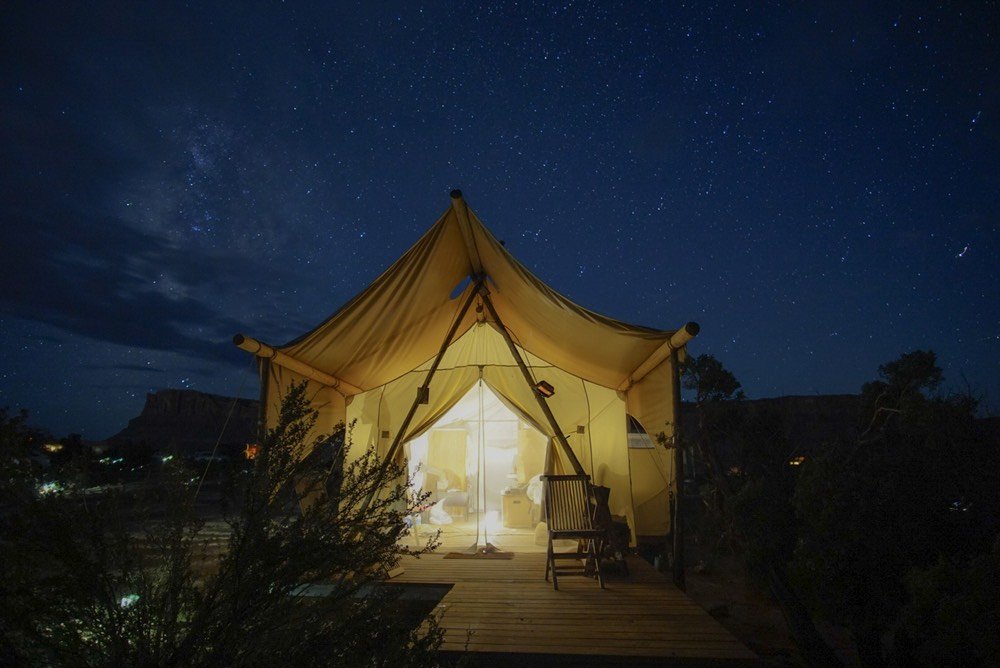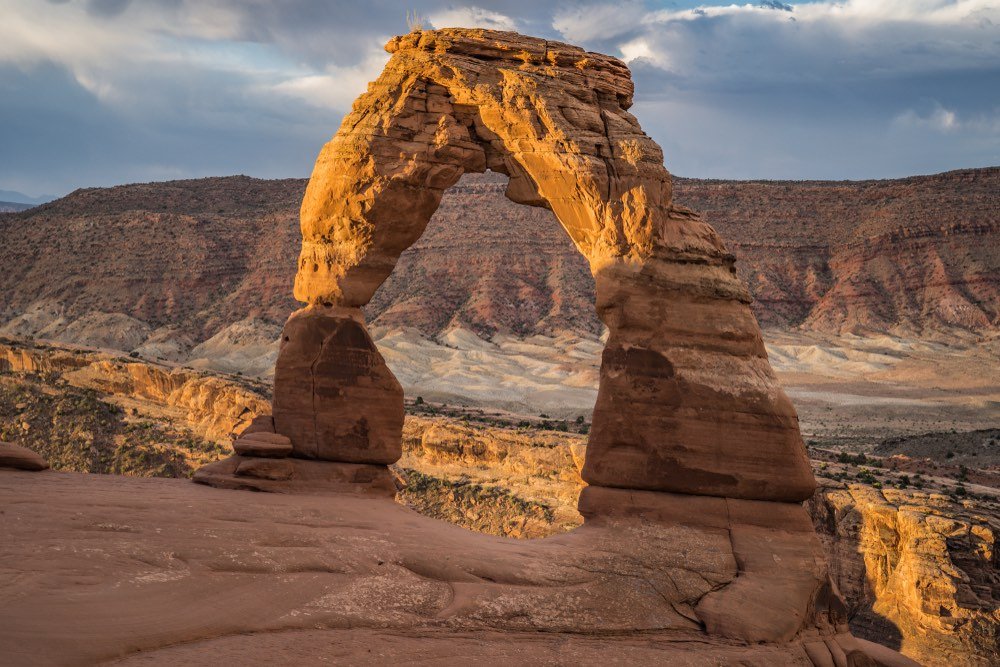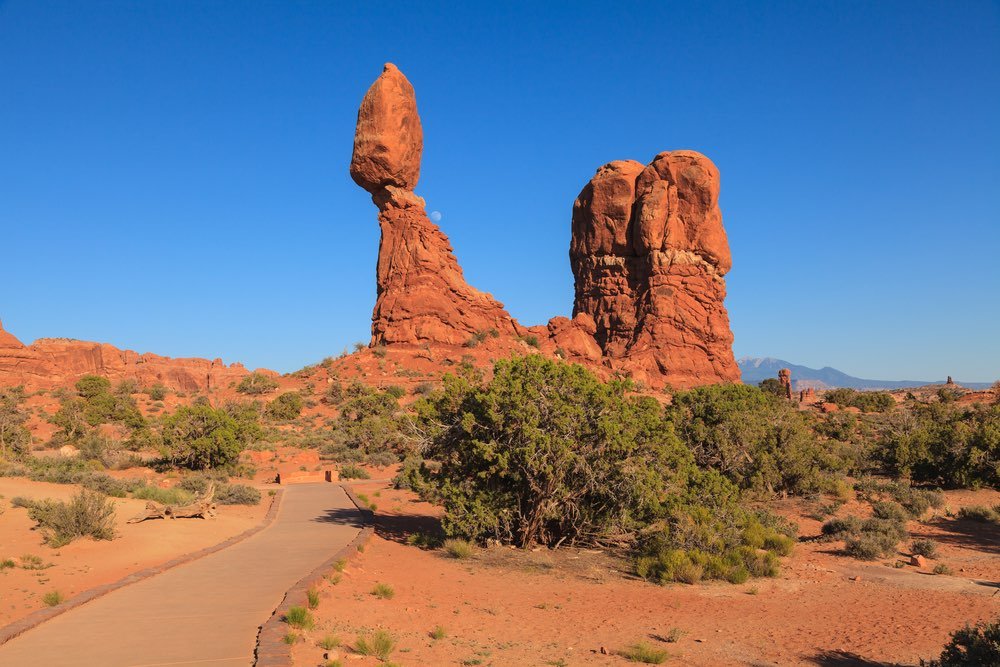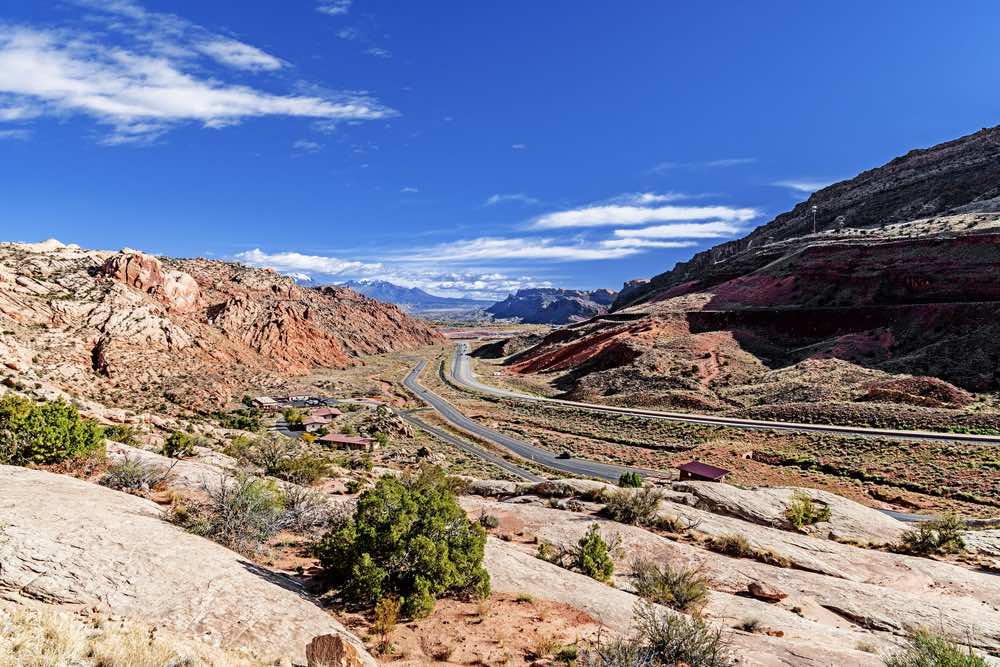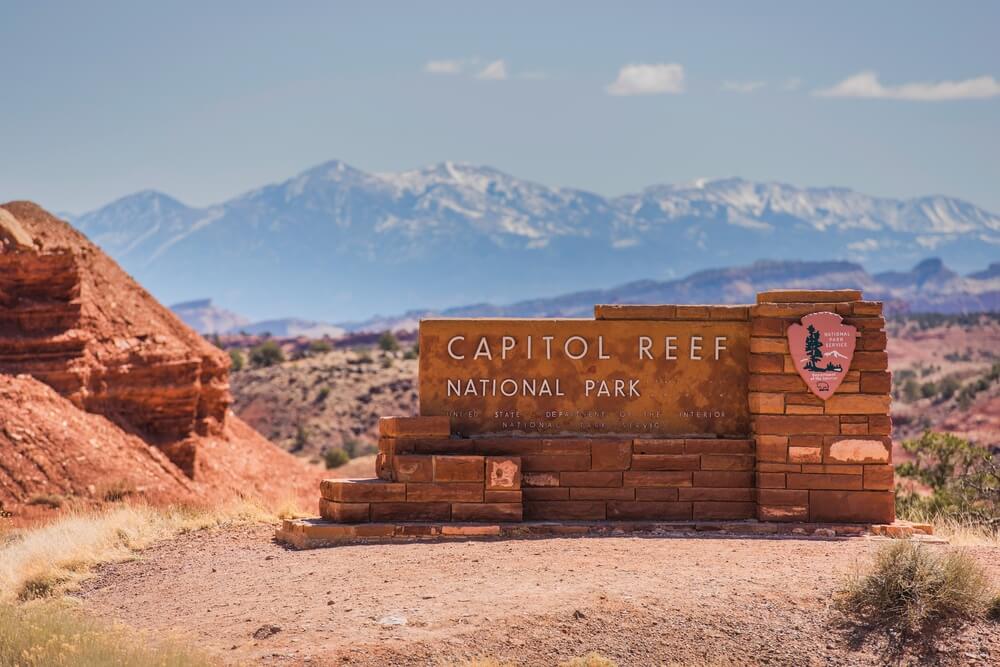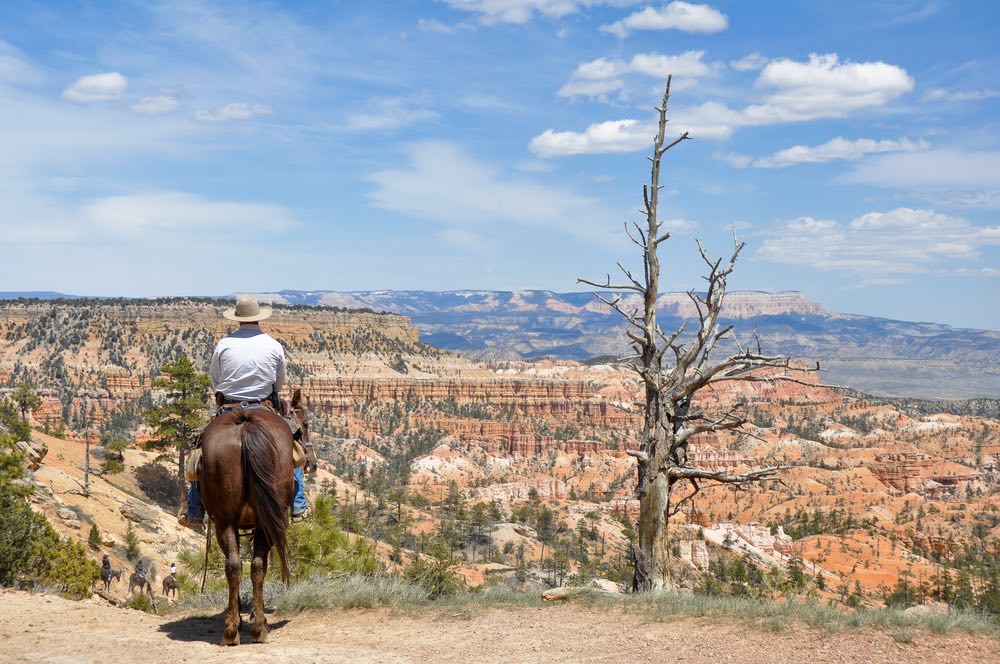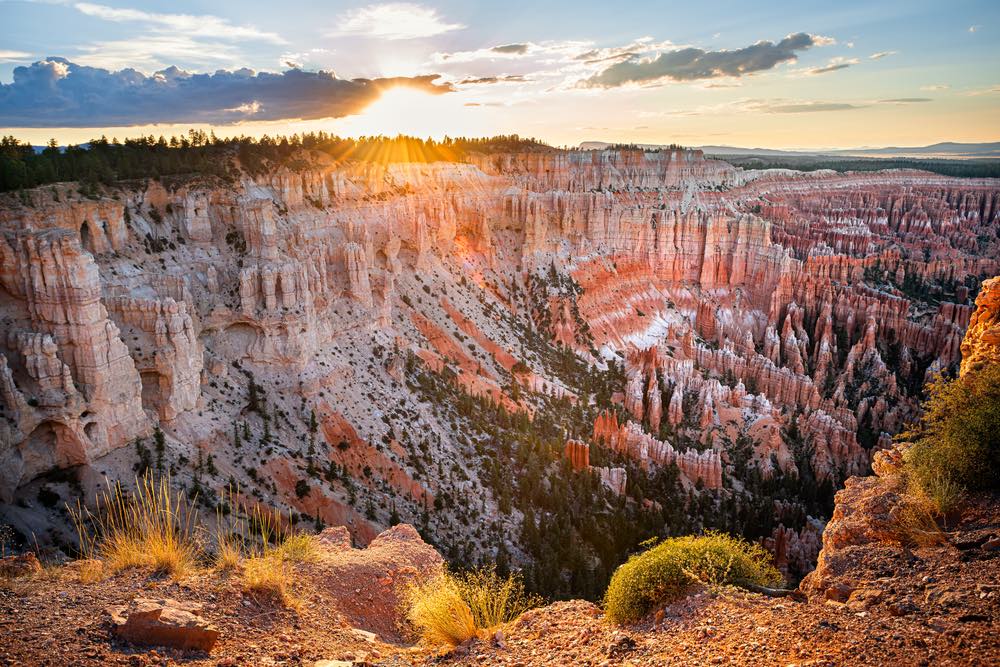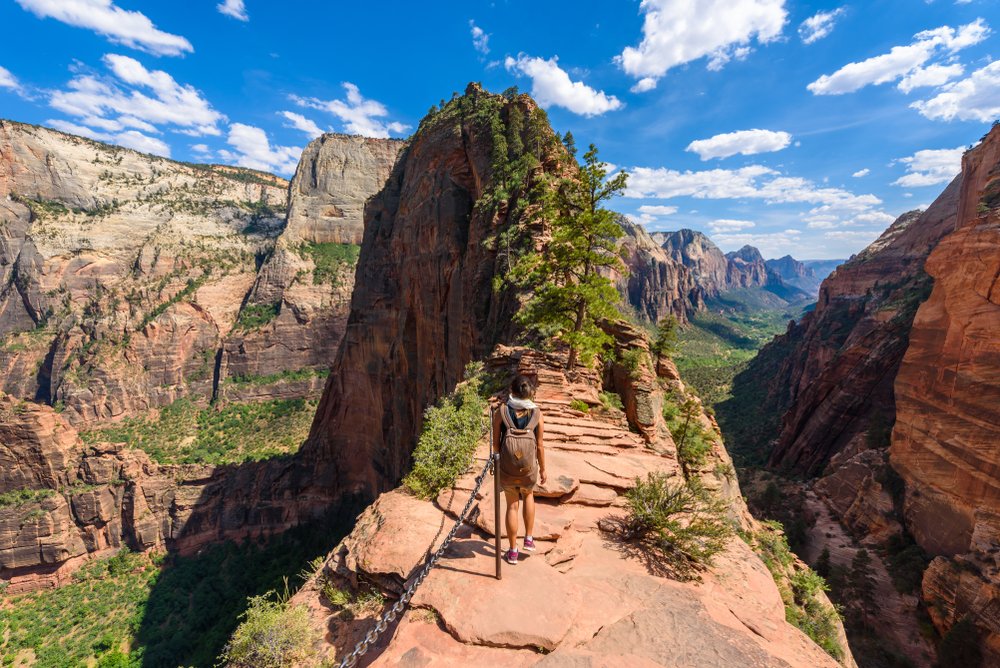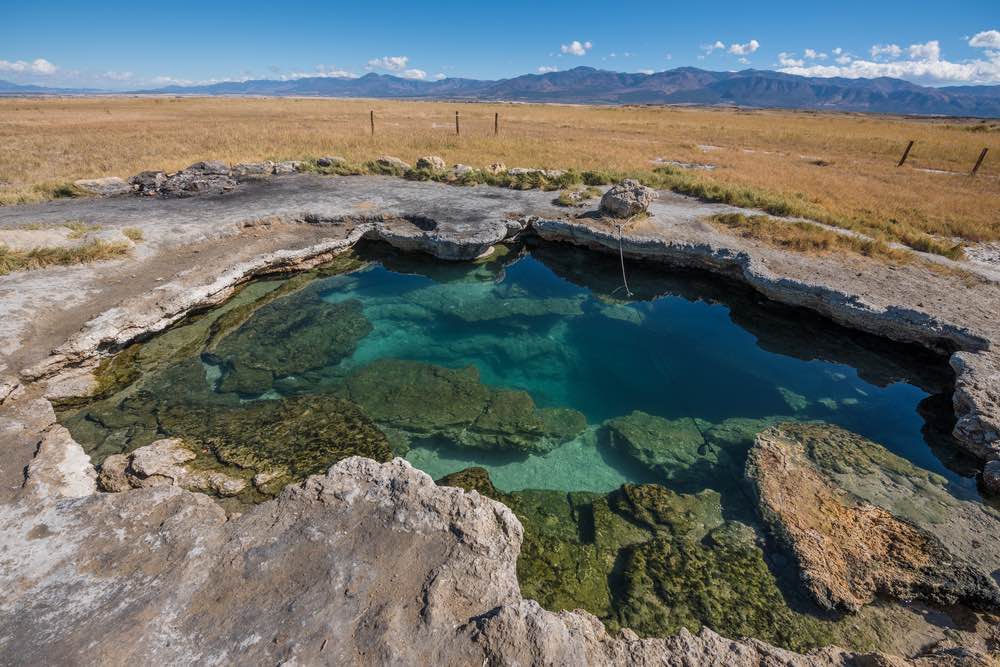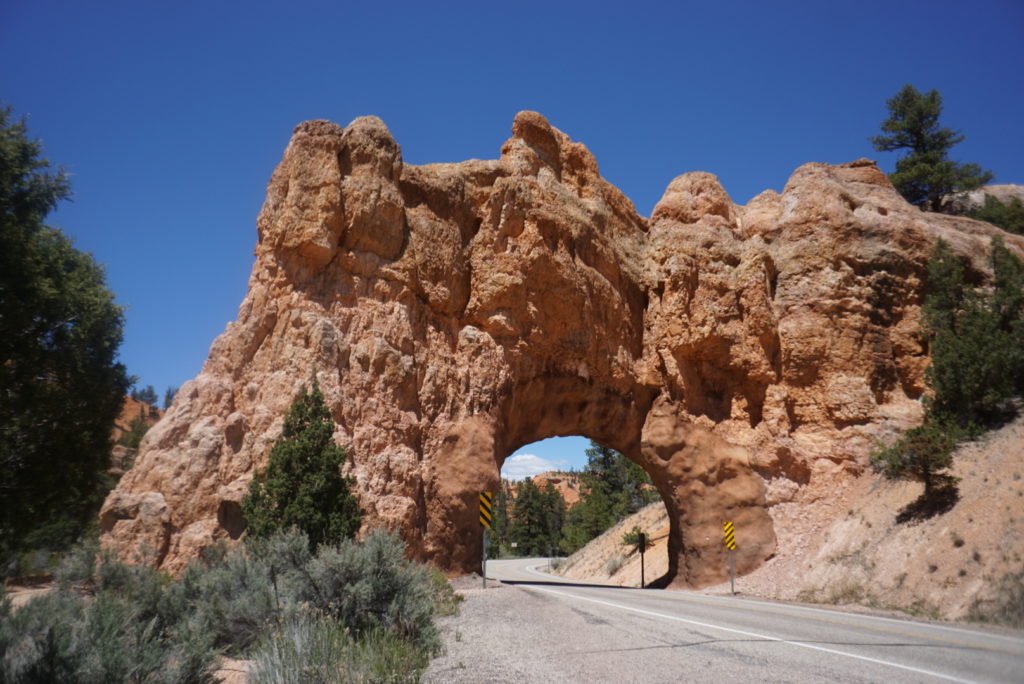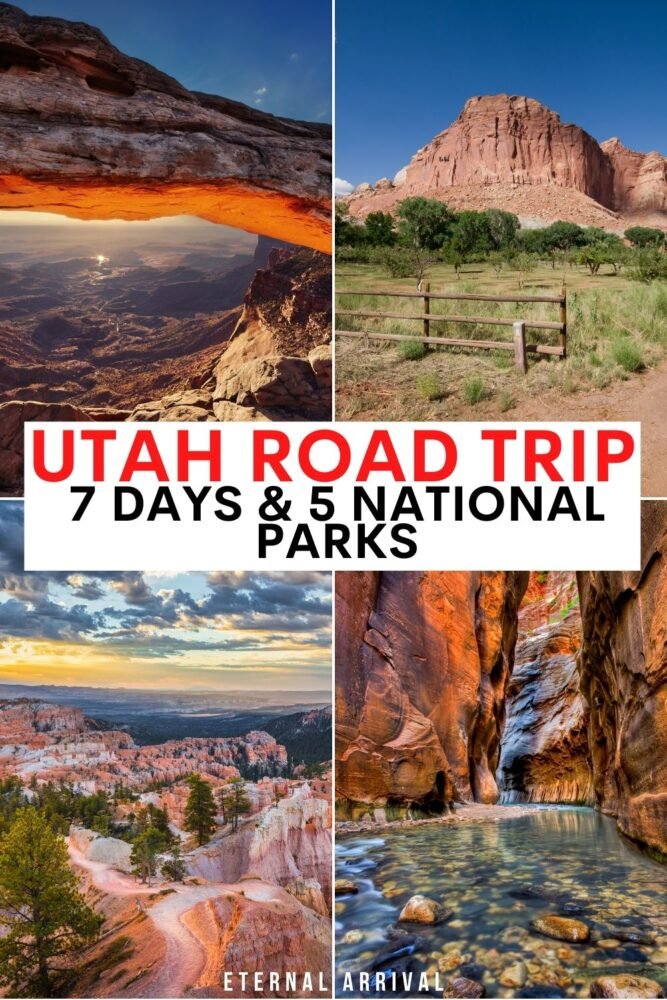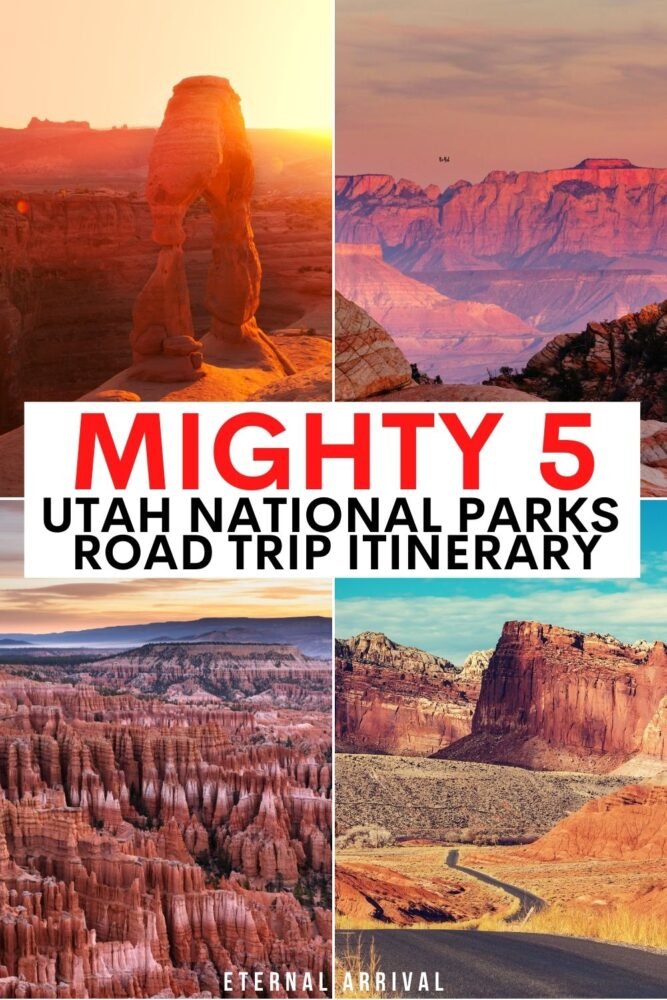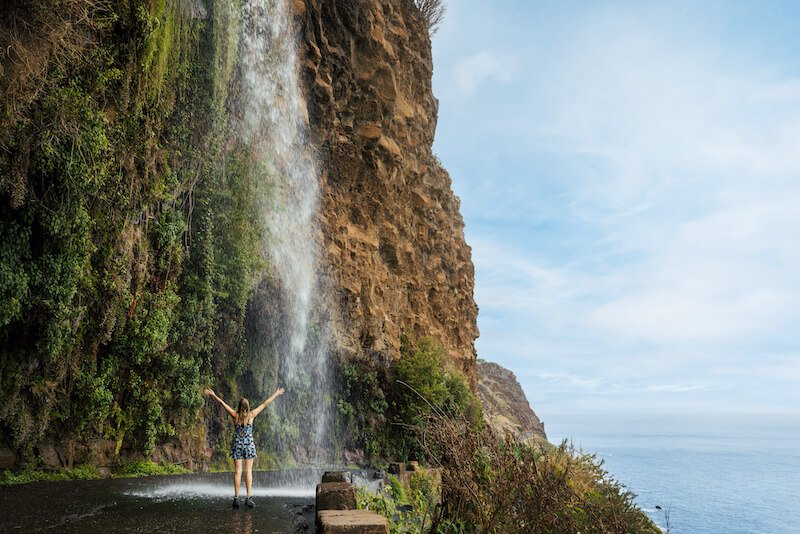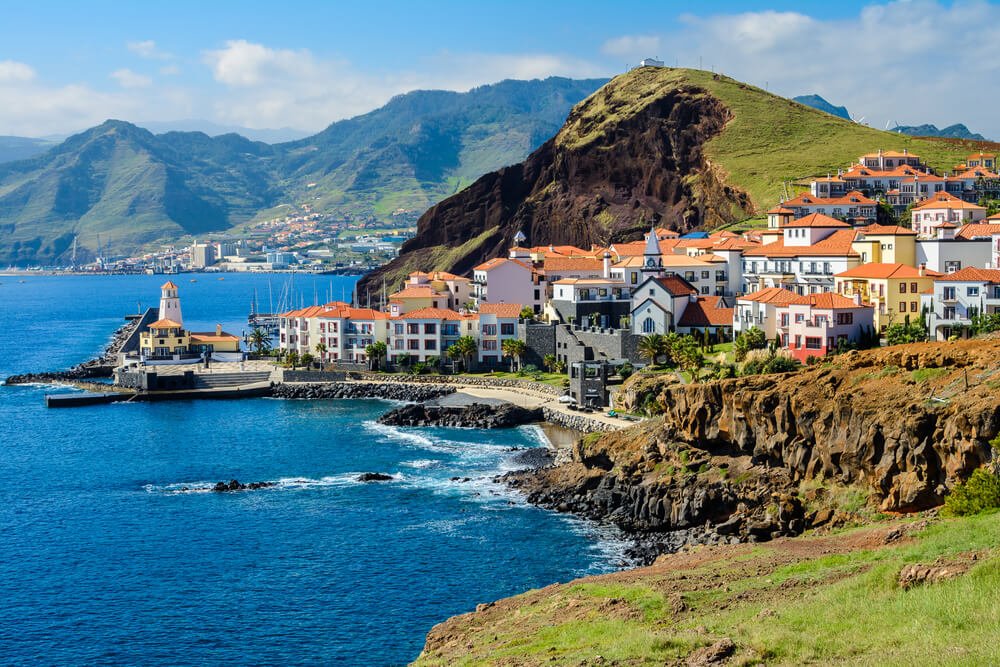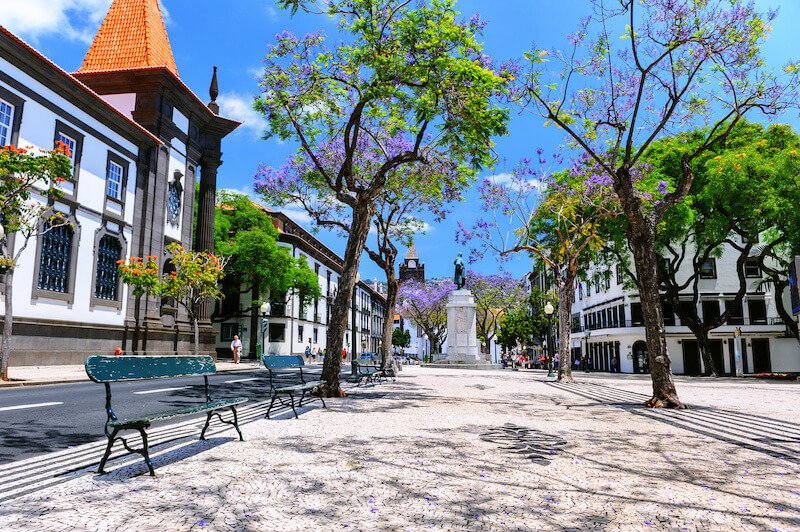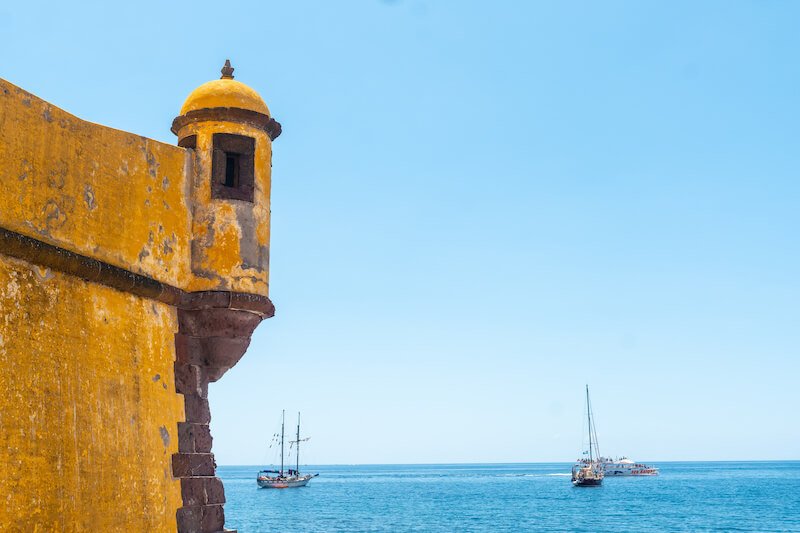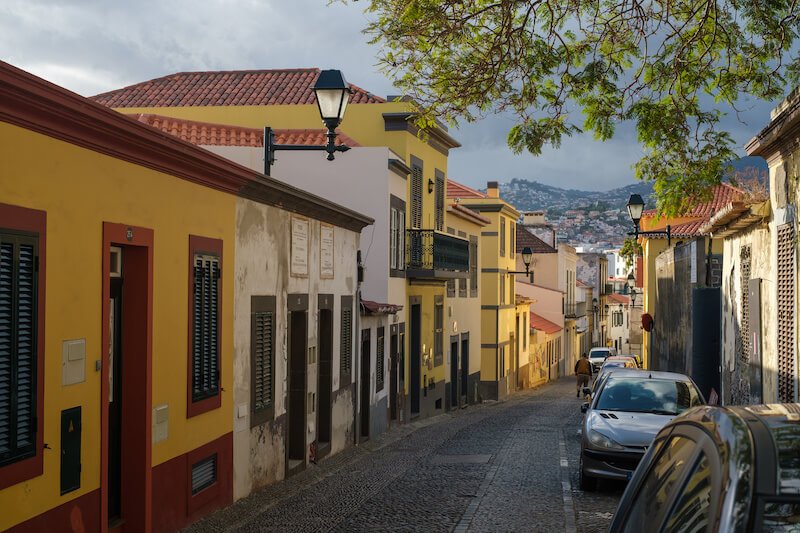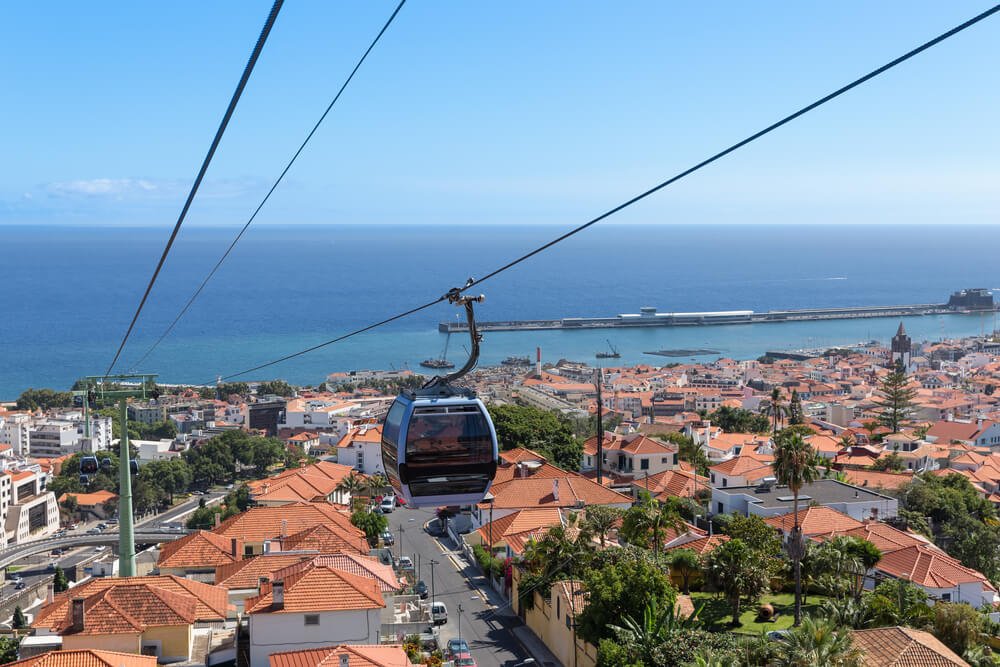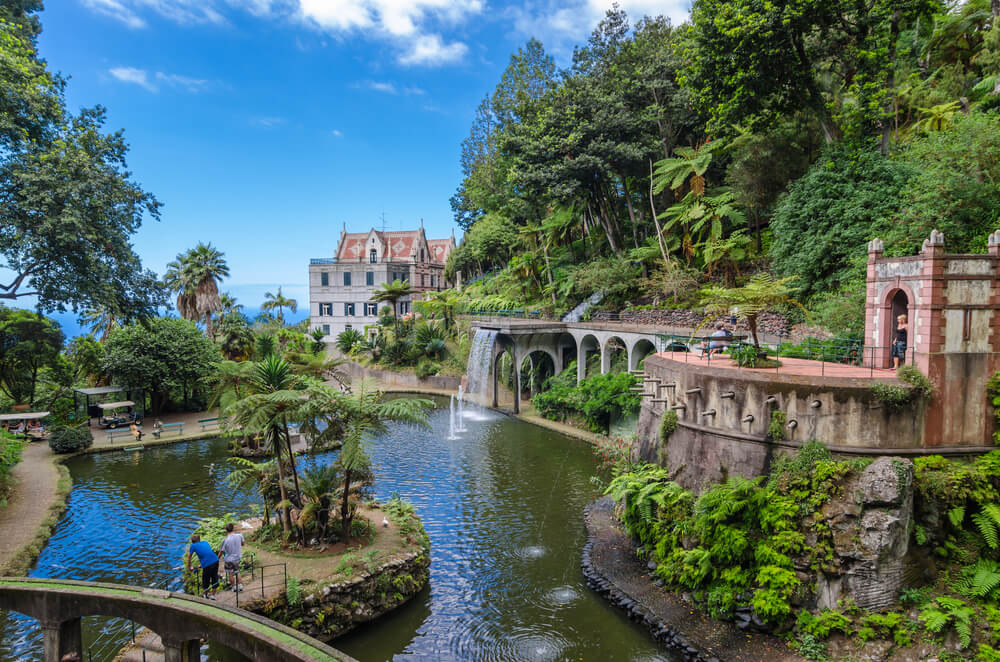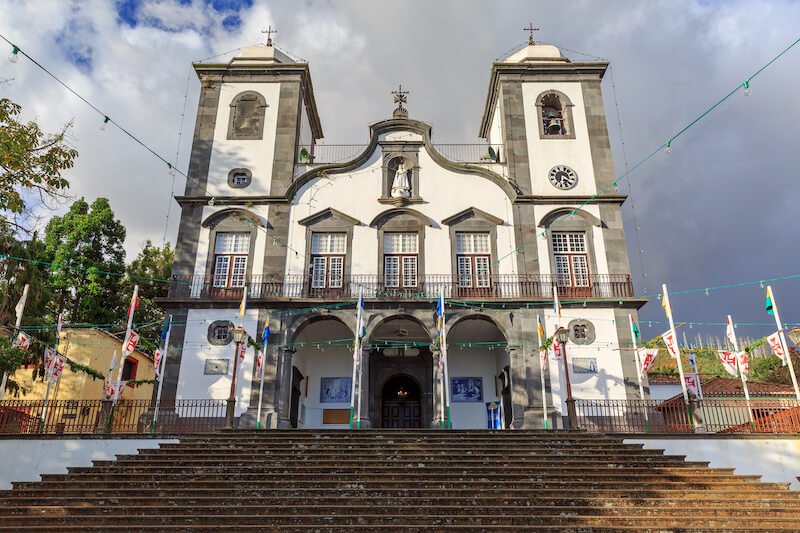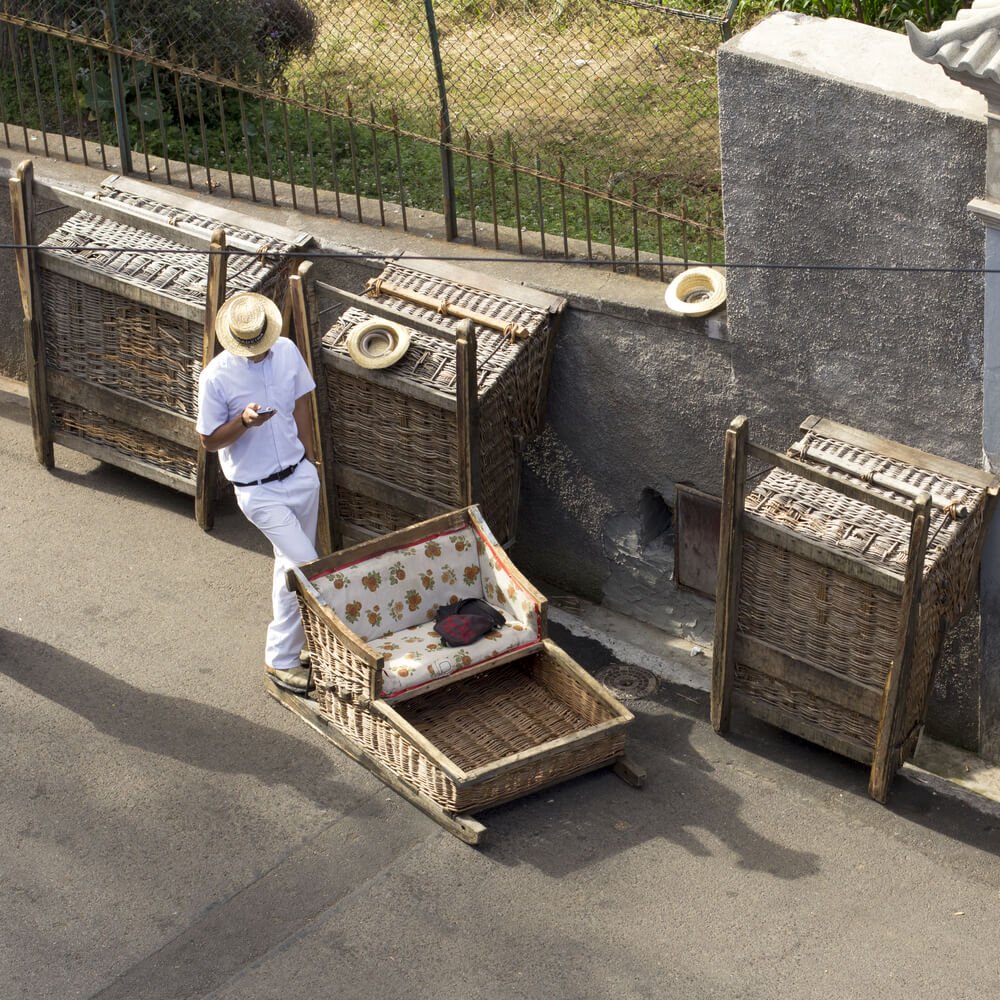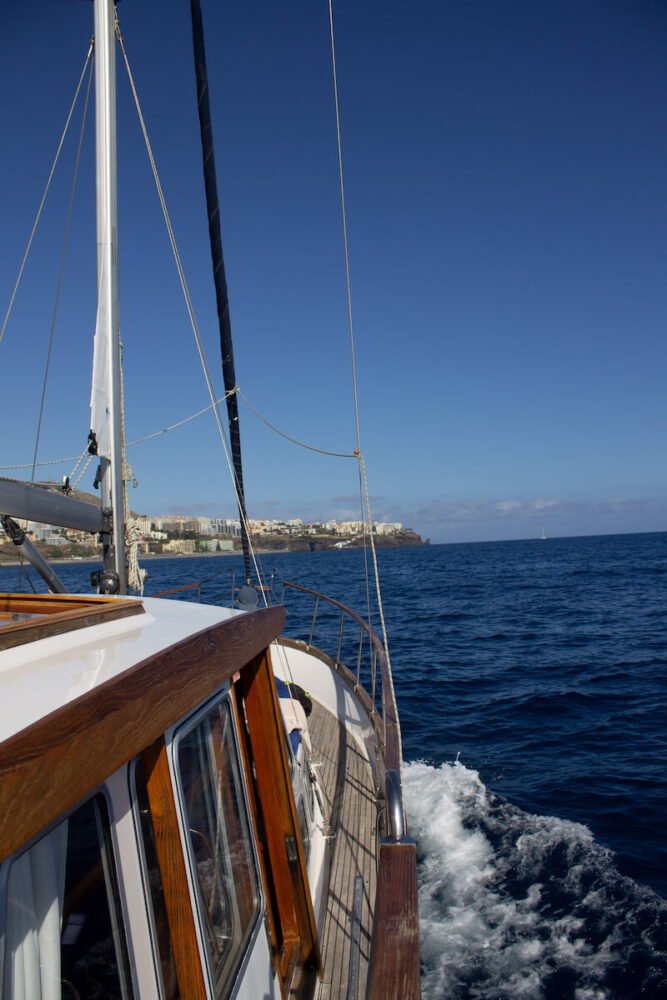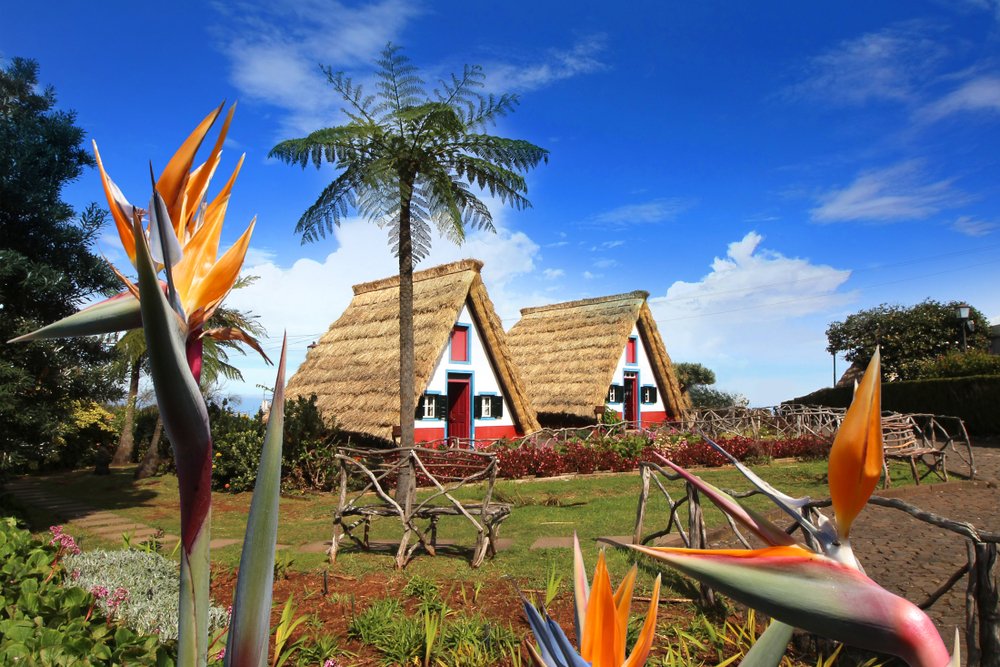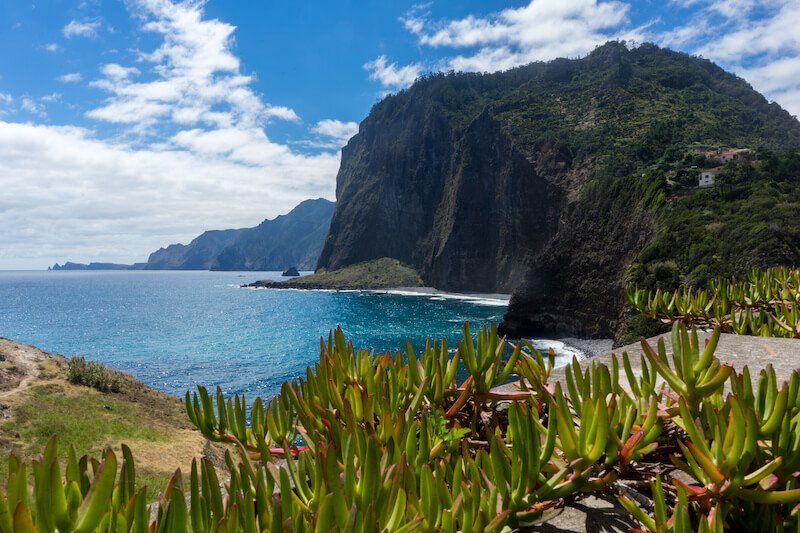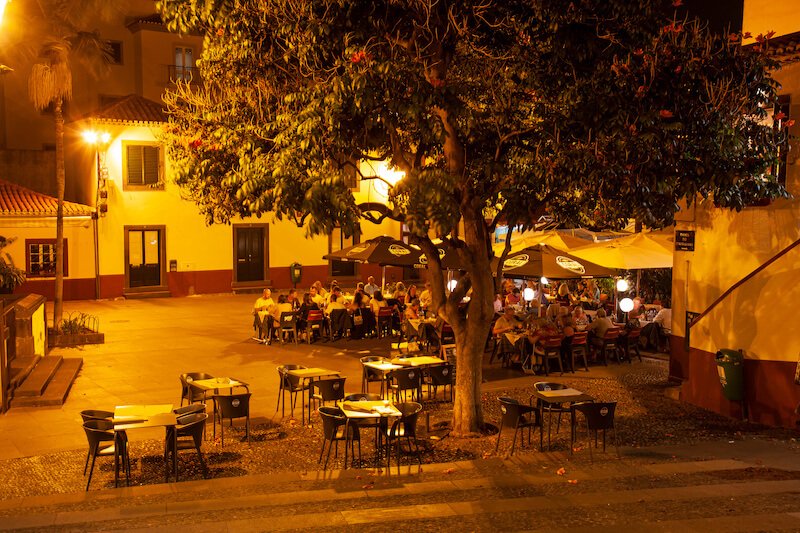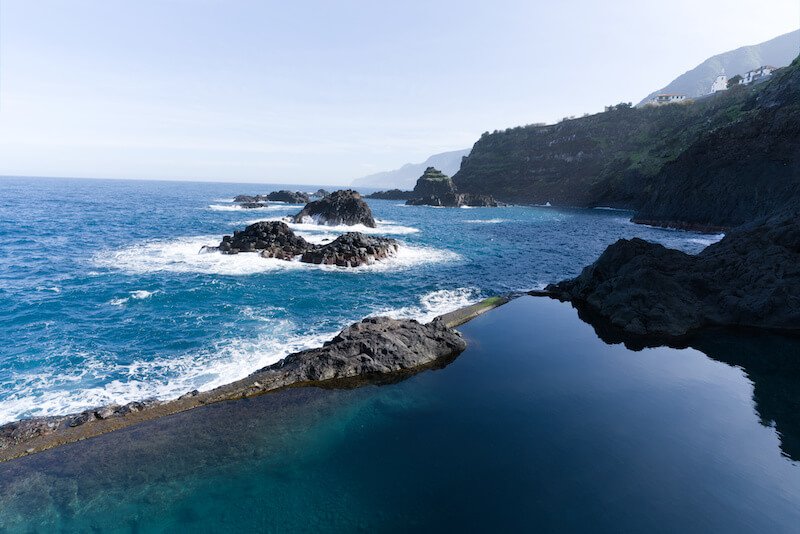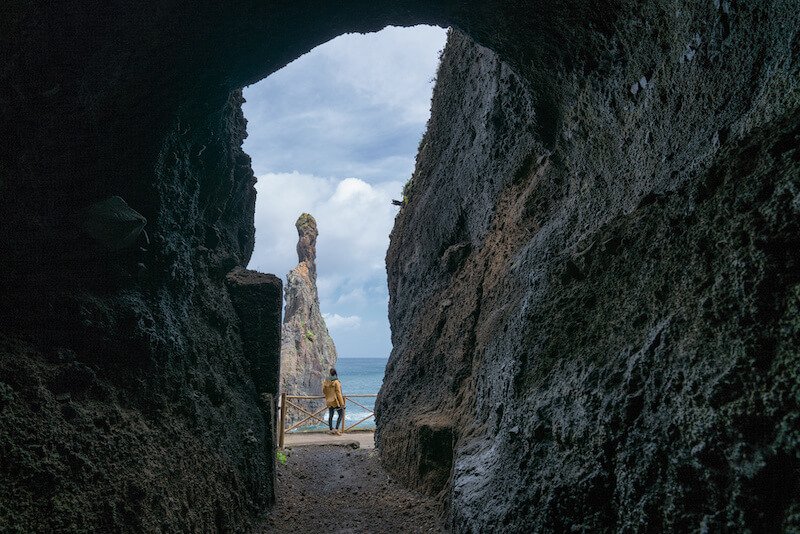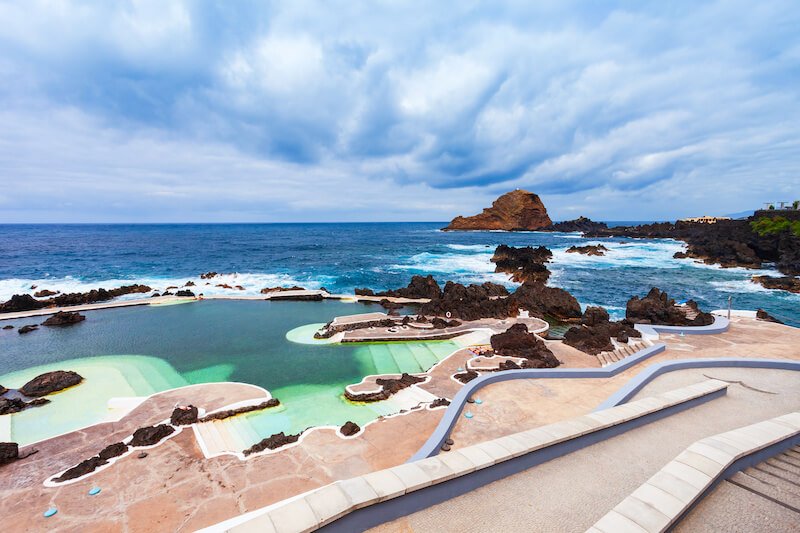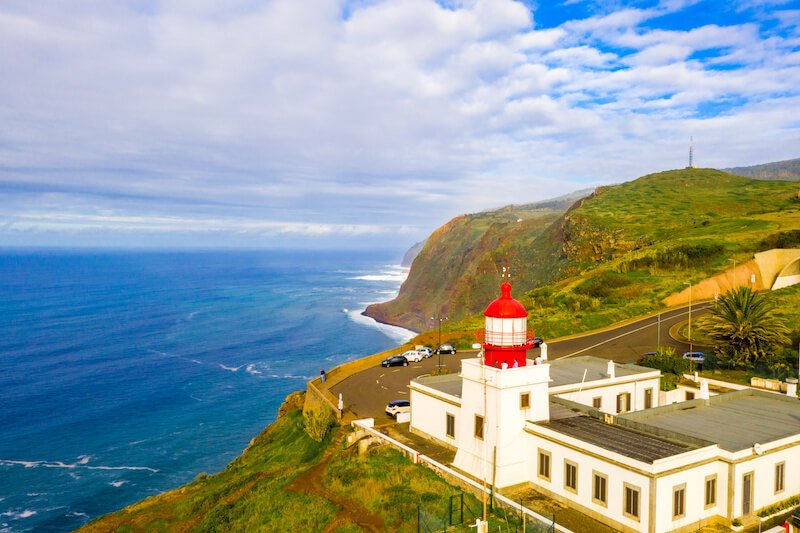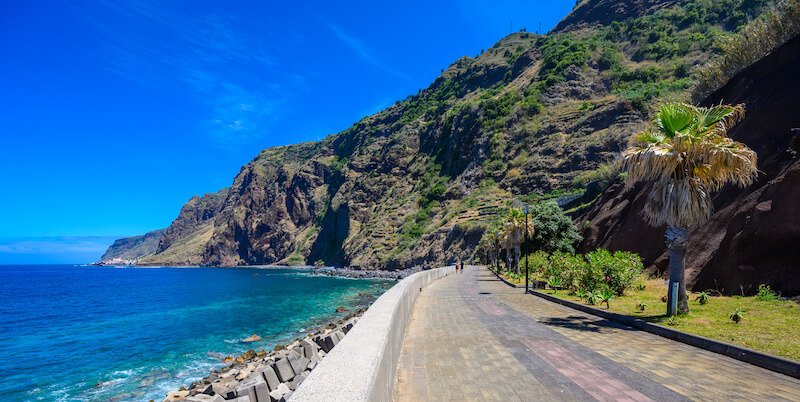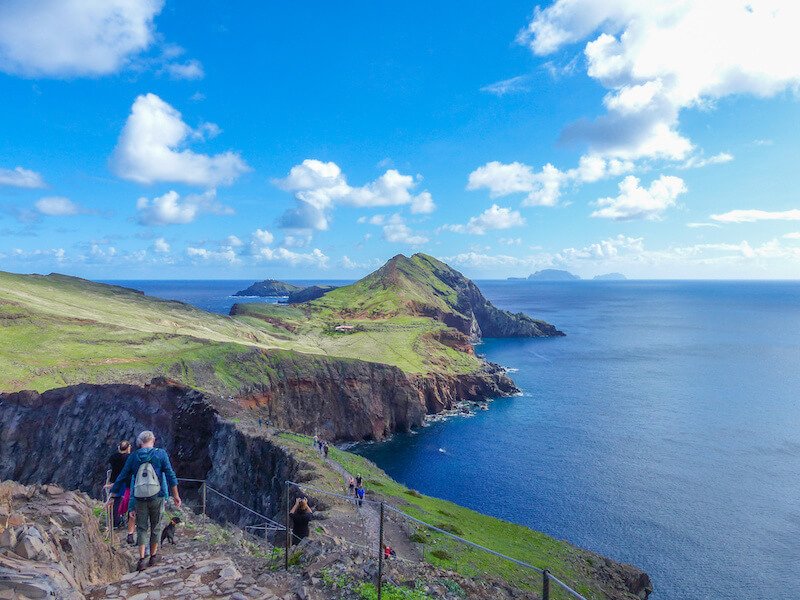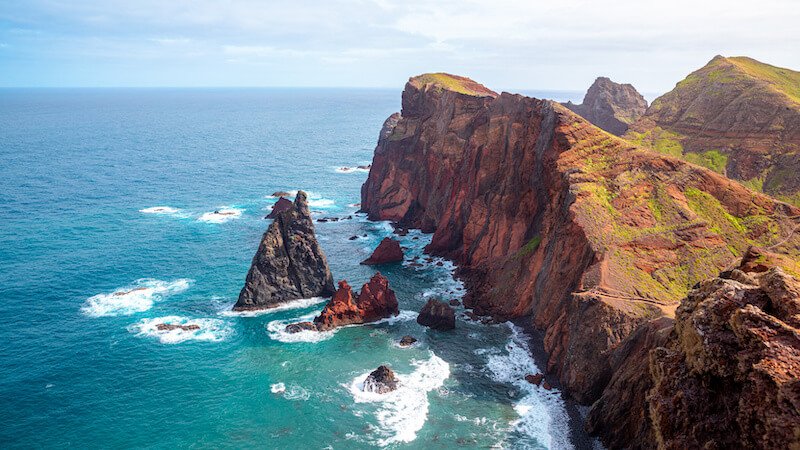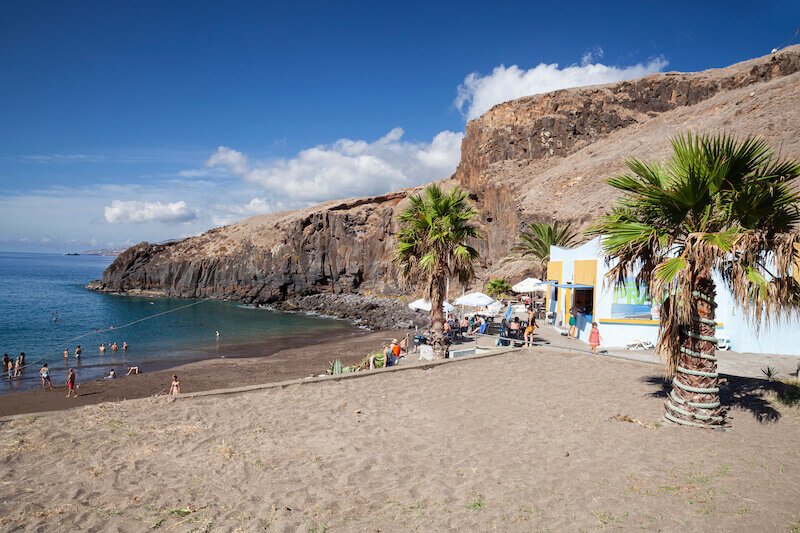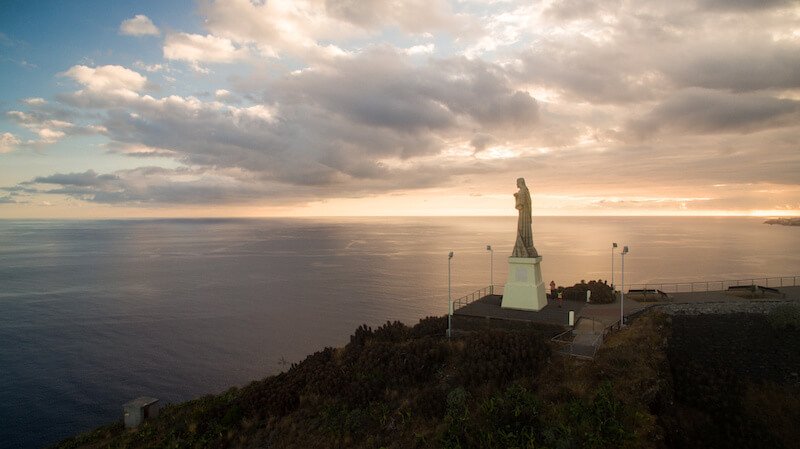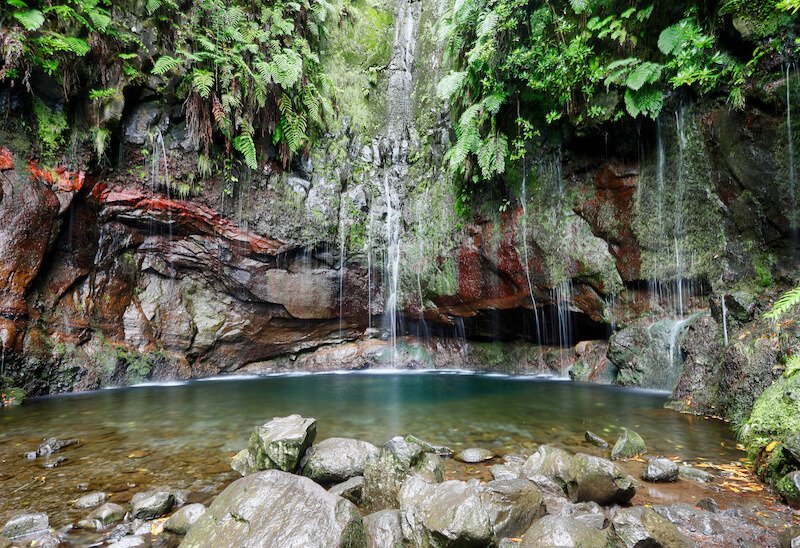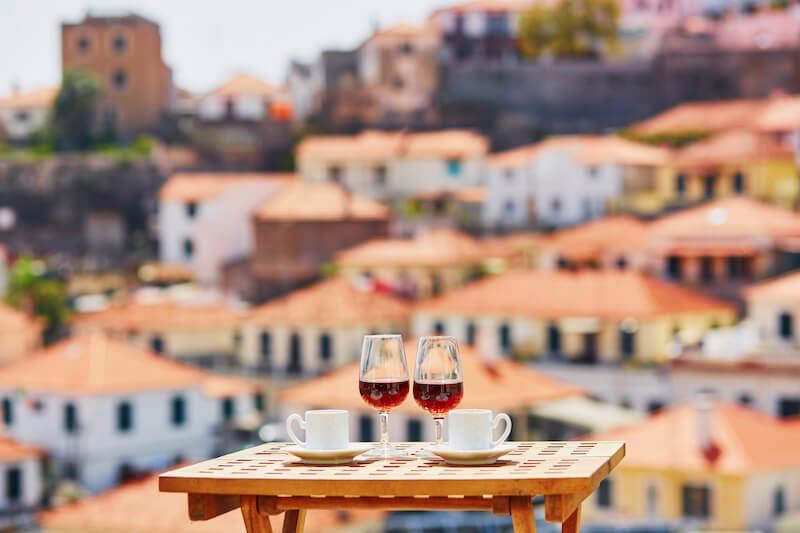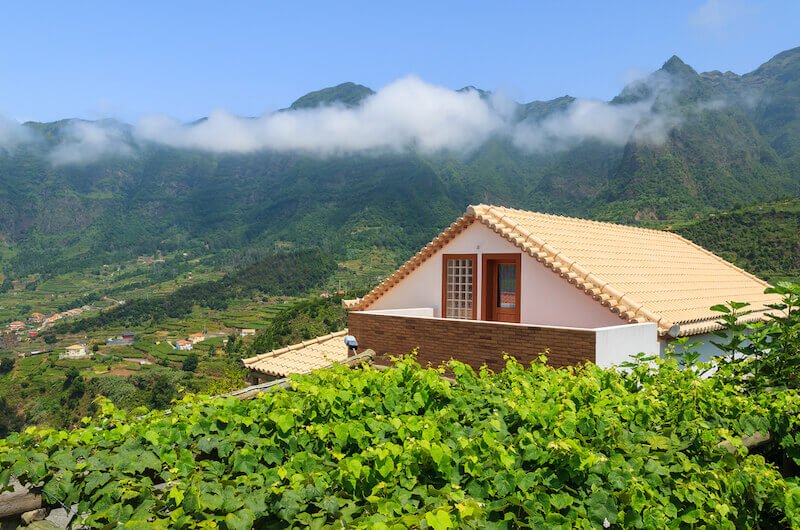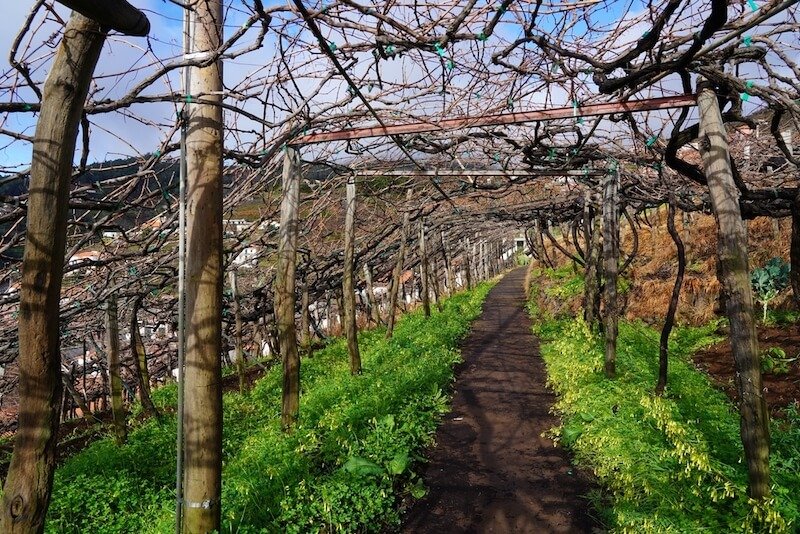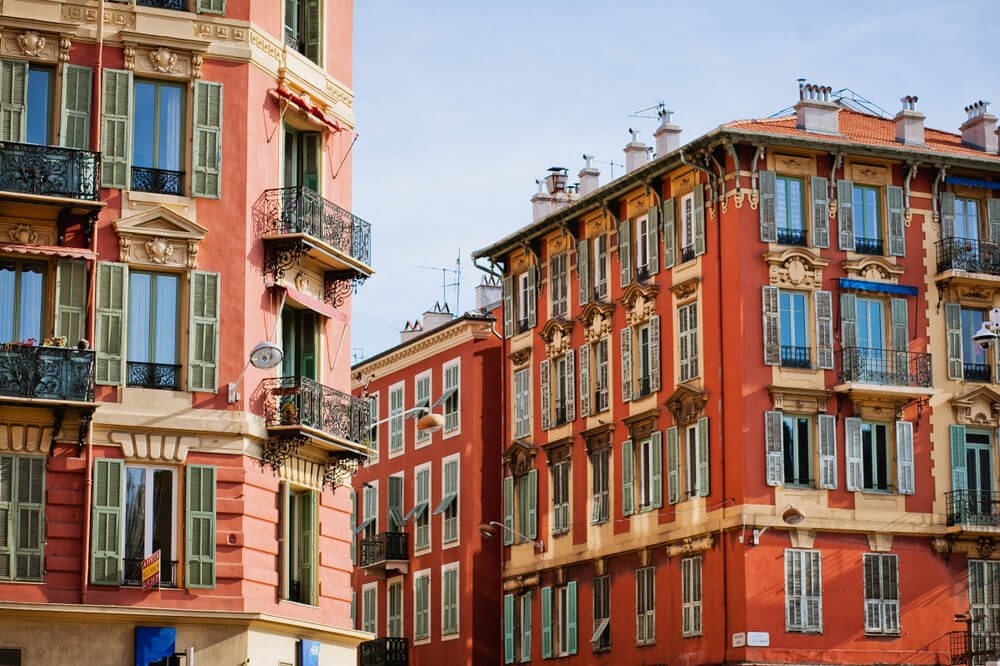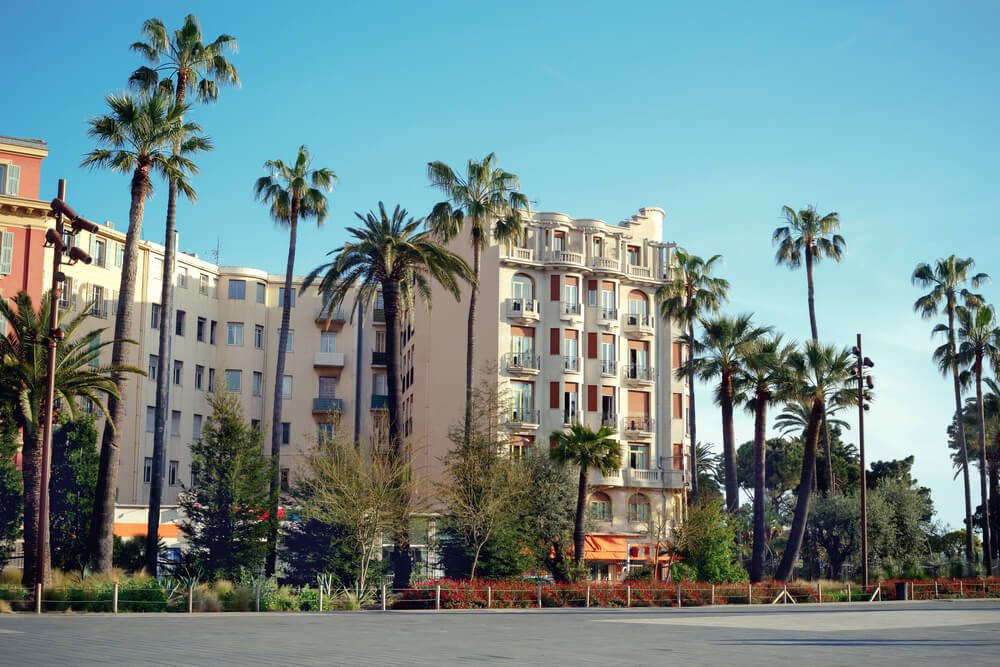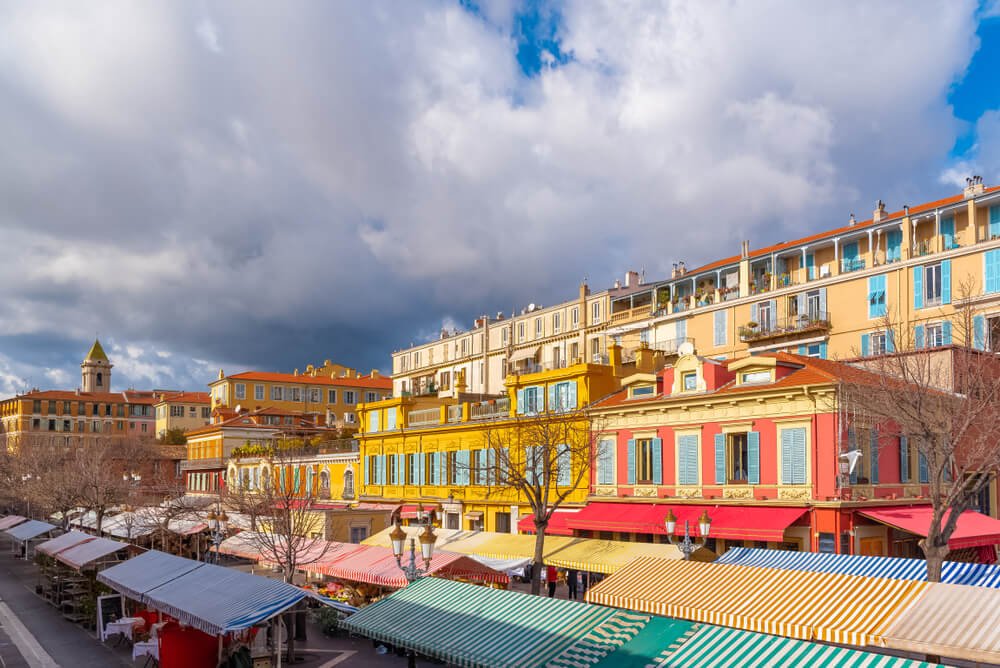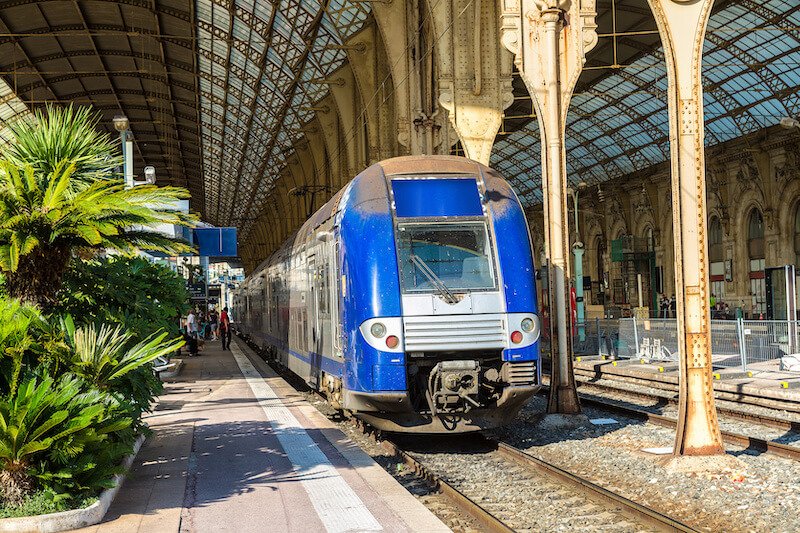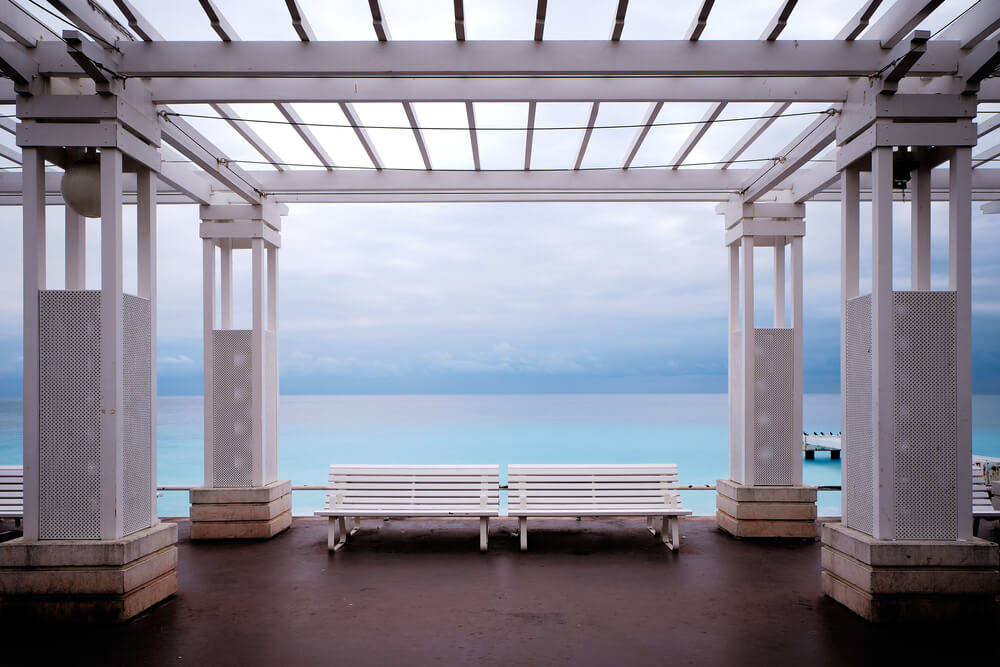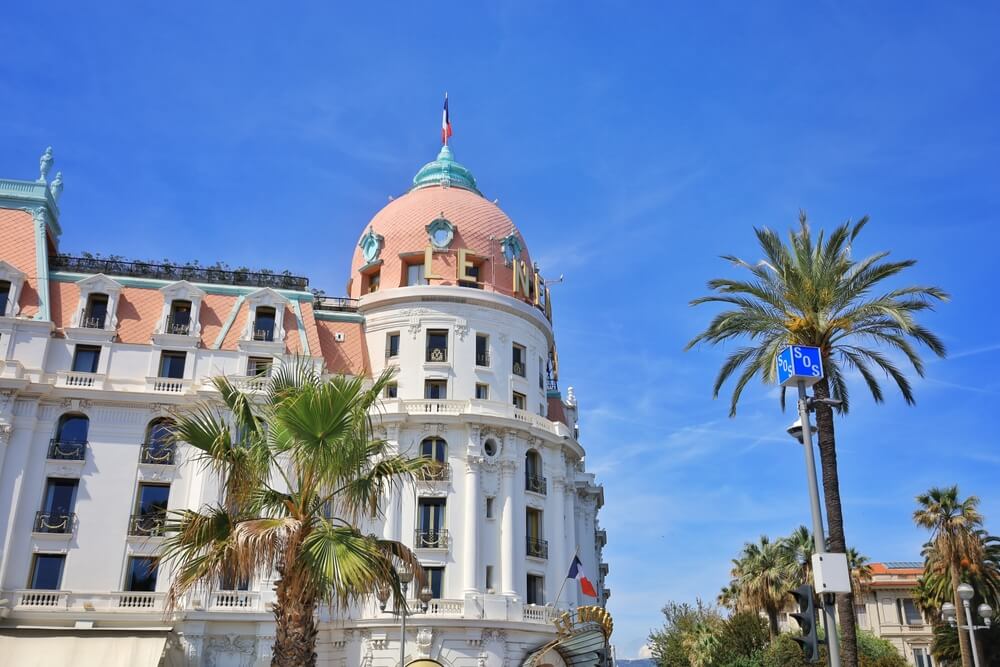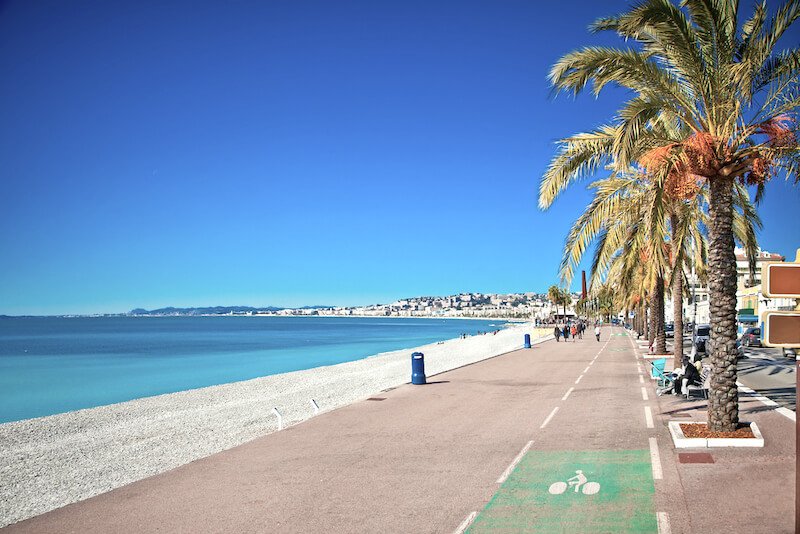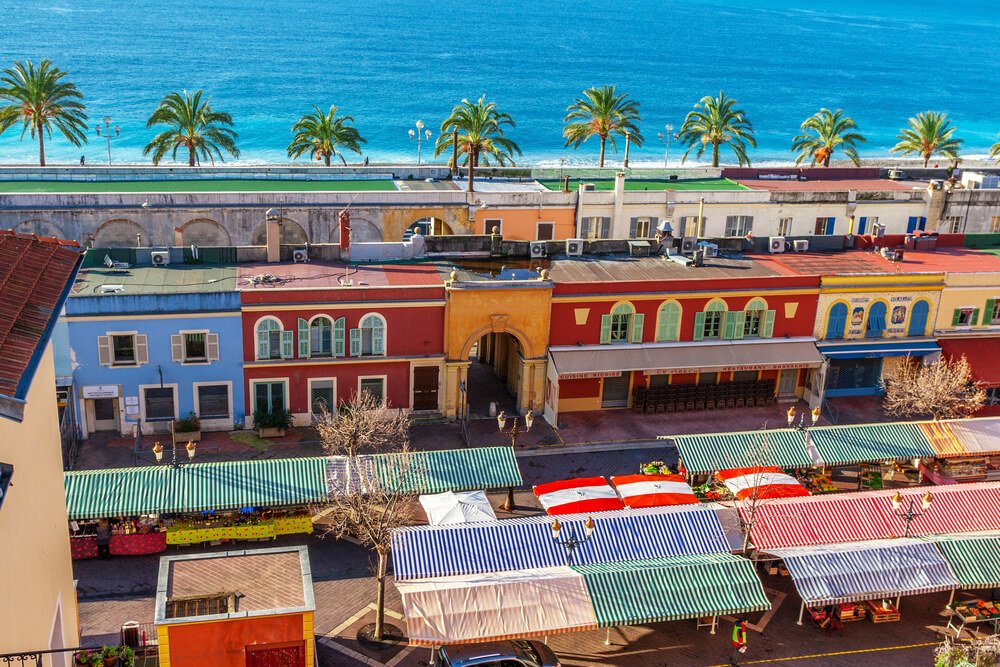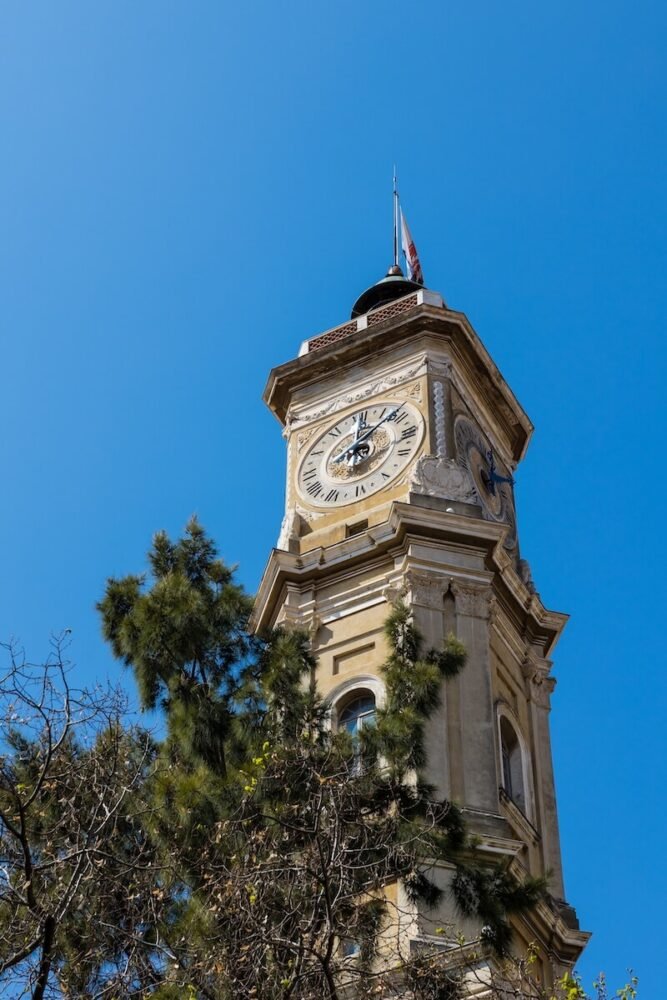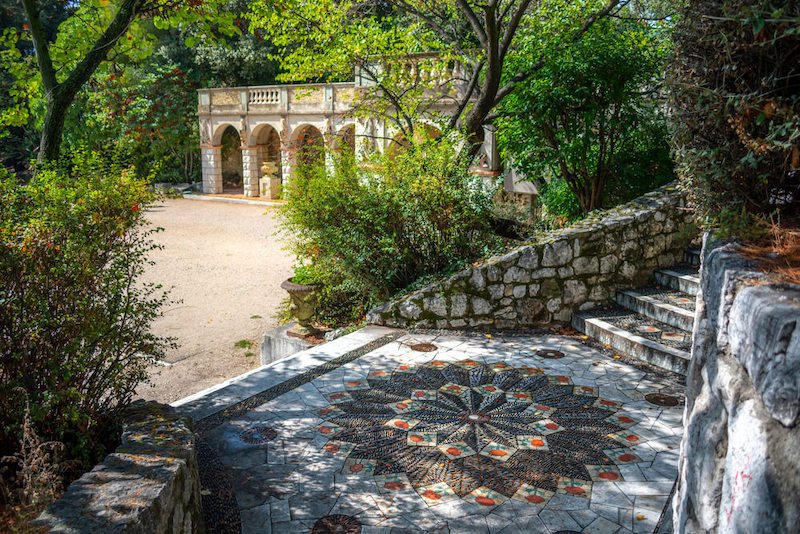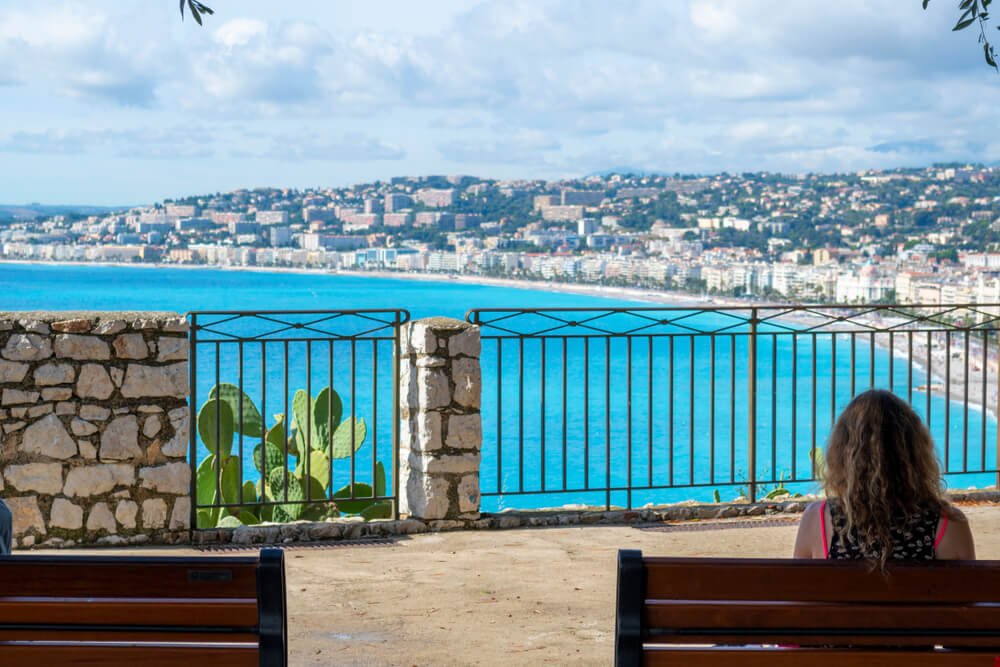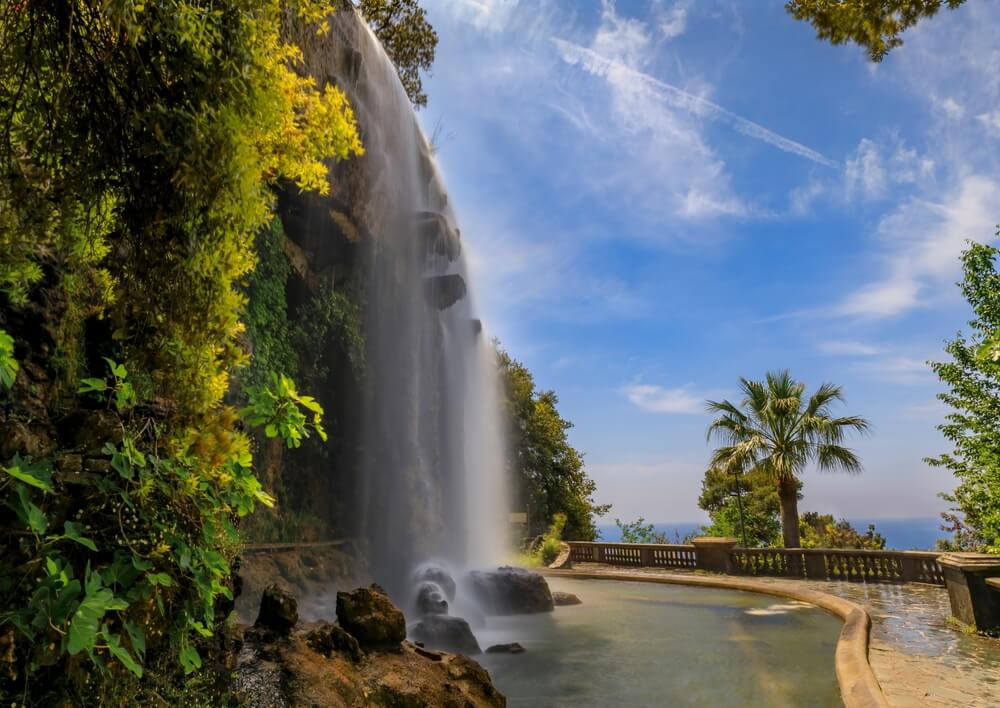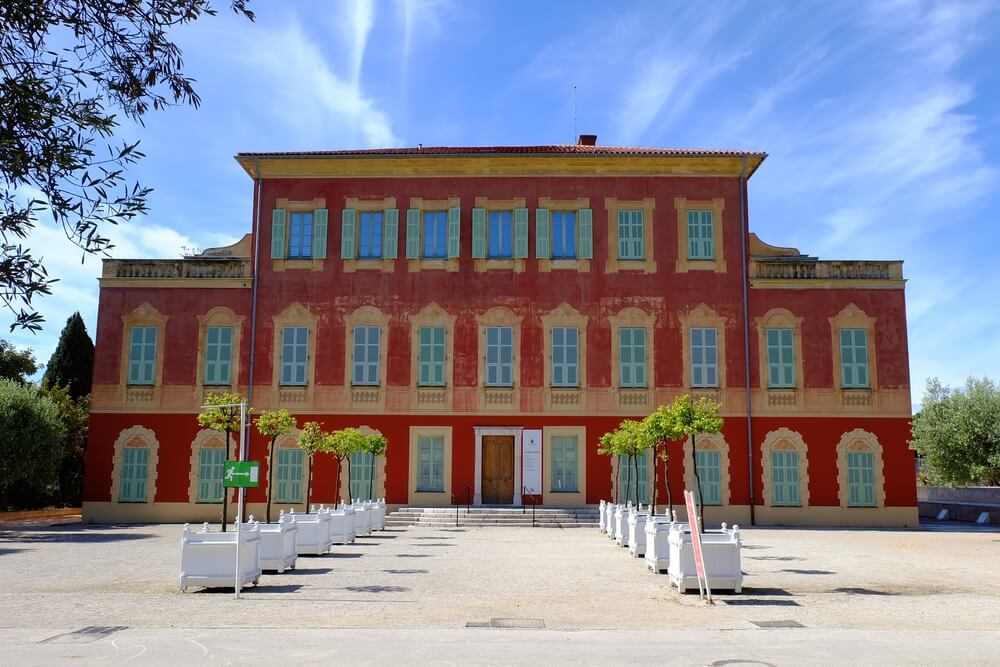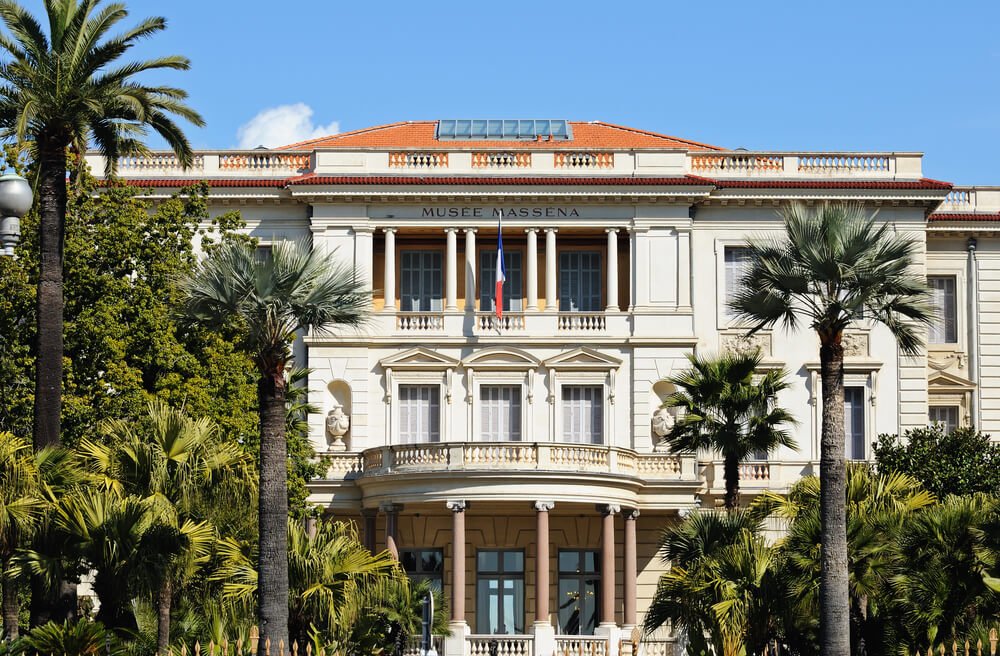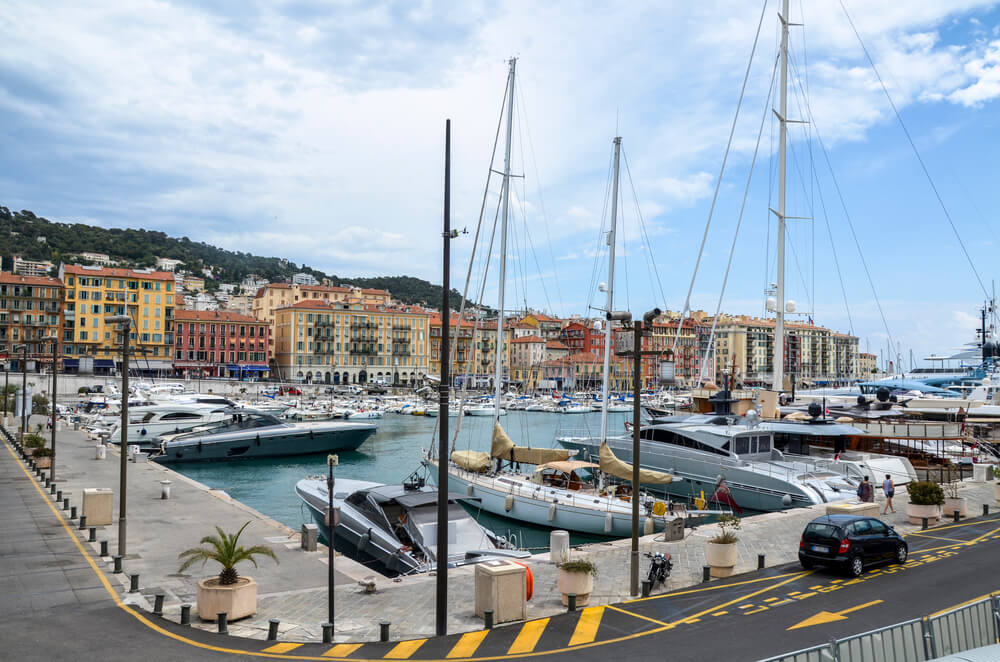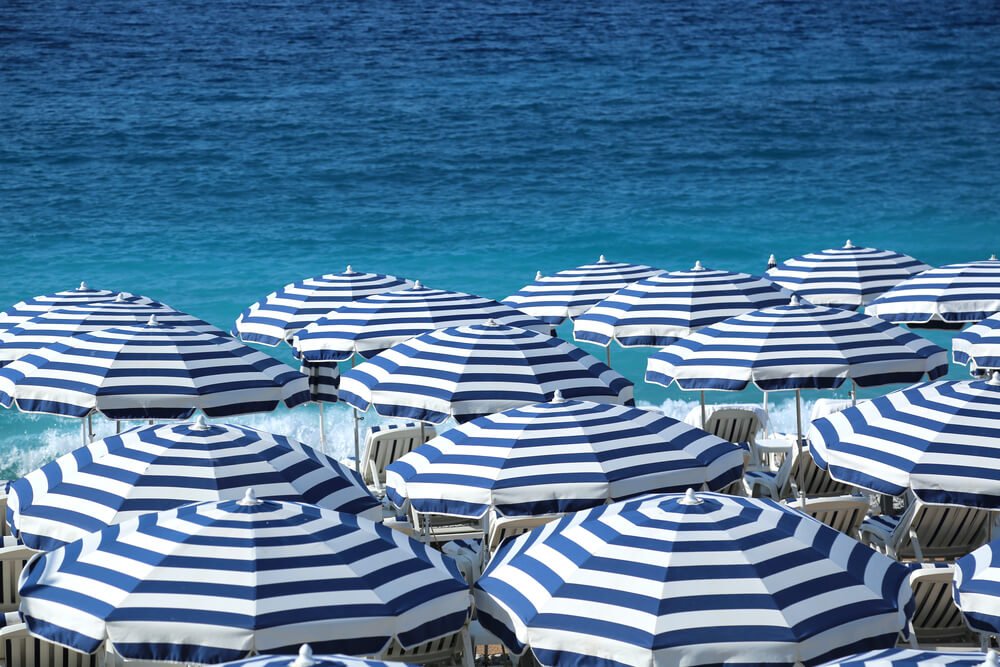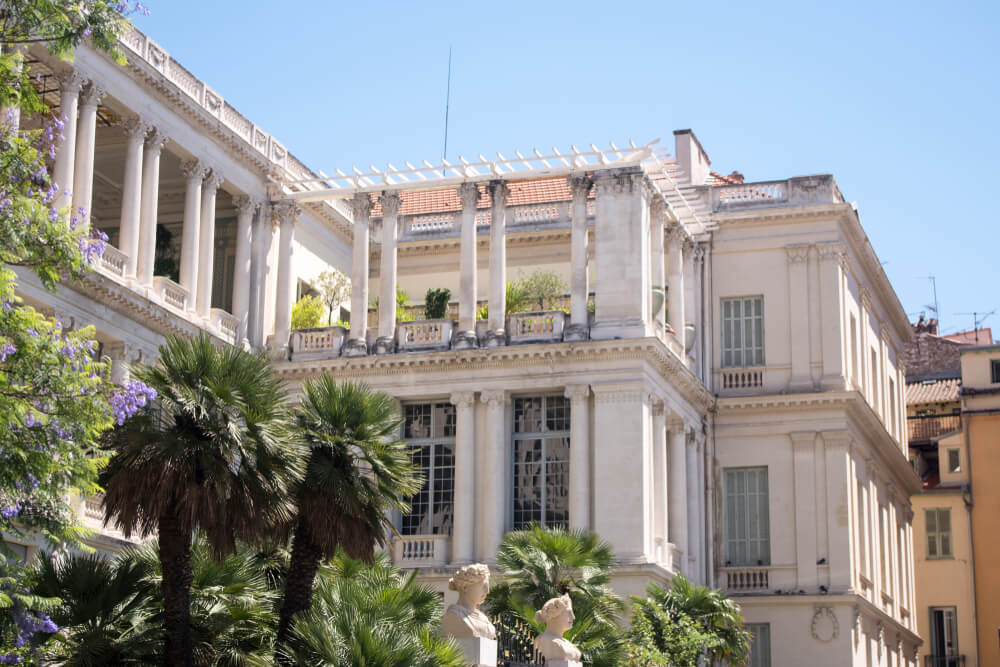Seemingly endless opportunities for adventure wait for you on this Yellowstone National Park itinerary.
With 3,500 square miles of wilderness terrain, over 10,000 hydrothermal features, more than 500 active geysers, and approximately 1,000 miles of exciting hiking trails, it’s hard to know where to start in this giant outdoor playground.
Yellowstone was America’s first national park, and with so much beauty spread out across such a large terrain, it can be overwhelming.
Where do I go first? What Yellowstone attractions do I absolutely need to see?
There’s no need to feel overwhelmed by the massive selection of recreation and site seeing options in America’s first national park because we have put together the ultimate 2 days in Yellowstone road trip itinerary.
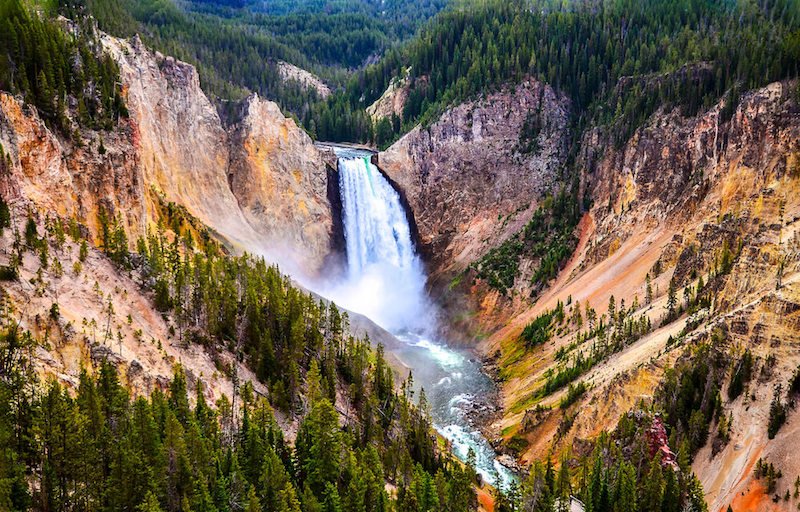
You’ll get to make the most of your visit with famous attractions, insider tips, hidden gems, and a thoughtfully designed driving route!
Have your camera, binoculars, and park map handy while tackling this Yellowstone itinerary!
We have a lot of exploring to do to tackle one of the USA’s most bucket list-worthy destinations in such a short amount of time.
Note: This post was originally written by Big Sky, Montana local Emily Lessard, who lives less than an hour from Yellowstone and visits frequently. The original post was written in 2020 and has been updated several times to reflect the editor's research trip to Yellowstone in June 2021. The post was most recently updated on August 7, 2023.
Quick Yellowstone Travel Guide
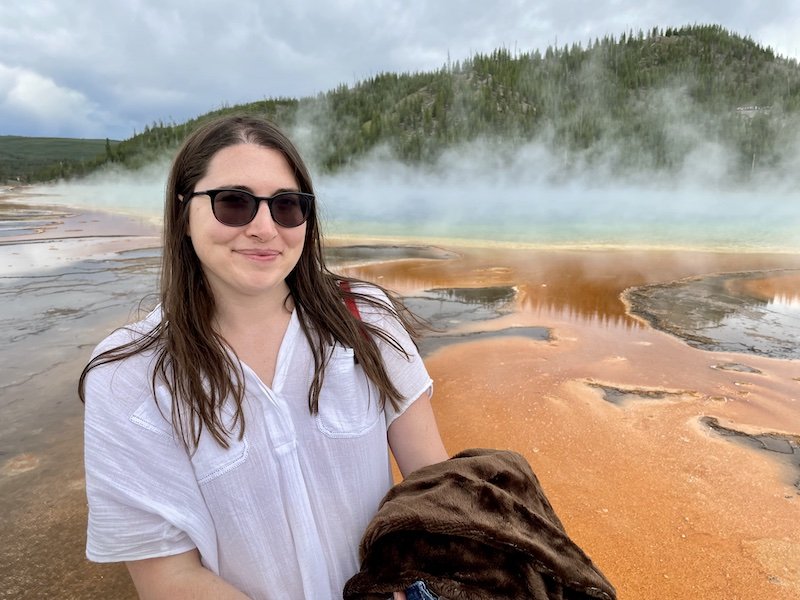
When to Go: While Yellowstone is beautiful in winter, all its main roads close off to passenger cars which means that you won’t be able to go on a self-drive. So the best time to visit Yellowstone National Park is in late spring, summer, and early fall.
Where to Stay: There are so many places to stay in Yellowstone both inside and outside the park but those inside can only be book directly at the Yellowstone National Park Lodges website!
However, if you don’t book early enough and find the accommodations inside the park full, you can stay at one of these cabins in West Yellowstone which is next to the park entrance, or The Adventure Inn if you want a luxurious stay and if you’re on a budget, Kelly Inn is the best option.
And if you’re unable to get accommodation in West Yellowstone, you can opt to stay in Jackson, WY especially if you plan to visit Grand Teton National Park as well. In that case, I recommend The Elk Country Inn for budget travelers, Wyoming Inn (mid-range boutique), and Teton Mountain Lodge and Spa for a luxury stay. And for a homey feel, I suggest staying at this cozy and luxurious cabin.
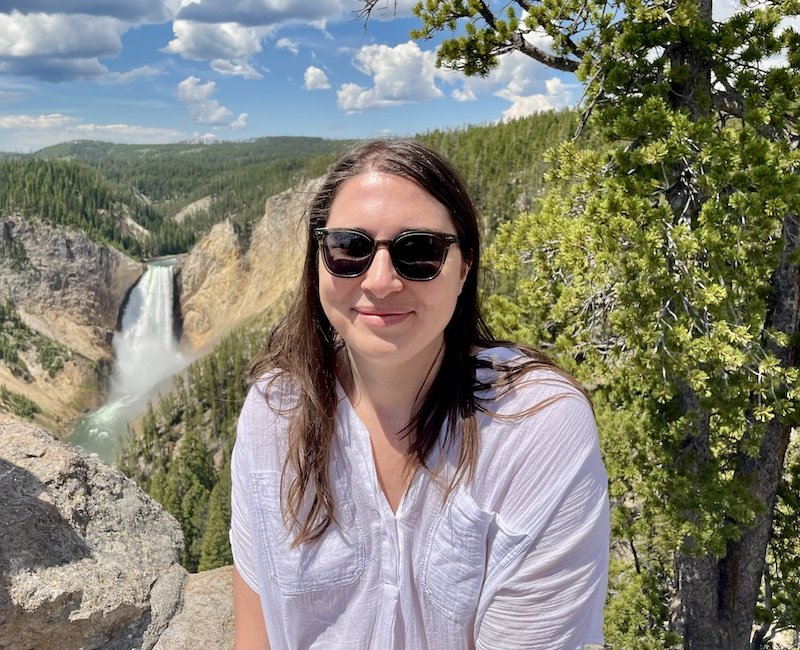
How to Get Around: A car is key for Yellowstone National Park; there is no shuttle, and without a car, you’d have to rely on tours. If you’re renting a car, compare car rentals and prices from here. Alternately, you can rent an RV or campervan via RVShare and save on accommodations.
Don’t want to drive or plan? You can book this two-day Yellowstone tour from Jackson, or this full-day Yellowstone tour from West Yellowstone. And if you plan to visit both Yellowstone and Grand Teton, then I recommend going for this two-day tour of both Grand Teton & Yellowstone.
3 Things Not to Forget to Pack: Binoculars are key for spotting wildlife like bears, elk, moose, and bison– I suggest these Nikon binoculars. For hikes, you’ll want a sturdy pair of hiking boots — I love my Ahnu boots — and some bear spray for safety reasons.
Know Before You Go: If you plan to visit multiple national parks in a year, the America the Beautiful Pass will save you a bundle! It costs $80 for an annual pass (for an entire vehicle traveling together) to all US national parks and federally managed sites.
How This 2 Day Yellowstone Itinerary Works

Yellowstone is one of the largest national parks in America, so of course, there is simply no way you can see all of Yellowstone National Park in 2 days.
Since time is limited, we’ve picked the most essential sights in Yellowstone. I mean, you can’t visit Yellowstone and NOT go to the Grand Prismatic Spring or Old Faithful, right?
But as magical as those spots can be, they can also be rather crowded. With 4 million annual visitors, most of those in the summer months, you’re definitely not alone!
So we’ve also filled in the gaps between those busy-but-beautiful spots with some (relatively) off-the-beaten-path suggestions.
These will allow you a chance to break away from the crowds a bit and experience the beauty of Yellowstone for yourself, away from masses of selfie sticks!
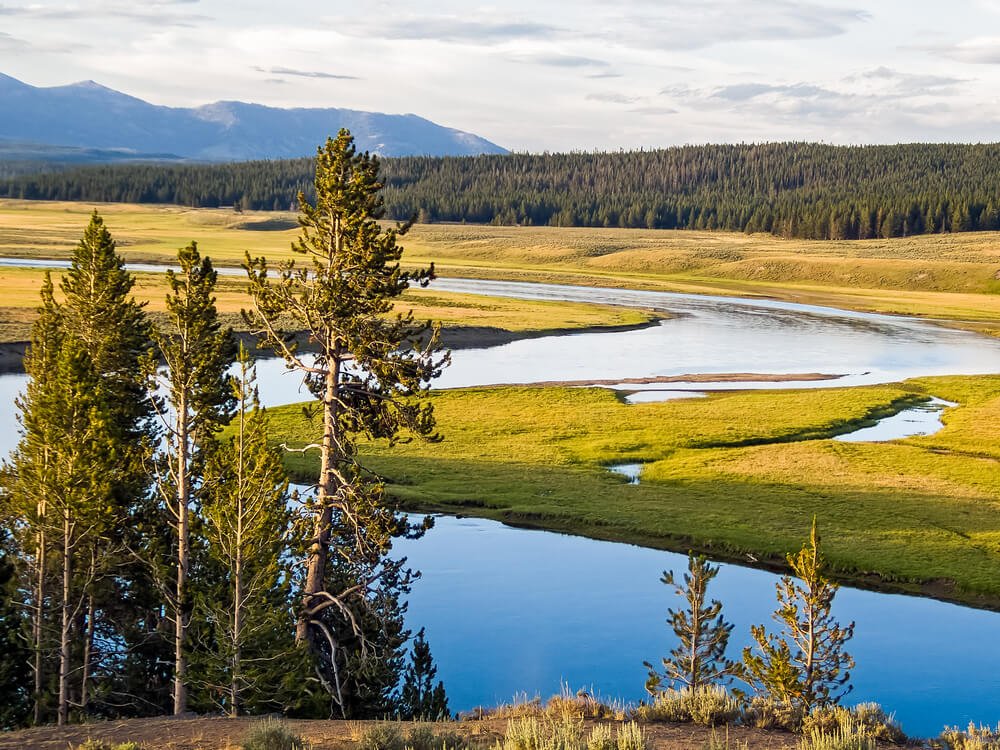
Of course, “off the beaten path” is relative to a place as well known as Yellowstone National Park!
But Yellowstone is a park where most people simply drive between overlooks and drive-in spots, so allocating time for some of these short Yellowstone hikes that I’ve outlined is the best way to get away from the crowds.
This is the best way to experience the beauty of the park as it was intended to be experienced, before a time of mass tourism.
This 2 day Yellowstone itinerary is intended to be done by self-drivers, those with their own car or a rental car.
You don’t need any sort of 4×4 or special bells and whistles on your car, though if you are visiting in the early spring or fall, you may need tire chains depending on road conditions (check with the Yellowstone website for up-to-date information).
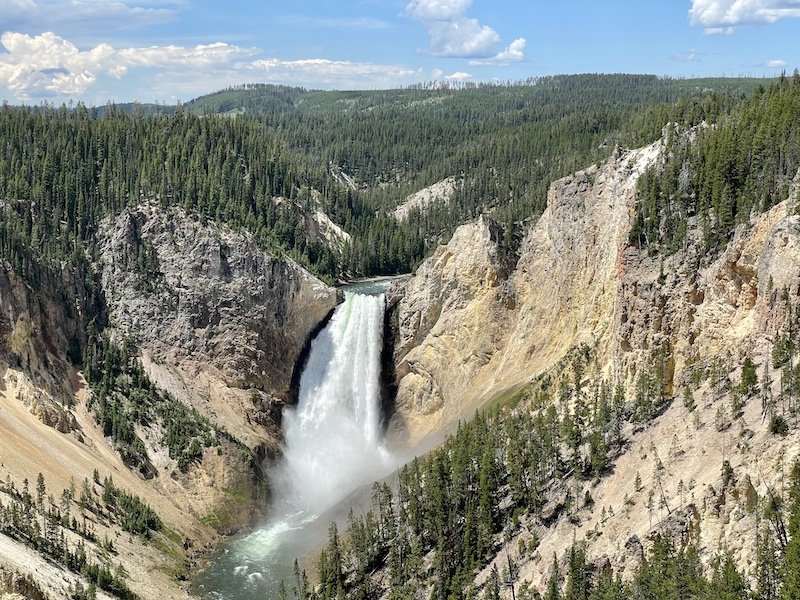
Be aware that Yellowstone is almost entirely closed to vehicle traffic in winter — more on this below.
Visiting Yellowstone in 2 days actually divides quite neatly due to the structure of the park’s main roads, which form a figure 8.
On the first day, we’ll tackle the lower loop, and on the second day, we’ll tackle the upper loop.
This way, you’ll see the main park highlights and some lesser-known spots without backtracking excessively and wasting precious time of your two days in Yellowstone!
Renting a Car for Yellowstone
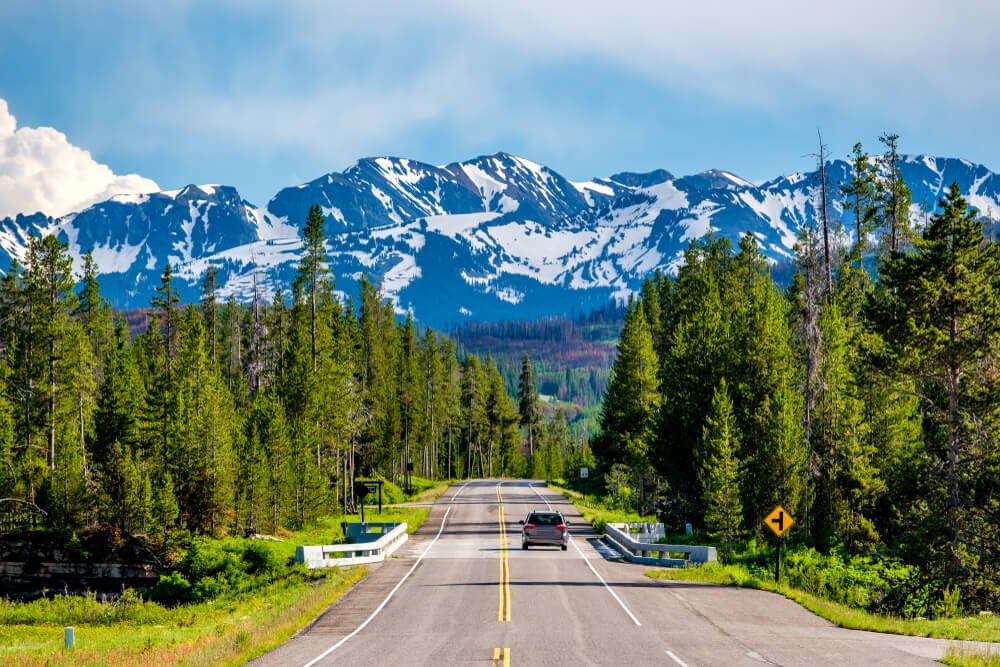
If you’re road tripping to Yellowstone from your home state, disregard this section.
If you need to fly in to get to Yellowstone, I suggest flying to Jackson Hole Airport (JAC).
In the peak summer season, 15 destinations fly directly to Jackson Hole, including NYC, Chicago, LA, Denver, Salt Lake City, Dallas, and others.
American Airlines, Delta Airlines, United Airlines fly to Jackson Hole year-round, and seasonally, Alaska and Frontier also service the airport.
At Jackson Hole Airport there are plenty of car rentals available.
Not sure where to get the best deal on your rental? I’ve rented cars dozens of times through various search engines and have settled on Discover Cars as the best car rental search aggregator – it sifts through dozens of trusted rental companies to find the cheapest price for your rental! Compare prices for your car rental here.
There is also the West Yellowstone Airport, but flying here is usually more expensive and car rentals are often pricier here. I don’t recommend this one if you are on a budget!
Another option is the Bozeman-Yellowstone airport in Montana, though this requires a 1.5-hour drive to the park. That said, you may be able to find cheaper car rentals via Bozeman.
How to Do 2 Days in Yellowstone Without a Car
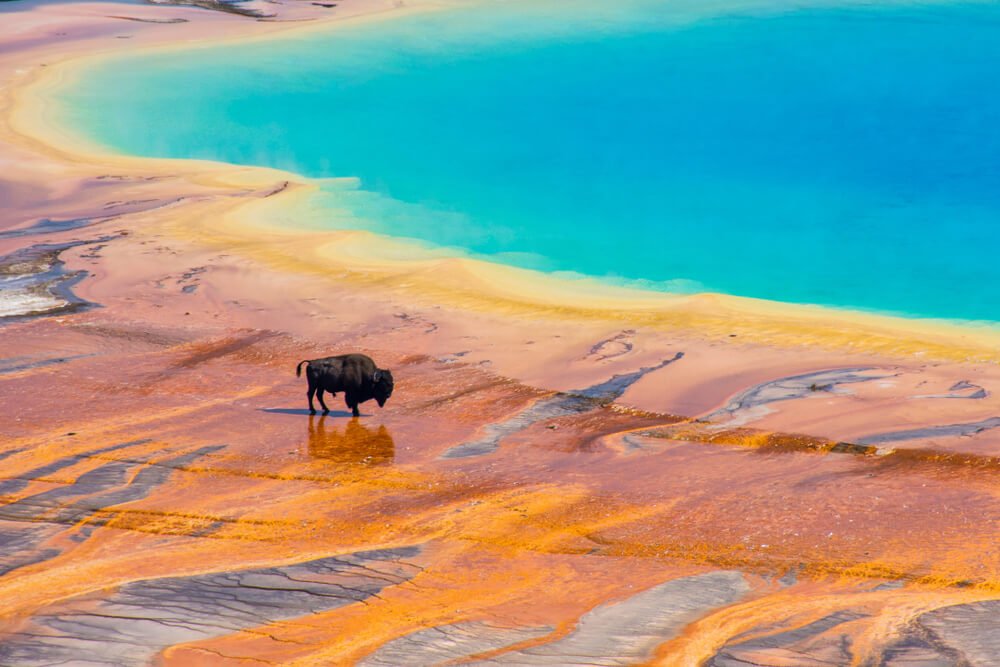
If you don’t have a car, you may be wondering how to tackle this 2 day Yellowstone itinerary. Honestly: it’d be basically impossible to do it without either A) your own car or B) a guided tour.
Unlike other national parks, Yellowstone does not have its own shuttle service, and there are no local buses that serve Yellowstone (just the area around Jackson Hole).
So, if you don’t have a car or don’t want to drive, you’ll definitely need to take a guided tour. I recommend staying in Jackson or West Yellowstone where most tours depart.
From Jackson: I recommend this two-day Yellowstone tour which covers both the Upper and Lower loops.
It’s a bit pricy but you will see all the best things to see in the park without missing out. Alternately, you could do this Lower Loop tour for Day 1, which pretty closely tracks this itinerary, and on Day 2, you could explore the lovely Jackson Hole area which has plenty to see!

Another option if you’re staying in Jackson is doubling up on National Parks and visiting two-in-one with this 2-day Grand Teton National Park and Yellowstone tour.
The parks are surprisingly close together and it’s quite easy to combine the two into a tour that’s been organized for this purpose. This tour is wildlife-focused so it’s perfect for people who are more interested in wildlife over landscapes.
From West Yellowstone: This full-day Yellowstone tour will cover most of the best things to see in the park in just one day, including most of the Lower Loop such as Old Faithful, Fountain Paint Pots, and Grand Prismatic Spring.
For your second day, you can go on a zipline adventure or rafting trip departing from West Yellowstone.
Best Time of Year to Visit Yellowstone
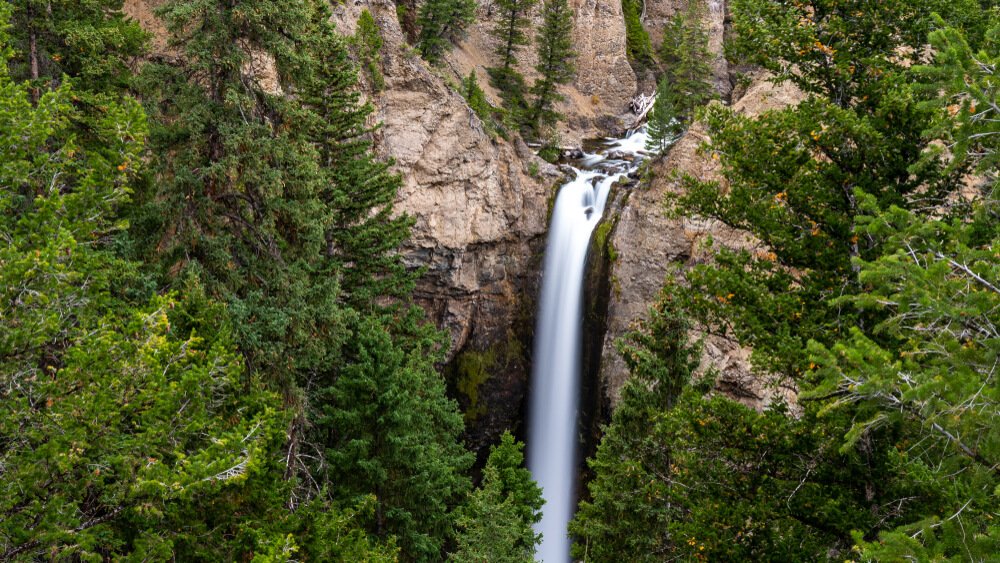
This Yellowstone itinerary is really only suitable for late spring, summer, and early fall, when you are able to drive yourself into the park and self-guide.
This is because once there is significant snowfall, the main park roads in Yellowstone all close to passenger vehicles.
The only way to access the park becomes by snowcoach tour (which can get pricy!) or by snowmobile (even pricier, unless you happen to already own your own!).
While Yellowstone in winter is an absolutely incredible experience, and one that I have no qualms recommending, this itinerary for Yellowstone simply will not work in winter.

That’s simply because you won’t be able to access the roads needed in order to see the sights in the order suggested.
If you’re planning a winter Yellowstone trip, I suggest you read this post on 30 things to know before visiting Yellowstone in winter, written by the same Montana local who wrote this post!
I would suggest that the best time to visit the park would be in the shoulder season just before or just after summer.
May and September are brilliant months to visit Yellowstone, especially if you don’t have kids (or if you’re homeschooling), since the park definitely fills up with families during the summer vacation months. You’ll find better prices on accommodations as well outside of the peak season.
A nice thing to know about visiting Yellowstone in the summer is that temperatures are never that hot!
Even in July, the hottest month in the park, the average high temperature is 72 degrees F.
It can get quite cold in the evening due to the high elevation (8,000 feet!) though, so you’ll want to come prepared with layers for the morning and evening chill!
Where to Stay in Yellowstone
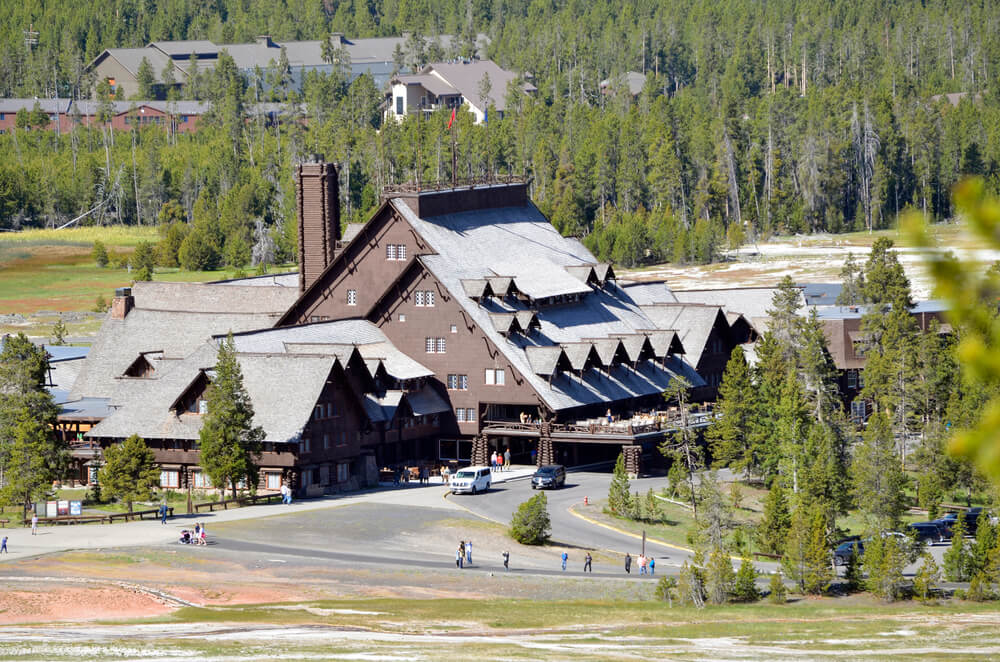
The Old Faithful Lodge in Yellowstone books up months and months in advance!
There are so many options for where to stay in Yellowstone! I’ll make a few suggestions both inside and outside of the park.
Between May and October, some lodges are open in Yellowstone Park. You can find the full list here, which is also where you can book the accommodations.
You cannot book these accommodations on other booking portals, only directly. You must book several months in advance… like, we’re talking 6+ months for places like the Old Faithful Inn and the Canyon Lodge!

If you didn’t book your lodge inside Yellowstone on time, or if you’d prefer to stay outside the park, I’d suggest either West Yellowstone, Idaho or Jackson, Wyoming as your base.
West Yellowstone is closer to the park entrance and is better for following this itinerary. It’s where I strongly recommend you stay!
However, Jackson is doable if you are also planning to visit Grand Teton National Park during your stay, and it can be done as long as you get an early start each day of this itinerary.
There are options that are further afield, like Gardiner, Montana, and Cody, Wyoming. However, these will definitely add extra travel time to your trip and may not be worth it for a short 2 days in Yellowstone itinerary.
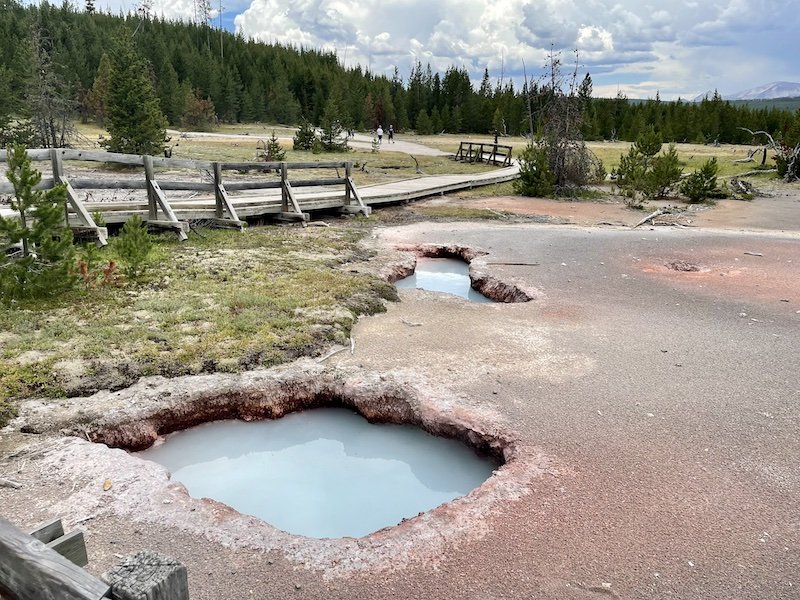
West Yellowstone, ID Accommodations
CABINS | If you want to stay in a self-contained cabin (great for social distance!), Explorer Cabins at Yellowstone is ideal.
The grounds are made up of 50 cabins which have plenty of space between them, and each unit is self-contained so there are no communal areas except for the fire pit (where you can toast your welcome s’mores!).
Plus, they’re dog-friendly, and just a few minutes from the West entrance to the park!
>> Check photos and reviews on Booking.com | Book on Hotels.com
VRBO | For a homey feel, I suggest this stylish and luxurious loft.
The cabin is perfectly located near Henry’s Lake and stylishly designed for your comfort. It is fully equipped with all the appliances you might need. It might be a little pricy but the comfort and serenity it provides will make up for that.
>> Check photos and reviews on Vrbo
BOUTIQUE | For design lovers who want a hint of luxury, I suggest the hip The Adventure Inn.
This stylish spot has a minimalist style, with a Scandinavian sensibility mashed up against a woodsy edge. It’s like a Brooklyn loft and a mountain cabin had a baby: it’s beautiful.
>> Check photos and reviews on Booking.com | Book it on Hotels.com
BUDGET | If money is a concern but you want a place that’s comfortable, clean, and convenient, it doesn’t get much better than Kelly Inn.
This cozy, rustic hotel has perks like an indoor pool, sauna, and hot tub while not breaking the bank. However, the rooms are a little dated, but for the price, it’s perfect.
>> Check photos and reviews on Booking.com | Book it on Hotels.com

Jackson, WY Accommodations
BOUTIQUE | If the design and the personality of a hotel is important to you, I suggest Wyoming Inn.
This cozy inn features Western-style decor complete with a roaring fireplace, warm woodsy colors, rustic design touches, and large, modern rooms.
>> Check photos and reviews on Booking.com | Book it on Hotels.com
BUDGET | If you’re traveling Yellowstone on a budget and want to stay in Jackson, I’d pick The Elk Country Inn.
It’s highly rated by fellow travelers and affordable (well, by Jackson standards). It’s located just 4 blocks from Town Square in central Jackson, and the rooms are modern, spacious, and clean.
>> Check photos and reviews on Booking.com | Book it on Hotels.com
LUXURY | If cost is not a factor, the stunning Teton Mountain Lodge and Spa (a Noble House Resort) is a no-brainer.
Located in Teton Village, the rooms all have their own fireplace and cooking area, and there are rooms ranging from queen studios to two-level, two-bedroom suites.
There are indoor and outdoor pools and hot tubs (all heated year-round) and a massage and spa center for those who want a little luxury on their Yellowstone trip.
>> Check photos and reviews on Booking.com | Book it on Hotels.com
Your Perfect 2 Day Yellowstone National Park Itinerary
Day 1 of Your Yellowstone Itinerary

Rise and shine for an early morning! After spending a restful night in the gateway town of West Yellowstone, you’re conveniently located right near Yellowstone National Park’s West Entrance.
The earlier you start, the better — traffic jams are common at the more popular entrances (West and South).
If you stay in Jackson Hole instead, you’ll want to get an even earlier start and plan a little extra time to get to Yellowstone.
You’ll likely want to start through the South Entrance on a scenic drive that includes some of Grand Teton National Park. You need to allow about 1.5 hours of driving time if you are starting in Jackson.
There’s no time to waste because your first day is going to take you on an exciting tour of the Yellowstone Lower Loop.
What’s the Lower Loop? Take a quick look at your map. Notice how Yellowstone National Park’s road system is shaped like a figure 8, which is broken into three loops, as follows:
Upper Loop: the northern circle of the figure 8
Lower Loop: the southern circle of the figure 8
Grand Loop: the outside perimeter of the figure 8
Most of the time, you’ll be traveling along Grand Loop Road on the outer perimeter, but we’ll break this Yellowstone itinerary into both the Lower (first day) and Upper (second day) loops, since you don’t have a lot of time!
Now that you have a better idea of where Day 1 is taking you, we’re ready to get into the fun stuff — the heart of this Yellowstone itinerary!
Start at the West Entrance.
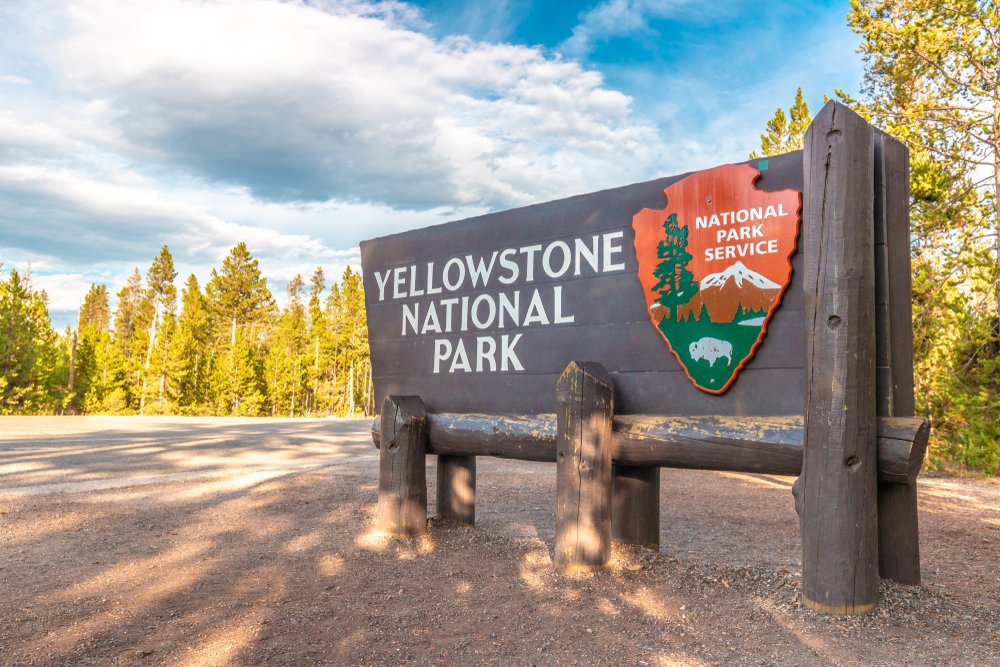
Welcome to Yellowstone! Excited for your last day of this quick-blitz Yellowstone itinerary?
This first section from the West Entrance to the Madison Junction is famous for phenomenal fly fishing.
The Madison River hugs the road providing the perfect view to spot anglers and the occasional moose wading the waters.
As you approach the Madison Junction, look to your right for a view of National Park Mountain standing 7,500 feet tall with the junction of the Firehole River and Gibbon River in the foreground.
We’re headed south at the junction to work the Lower Loop counterclockwise.
Firehole Canyon Drive
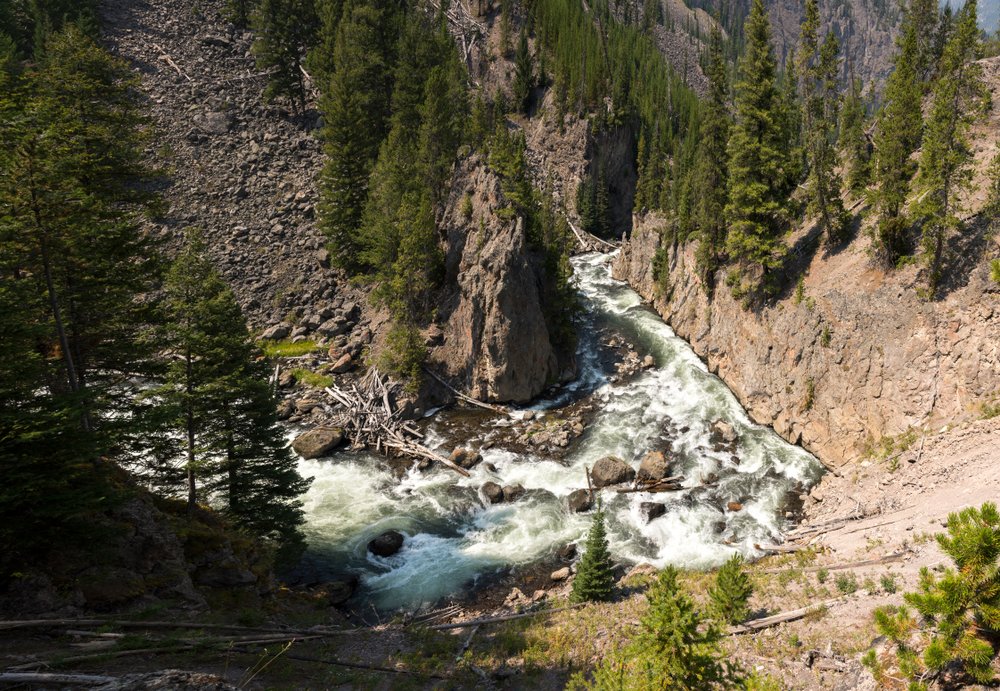
Trust us… You do not want to miss the scenic Firehole Canyon Drive. The turn comes up pretty fast on the right, so be ready!
On this 2-mile detour, you’ll get an up-close look at the 40 ft tall Firehole Falls. We have a little bit more driving to do before the first hike of this Yellowstone road trip, but it’s coming!
For now, take a pullout and scope the hillsides with your binoculars. You’re bound to spot some wildlife in the Firehole River Valley.
Fountain Paint Pots

Yellowstone National Park is famous for its colorful hydrothermal pools and you’re going to witness them first hand.
This is part of the Lower Geyser Basin area, where you’ll find all sorts of colorful hot springs, mud pots, and stunning geothermal features.
The 0.6-mile loop at the Fountain Paint Pots will bring you past a variety of colorful pools. Don’t forget your camera!
Grand Prismatic Spring
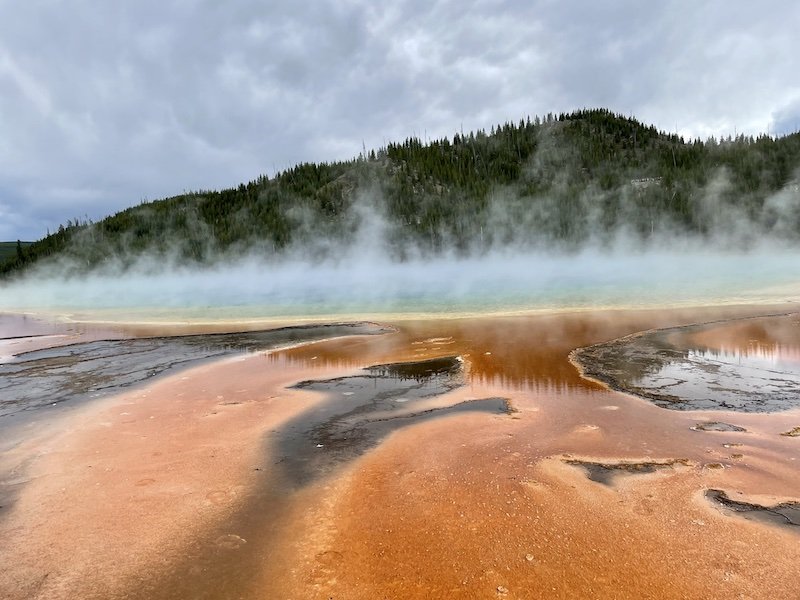
The next hot spring is surely one you have seen before in photographs, but there’s nothing quite like standing in front of the real thing with its beautiful rainbow of colors.
There’s no way you can skip putting this on your Yellowstone National Park itinerary — it’s probably why you came in the first place!
It’s located in the Midway Geyser Basin, which also includes the Excelsior Geyser, the Turquoise Pool, and the Opal Pool.
Note: Always stay on the boardwalk or designated hiking trail – it’s illegal and extremely dangerous to walk off the path here!
If you’re visiting Yellowstone with kids, be sure to be extra cautious here!
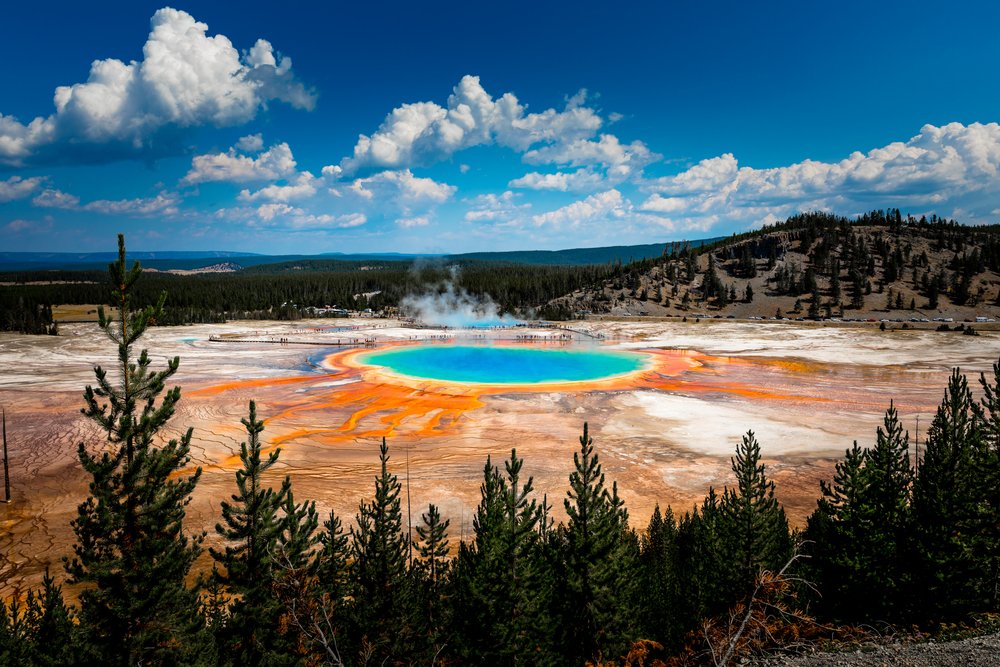
Most visitors stay on the lower boardwalk loop to see Grand Prismatic Spring, but if you’re looking for the best view available on foot, we know exactly where to go.
Drive to the Fairy Falls Trail parking lot and park your car. From there, head to the Grand Prismatic Spring lookout point, located about 0.6 miles into the Fairy Falls Trail, about a 20-minute walk one way.
From the trailhead, you’ll gain about 105 ft of elevation before ending up at the scenic overlook.
You could continue this hike all the way to Fairy Falls, which is a 5.4-mile roundtrip hike, that takes about 3 hours.
However, with limited time on this Yellowstone itinerary, I think it’s best to just hike up to the lookout point and back.
Remember: Anytime you’re hiking in bear country, carry bear spray and understand how to use it. Yellowstone is home to both black bears and grizzly bears — both are dangerous, but grizzlies are particularly aggressive (and what you carry bear spray for).
You don’t want to use bear spray unless you have to, so make noise (talk to your companions or wear a bear bell) to announce yourself when in bear country. Bears don’t like surprises!
Old Faithful
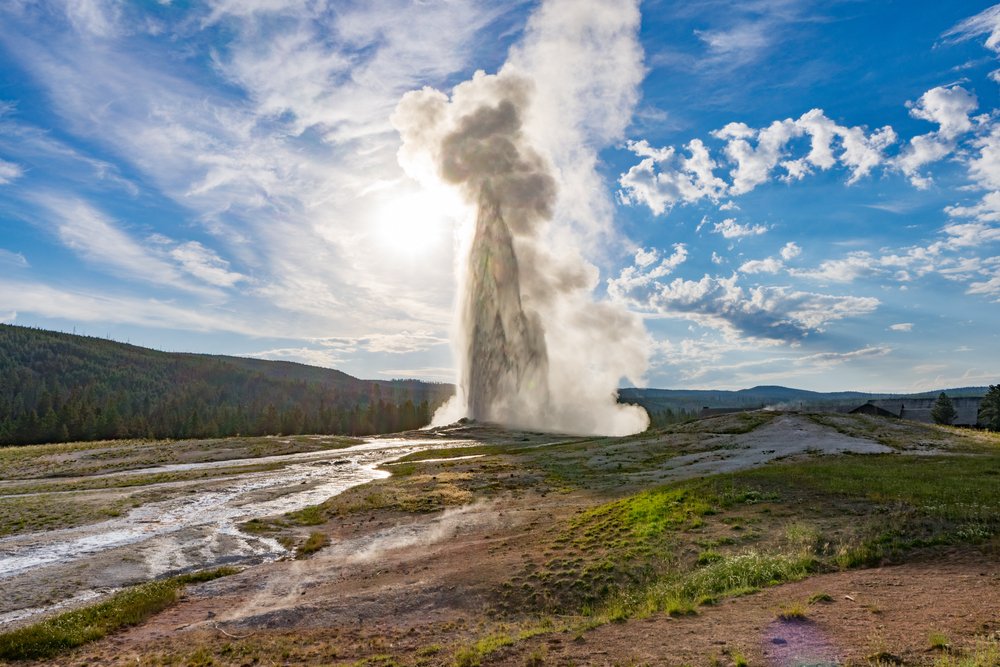
Old Faithful is named such for its predictable eruptions which make it easy to schedule a trip around.
Old Faithful is perhaps the most famous geyser in the world, so do expect crowding and lines, especially in the late afternoon when it’s most popular to visit this attraction.
It’s not the largest geyser in the park — that would be Steamboat Geyser, which is the world’s tallest active geyser — but it is the most predictable and thus the most popular to see.
The beautiful Old Faithful geyser is located in the Upper Geyser Basin, a separate part of the basin of Yellowstone than the previous springs on this itinerary.
You’ll find other geysers in the vicinity that are far less visited, such as the Morning Glory Pool, Bottomless Pit, Castle Geyser, and more.
Just outside the Old Faithful Visitor Center, there are rows of benches set in front of the geyser for a stadium-style viewing.
But… That’s not actually the best place to view the eruption of Old Faithful!
Insider tip: After checking the next eruption time in the visitor center, take the Observation Point – Geyser Hill Trail for a birds-eye view of Old Faithful!
This 2.3-mile loop is well worth the hike and will bring you past some less-trafficked thermal features like Doublet Pool and Giantess Geyser!
West Thumb Geyser Basin
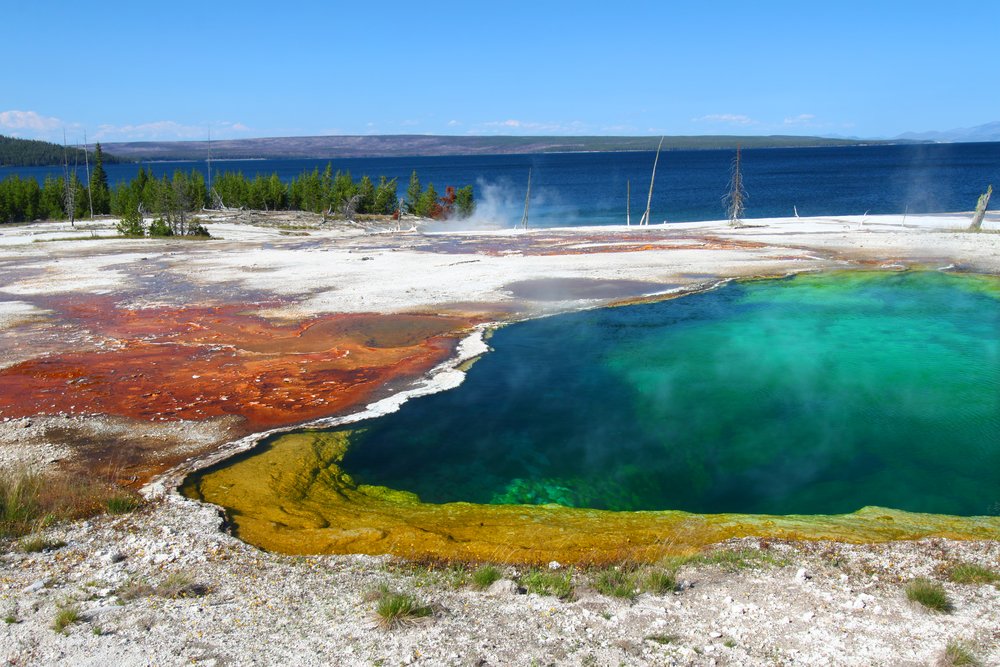
Take the boardwalk along Yellowstone Lake and check out the geysers that hug its banks.
This is also a perfect spot for a picnic lunch if you didn’t already stop for a bite at Old Faithful!
Note: If you’re getting peckish, you can stop in the Grant Village area as there are some amenities here
Hayden Valley

Hayden Valley wolves and grizzly bears on your must-see Yellowstone wildlife list? This is one of the best places to spot bears, wolves, and many other YNP residents roaming the valley.
Continue on Grand Loop road past the Yellowstone Lake, Lake Yellowstone Hotel, and the Fishing Bridge, where you can spot anglers trying to get a catch.
You’ll soon arrive at Hayden Valley, which you’ll likely notice because there are often cars pulled over here admiring the wildlife!
Be patient, scan the landscape with your binoculars, and use the pullouts off the main road for thorough searches.
Mud Volcano
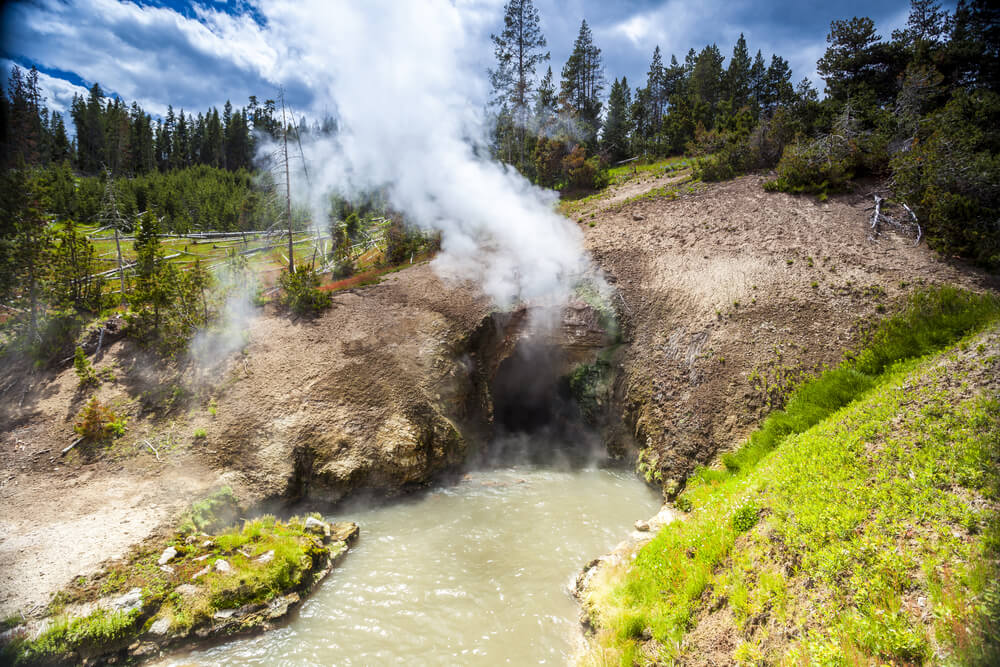
As you head north towards the Grand Canyon of the Yellowstone, you can stop off at the Mud Volcano, where you’ll see many incredible volcanic elements in one easy 0.8-mile loop trail.
Don’t miss the Dragon’s Mouth part of the loop — it’s a brief detour but it’s an incredible sight to see!
You’ll also see Mud Caldron, Sizzling Basin, Churning Caldron, Black Dragons Caldron, Sour Lake, and Grizzy Fumarole as you pass through this short, boardwalk hike.
Grand Canyon of The Yellowstone
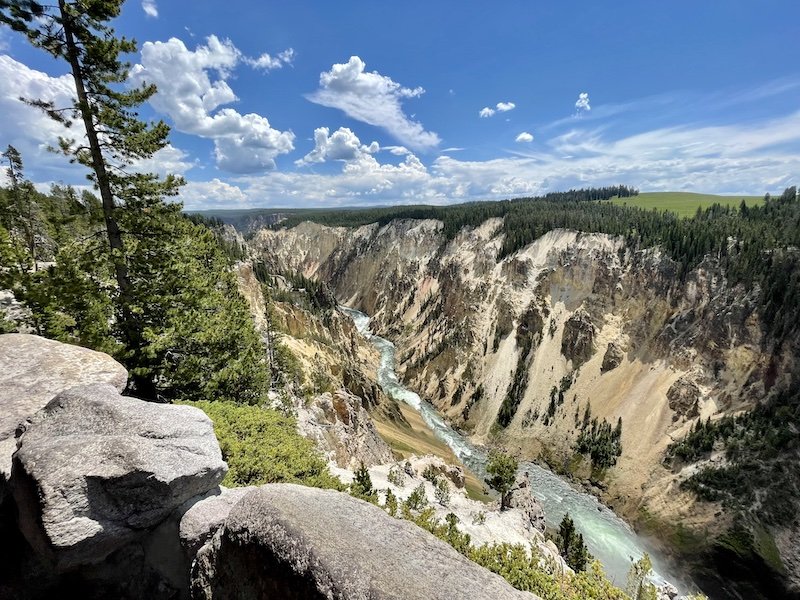
As you approach the Canyon Village area, turn right onto South Rim Drive towards Artist Point.
This is one of the most iconic viewpoints of the 308 ft tall Lower Falls. You definitely don’t want to miss the view on this short 0.1-mile paved walk!

Want a closer look? Take Uncle Tom’s Trail down to a viewpoint of the Lower Falls. Just remember that there are 328 steps: so easy to take down, so much harder to take back up!
There is also the shorter but still impressive Upper Falls, which are 109 feet but still massively impressive. Stop at the Upper Falls View for great photos.
Gibbon Falls
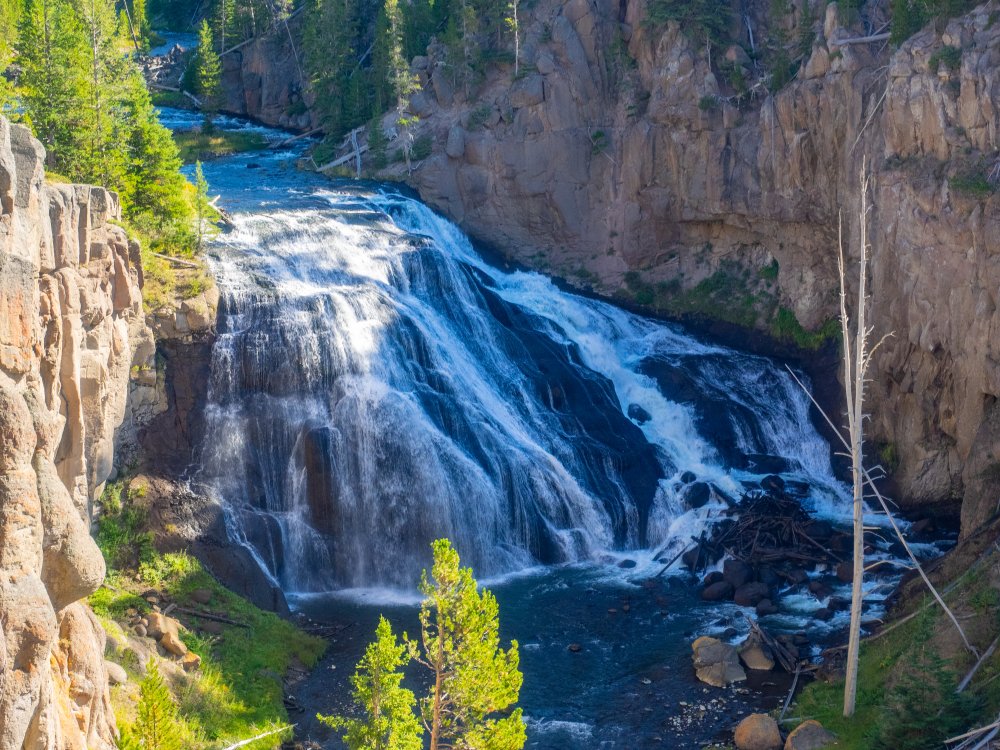
The 84 ft Gibbon Falls is another must-see waterfall. With its convenient location right off the road, there’s no reason not to stop and take a look!
There’s also an easy 0.5-mile roundtrip walk down to the falls if you’d like to get closer.
For a convenient starting point on your second day, we recommend camping at Madison Campground or Norris Campground.
If camping isn’t in the books for this Yellowstone road trip, there are cabins and hotel accommodations in the Canyon Village area near the Grand Canyon of the Yellowstone. Get a good sleep to tackle the next day of this Yellowstone itinerary!
Day 2 of Your Yellowstone Itinerary

There’s still so much to see, and an early start gives you a better chance for some exciting wildlife sightings!
Today, we are going to visit the best of the Upper Loop.
We’ll start at the Norris Geyser Basin Area and head North towards Mammoth Hot Springs to take the loop clockwise.
Obsidian Cliff
This National Historic Landmark is a neat way to start the day!
The obsidian from these cliffs was first collected by hunters and gatherers over 11,000 years ago and has been traced across the country along historic trade routes. Obsidian was once used to make arrow and spear heads!
Sheepeater Cliff
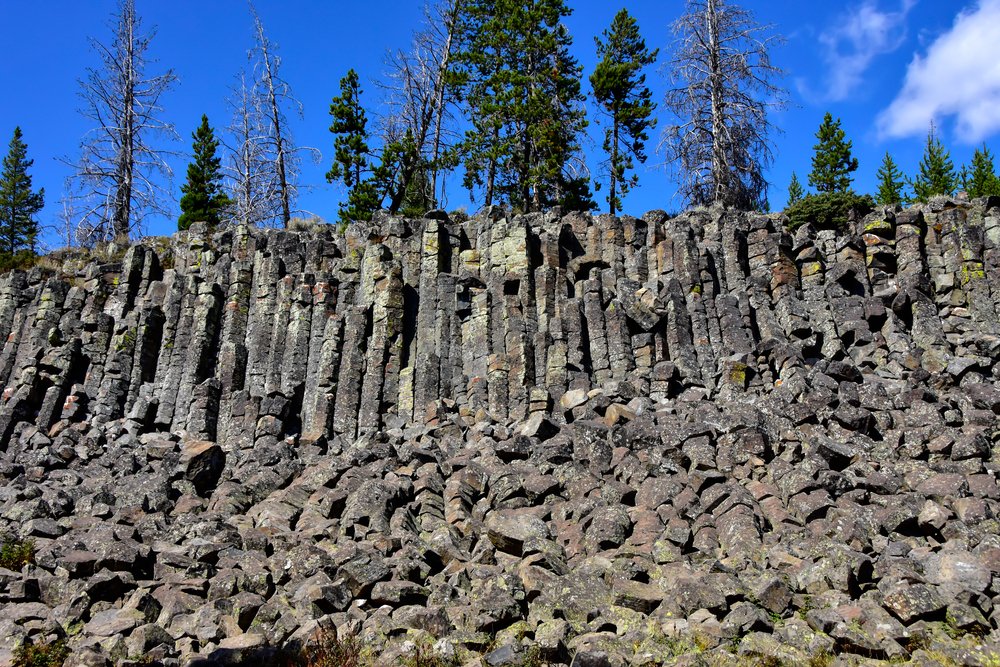
Here’s another interesting geological site that’s worth the stop.
If you’re ready to give your legs a morning stretch, take the fishing trail out of the picnic area. Follow the trail about for about 0.5 miles to get awesome views of the Gardner River and a small falls.
How’s that for a morning stretch?
Mammoth Hot Springs
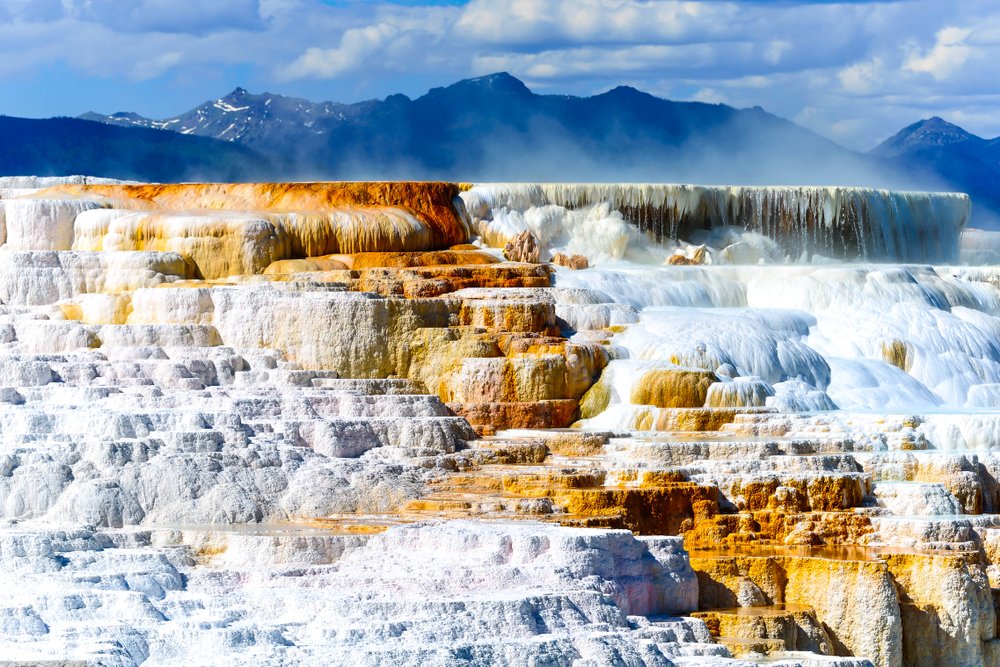
Park in the Lower Terrace Parking Area and hop onto the intricate boardwalk paths that weave around the many hot springs.
It’s easy to spend over an hour exploring these intriguing thermal features formed by travertine deposits over the millennia!
This is also a popular area to spot elk!
Look in the grass below the terraces and around the cone-shaped Liberty Cap, which is one of the area’s most prominent feature standing at 37 ft tall.
Optional: Boiling River
A 7-minute drive from Mammoth Hot Springs, the Boiling River is one of the few hot springs in Yellowstone that you can actually swim in!
There is a designated soaking and swimming area where a hot spring mixes and mingles with the Gardner River, creating a bath-like temperature where you can soak and enjoy the geothermal features of Yellowstone for yourself!
At the time of the last update (6/2/2021), this hot spring is still closed due to the pandemic, but check the NPS website for updates to see if that’s changed!
Blacktail Plateau Drive

After you’ve taken a thorough tour of the Mammoth Hot Springs, head west to continue on the Upper Loop.
This section is famous for wildlife viewings, so keep your eyes peeled. It’s never a bad idea to take the scenic route! Right? Turn onto the Blacktail Plateau Drive and get off the main road for 6 miles.
Petrified Tree
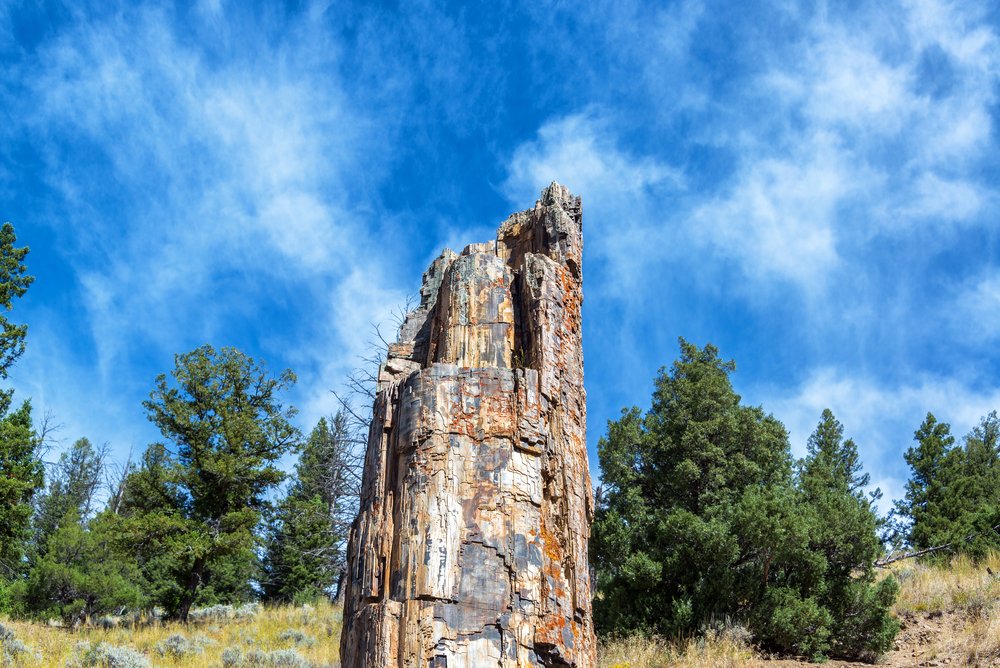
Almost immediately after rejoining the main road, the turnoff for the Petrified Tree will be on the right, part of the Tower-Roosevelt area of the park.
Is it a tree or a rock? Worth the very short walk up the trail to get a closer look!
Tower Falls Optional Detour
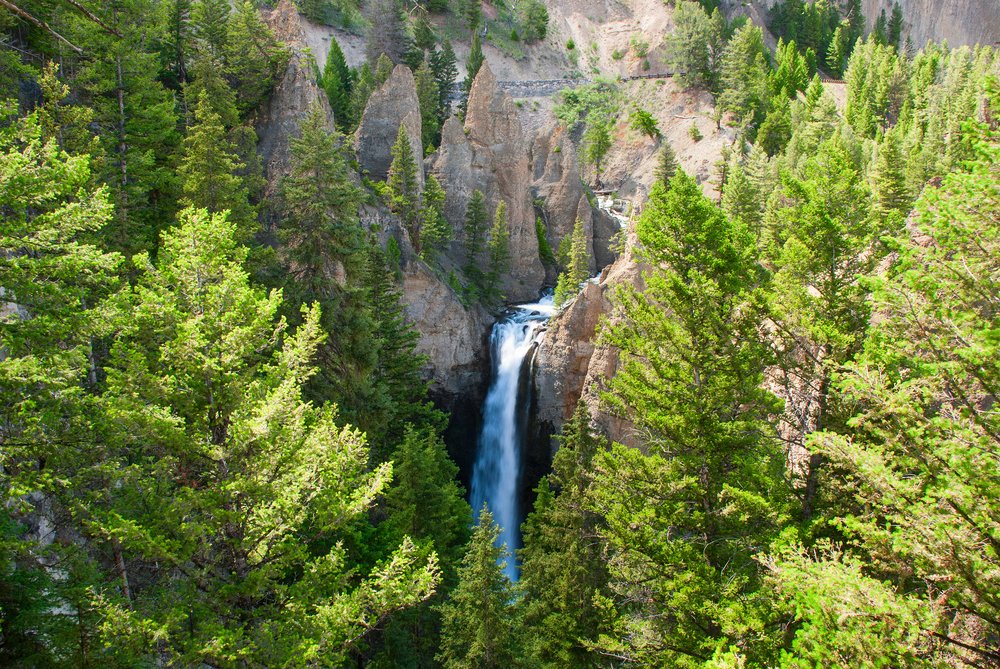
If you’re interested in checking out the 132-foot drop of Tower Falls, it’s only a short detour south at Tower Junction. The rock pinnacles framing the massive falls truly make it a sight to see. The trail to the viewpoint is less than one mile round-trip.
After the falls you will head back to the intersection and turn towards Lamar Valley… Have your binoculars in hand!
Insider tip: The Yellowstone River Picnic Area in the Lamar Valley is a great spot to stop for lunch with a side of wildlife spotting. It even comes equipped with a quiet scenic trail down to the Yellowstone River, where you might get a chance to see bald eagles.
Lamar Valley

Lamar Valley is a wildlife lover’s dream. Take your time driving through this section and use pullouts frequently to scan the hillsides with your binoculars or scope.
Bison and antelope sightings are almost a guarantee, but you’ll have to be very observant to spot the resident bear and wolf packs.
For a short hike following your wildlife safari, check out Trout Lake. The trailhead is a small signed pullout on the main road. This lollipop loop trail is only 0.6 miles, and offers beautiful mountain views!
Beartooth Highway

Note: As of the April 23, 2022 update, the NPS website states “The Beartooth Highway (US-212) between the Long Lake barricade, near the Top of the World store, and the Montana/Wyoming state line is closed for the season.” Road closures change frequently, so do check back!
As you approach Cooke City after your hike, prepare to say goodbye to Yellowstone National Park as you exit via the scenic Beartooth Highway via the Northeast Entrance to head towards the fun mountain town of Red Lodge!
This is where we leave you to discover your next adventure — hopefully you enjoyed this Yellowstone itinerary!
If You Have More Than 2 Days in Yellowstone…
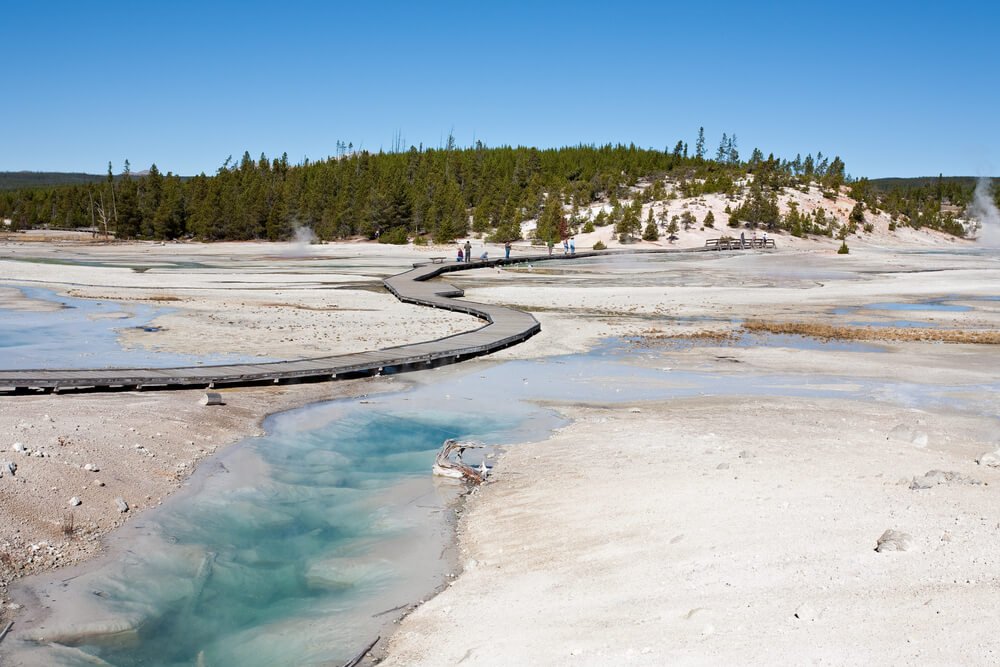
I’d suggest getting off the beaten path (no, not literally — stay on those boardwalks, for your sake and the park’s!) and checking out some of the more sedate areas of the park.
One such area is Porcelain Basin, part of the Norris Geyser Basin area on the West side of the park. There are two loops which will have you see all of the Porcelain Basin area, and the total walking distance for tackling both of the loops is only 1.1 miles.
Tired of all the driving and want to stretch your legs? Take a hike up Bunsen Peak, a 4.6-mile roundtrip hike that is moderate in difficulty but outstanding in views.
Enjoy views of Mammoth Hot Springs, the Yellowstone River, and other stunning sites from a bird’s eye view on this lesser-visited hike.
Another great hike is up Mount Washburn starting from Dunraven Pass, but this is for more serious hikers, as it’s about 7 miles with 1,200 feet of elevation gain while already at a certain altitude within the park!
What to Pack for 2 Days in Yellowstone

I have a full guide to what to pack for a road trip here, but here are the quick packing essentials for a 2-day itinerary for Yellowstone.
Travel Guides: While I’ve given you as much information as I can in this info-packed Yellowstone itinerary, there’s no denying that a dedicated travel guide does it better as they just have so much more time to dedicate to research! Combine our firsthand experience with a travel guide like this Moon Yellowstone & Grand Teton guide for a more epic adventure.
Binoculars: You’ll absolutely want a pair of good binoculars handy for all the wildlife spotting you’ll be doing! For an affordable option, I recommend these. If you want to take your wildlife-watching up a notch, I suggest these higher-quality binoculars.
Bear Bell for hiking: Clip this bear bell onto your belt/hiking pants/bag/etc. and you’ll be making a slight noise while you hike — keeping you safe from grizzlies! I also recommend bear spray if doing any hiking off the boardwalks.
Layered Clothing: Even if you are visiting Yellowstone in summer, due to the high elevation, it can get chilly at night so plan accordingly!
You’ll want at least 2 shirts (synthetic or wool, long and/or short sleeve depending on the season), 2 pairs of leggings or pants, 2 pairs shorts, 1 fleece outer layer, a waterproof jacket, beanie, gloves, and 3 pairs of socks.
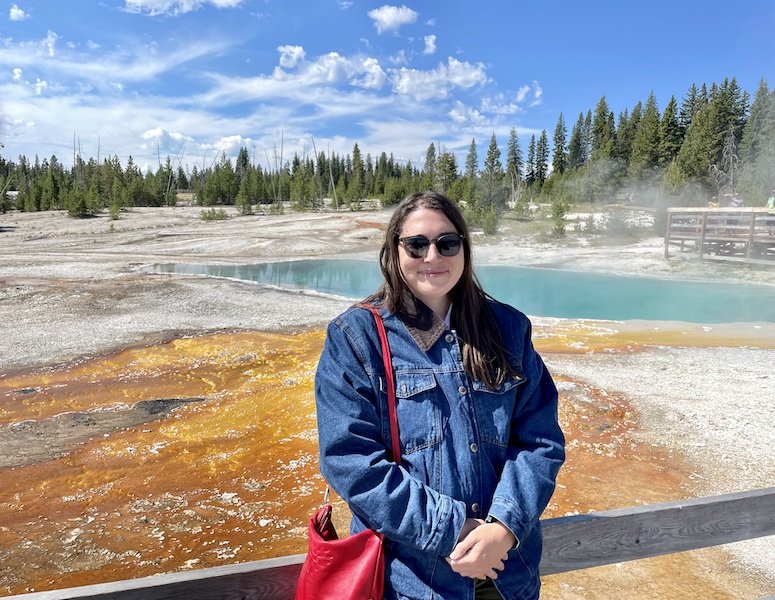
Comfortable Footwear: You can go with sneakers or hiking boots (I love my Ahnu Sugarpine boots for women, and for men, I suggest theKEEN Durand boot.) However, if you pick sneakers, make sure they have good traction and are comfortable enough for 2-3 mile hikes.
Sunscreen: At 8,000 feet elevation, it’s so much easier to get sunburned even on a cloudy day (I learned this the hard way in Quito, Ecuador!). Bring and wear sunscreen every day of your trip, and be sure to reapply it every couple of hours. I like this chemical-free organic sunscreen.
Sunhat: I recommend a packable hat like this one which has a strap. It won’t blow off in gusts of wind (Yellowstone can get windy — it’s that high elevation!) and you can easily wear it on your back when you don’t feel like wearing it on your head.
Day pack: A compact day pack is helpful to have when in Yellowstone so you can easily put everything you need accessible and handy. I like this inexpensive and lightweight Osprey day pack.
Snacks: None of these Yellowstone hikes are particularly intense, but you should have some snacks just in case you get hungry and don’t want to waste time on your Yellowstone itinerary sitting down for a long lunch. Pack or pick up a picnic lunch or have plenty of snacks for the day. I recommend protein bars (I love CLIF bars), nuts, or other high-density snacks that give you a lot of energy for their weight.
Camera: I use and love my Sony A6000! It’s mirrorless, so it’s lightweight and perfect for a high-quality camera that won’t weigh your pack down. I suggest bringing a zoom lens for wildlife and a wide-angle lens for landscapes.
First aid kit: Don’t let things like blisters or scrapes ruin your Yellowstone trip! I recommend tossing a first aid kit like this HART Weekend First Aid kit in your day bag. It’s lightweight, but if you ever need it, you’ll be so glad to have it.
Headlamp (and extra batteries): If you want to do any sunrise or sunset hiking, I recommend bringing a headlamp like this Petzl headlamp.
Water filter bottle: While there are water fountains around Yellowstone, I still suggest having a water bottle with a filter so you can fill up anywhere there’s a water source!
There are a wide variety of water filtration systems and treatments, but I love the GRAYL Geopress, which allows you to filter water from any source — perfect for filling up on a hike if you see water. It’s compact and easy to use and filters out 99.99% of microplastics, viruses, bacteria, and particles.
Emily is a freelance travel and outdoor recreation writer from Big Sky, Montana. Her adventurous spirit has led her to the high peaks of the Sierras and the largest wilderness areas in the lower 48. When she’s not writing, Emily can be found backpacking, road tripping to outdoor destinations, climbing, or rowing whitewater.
